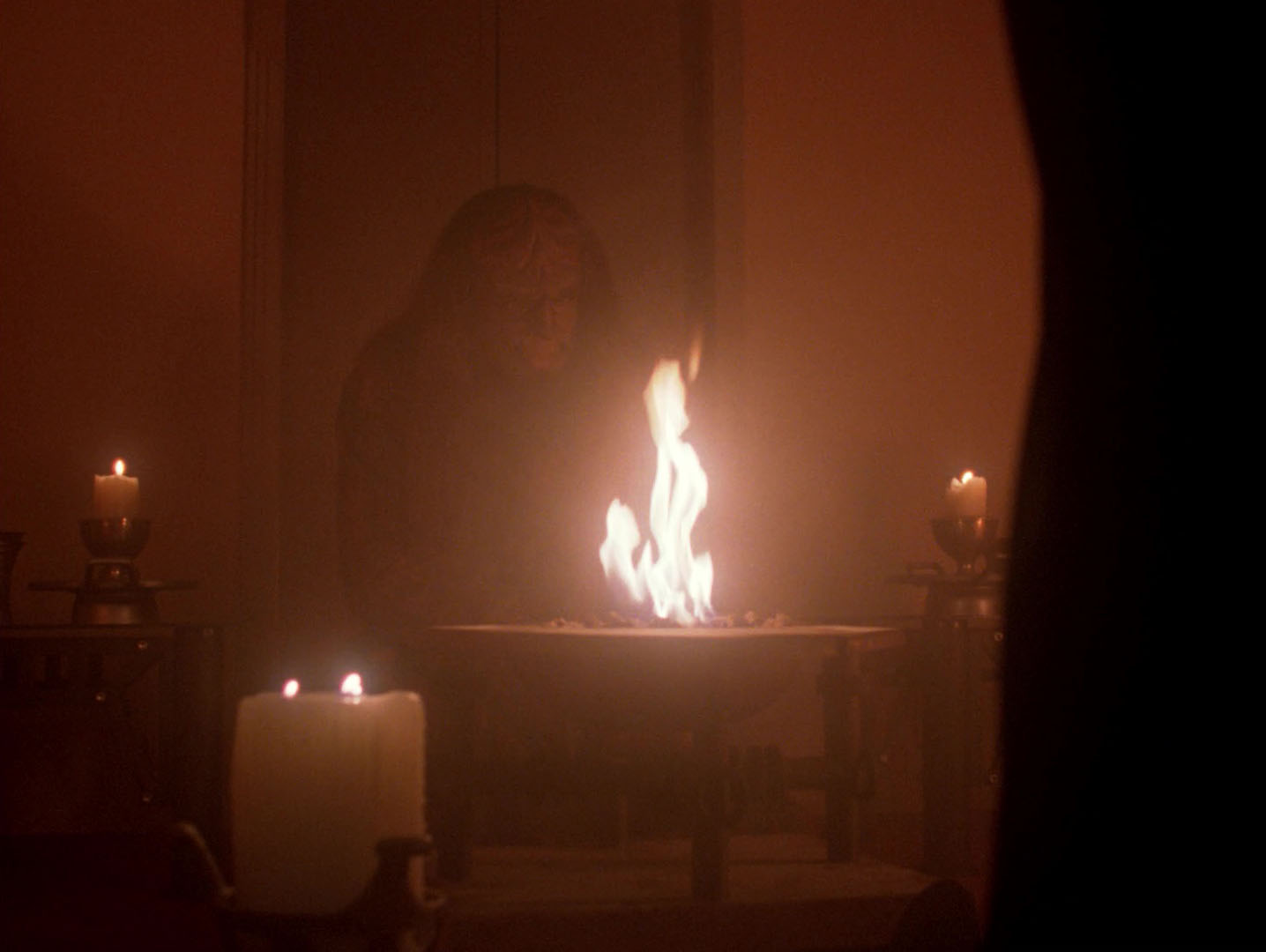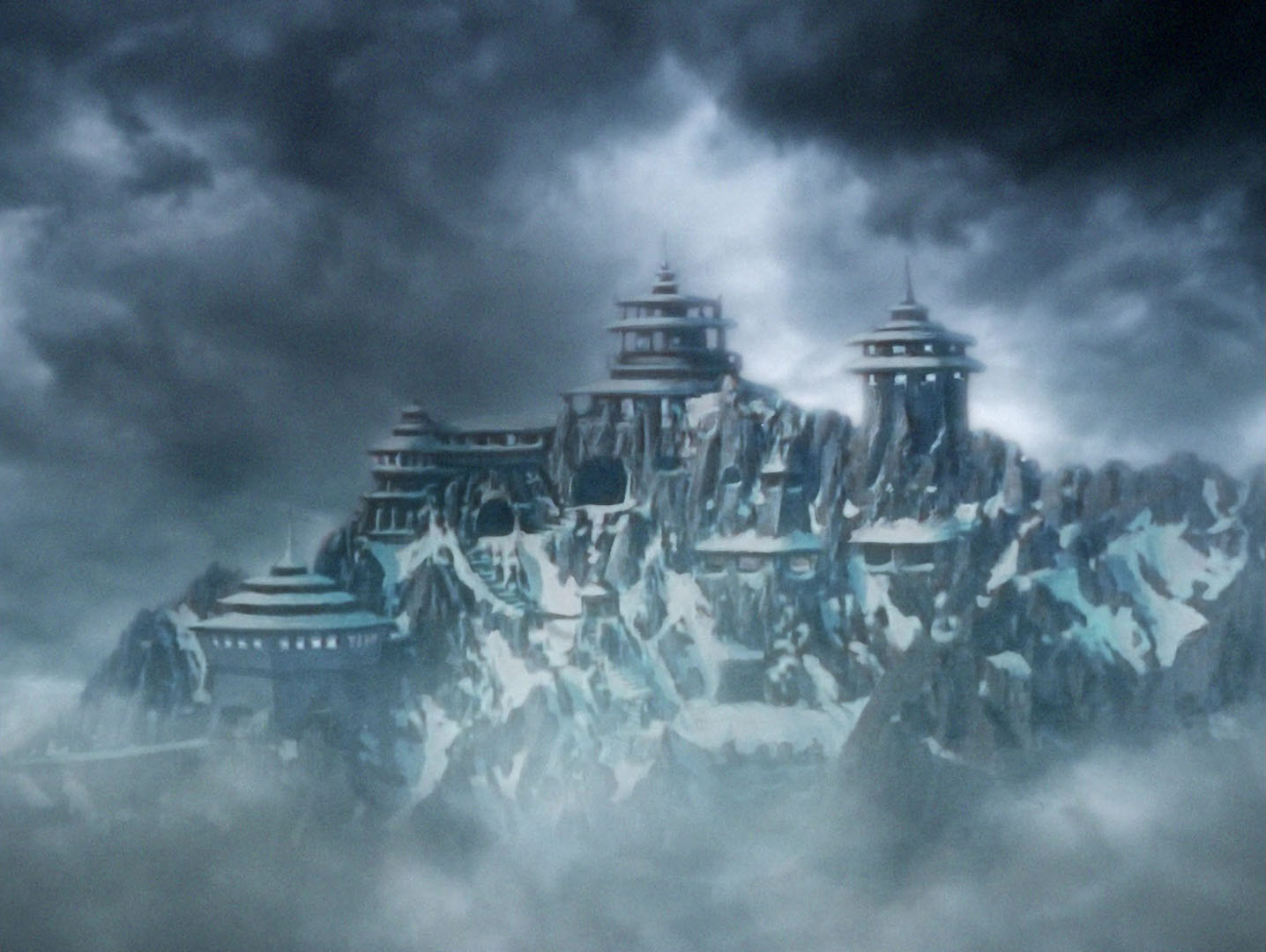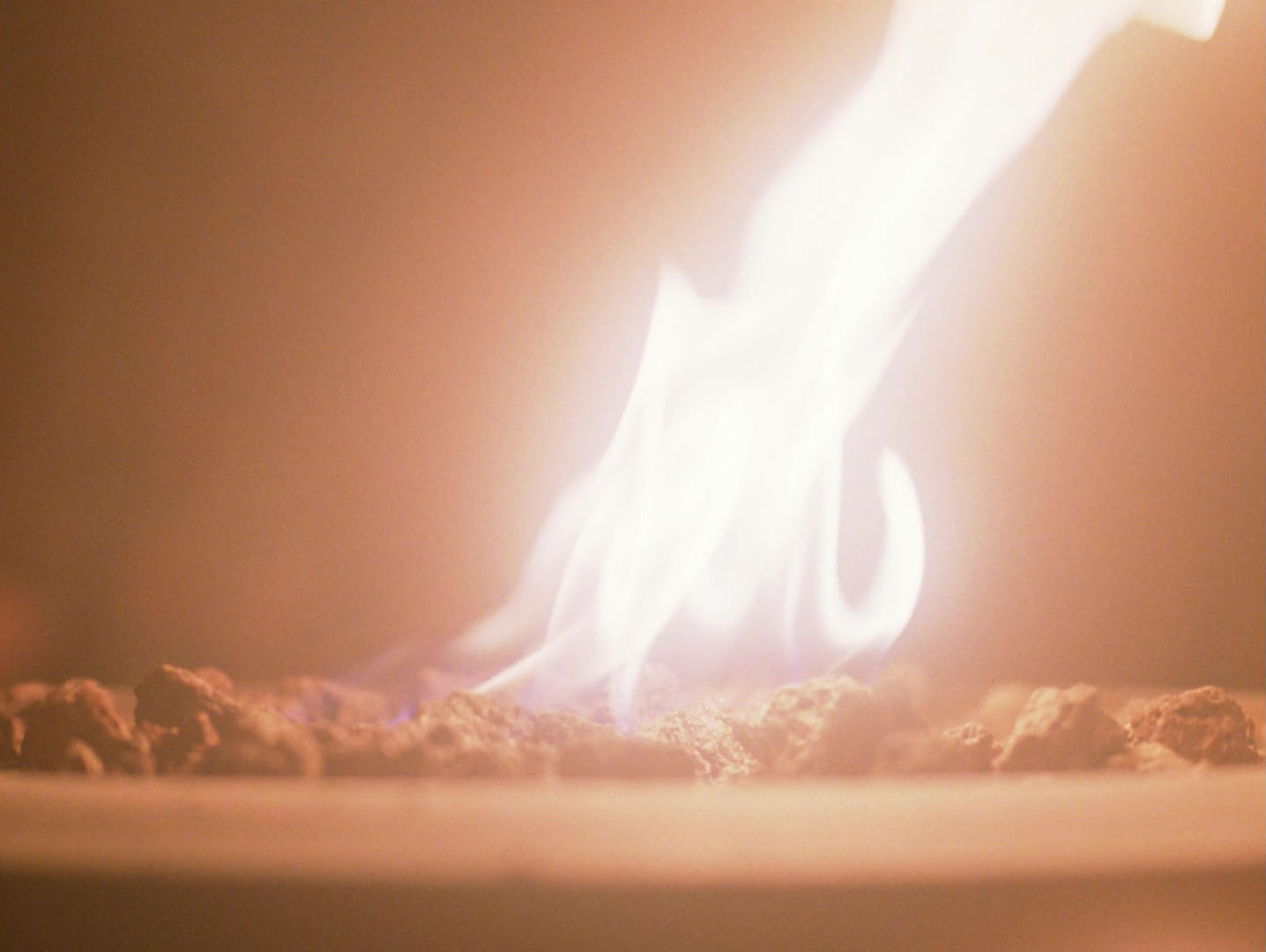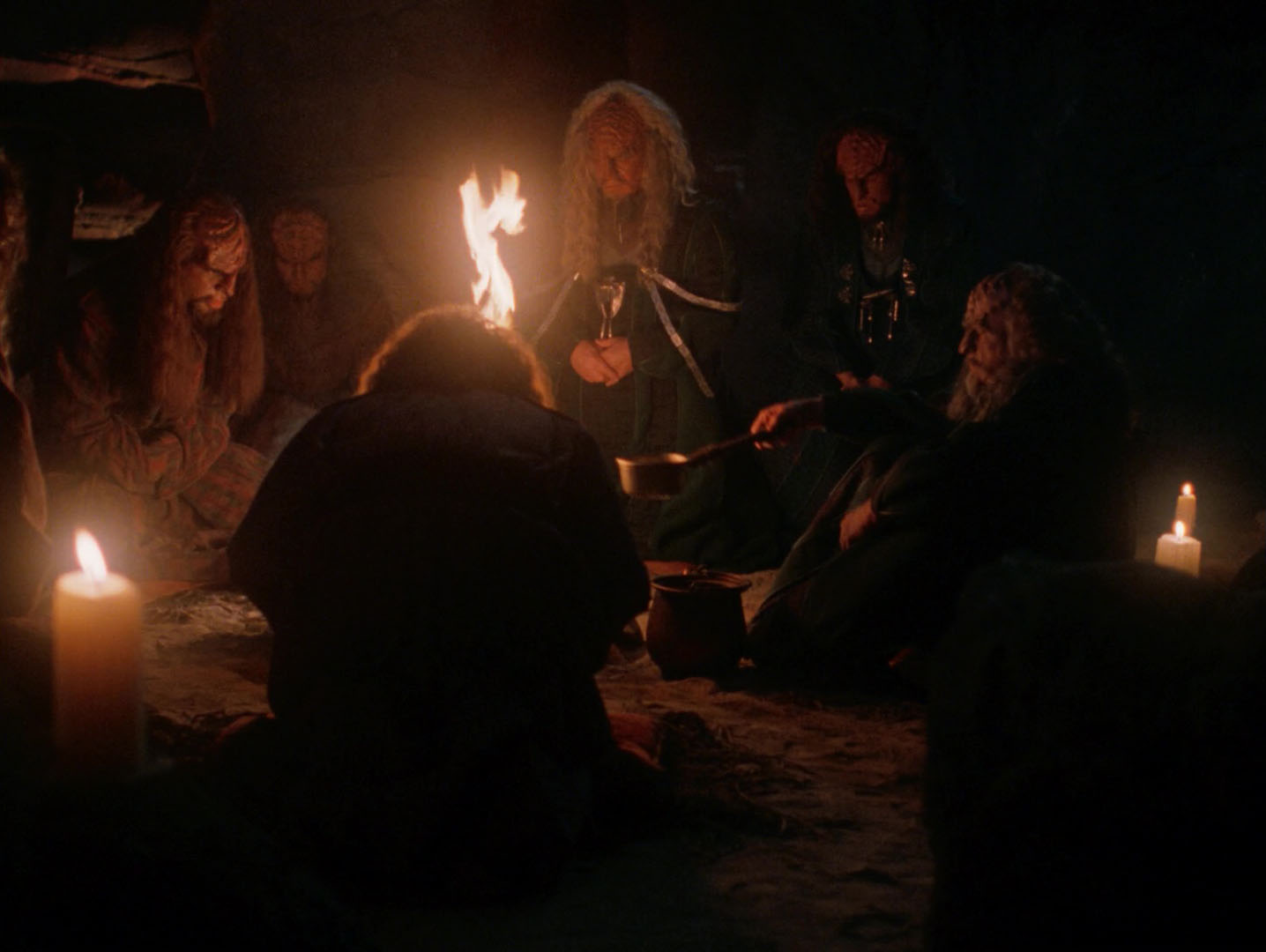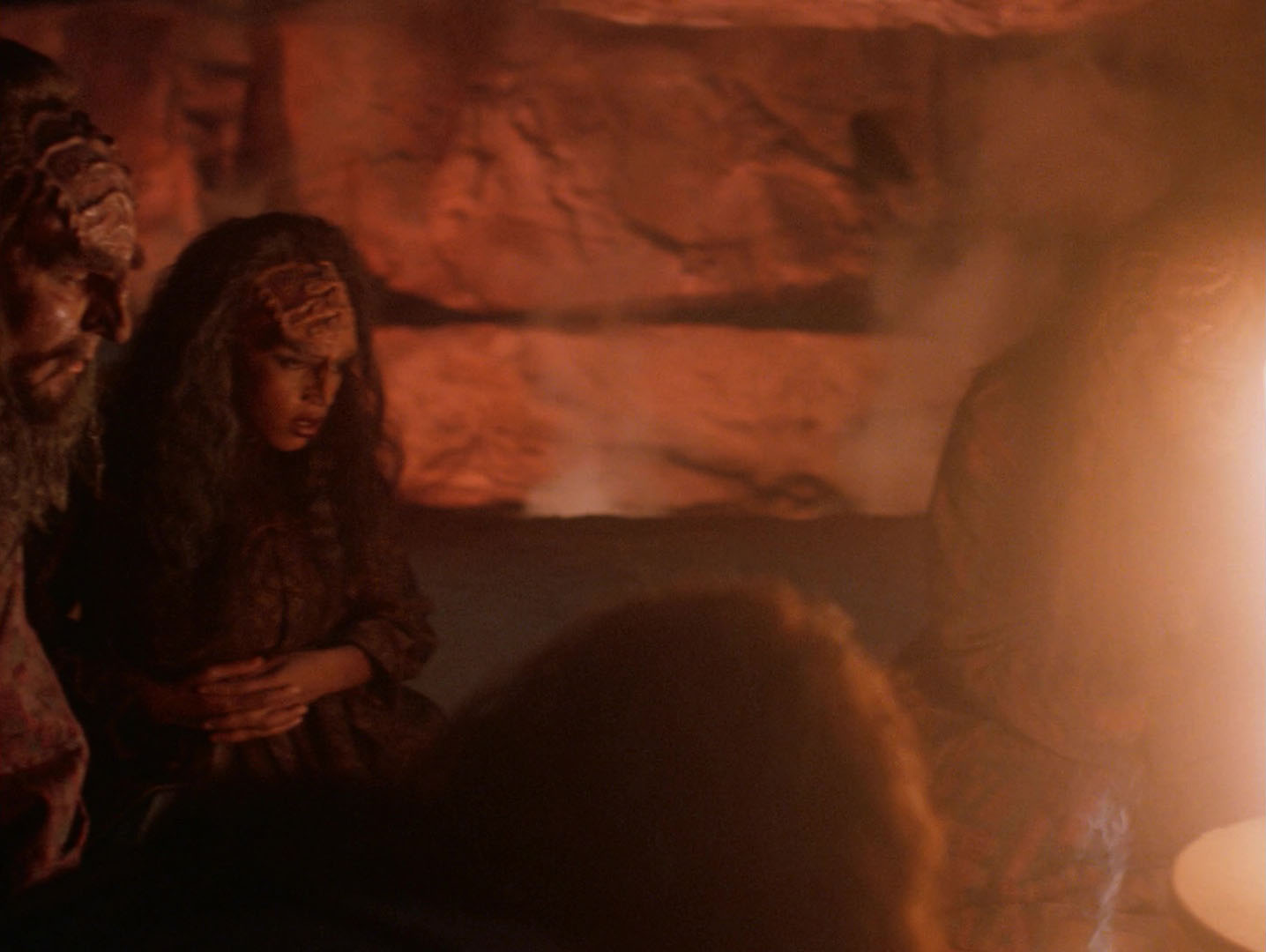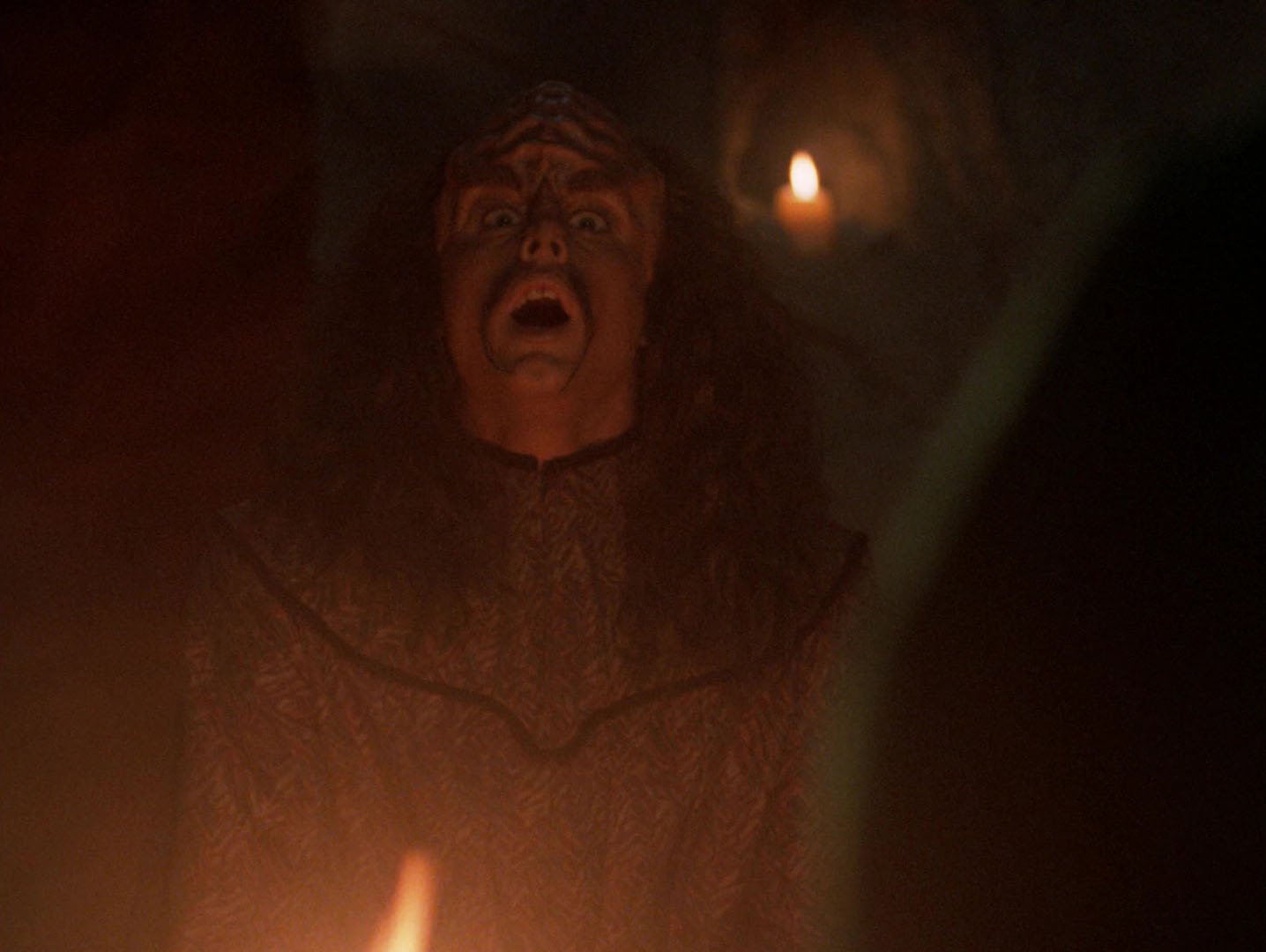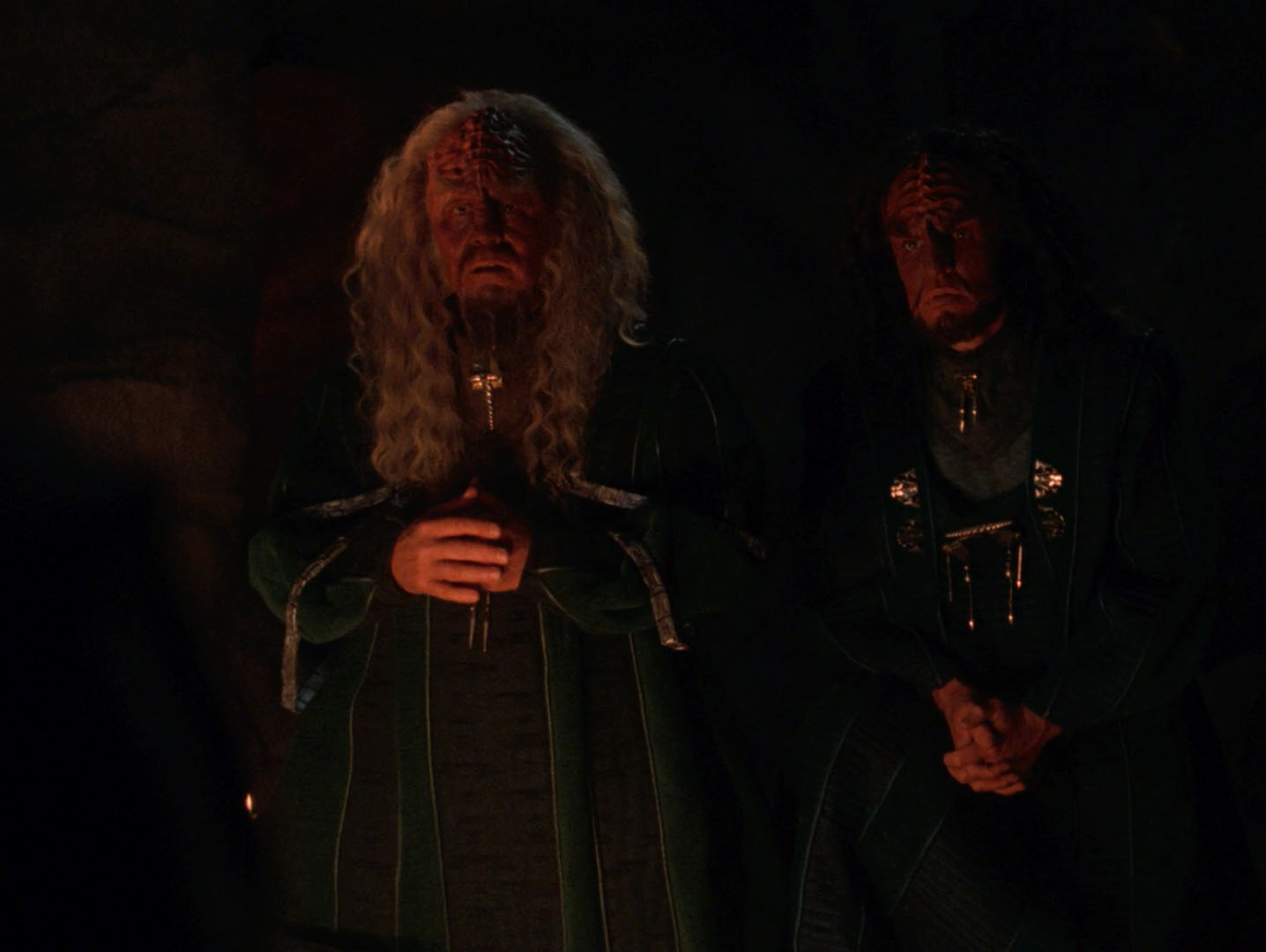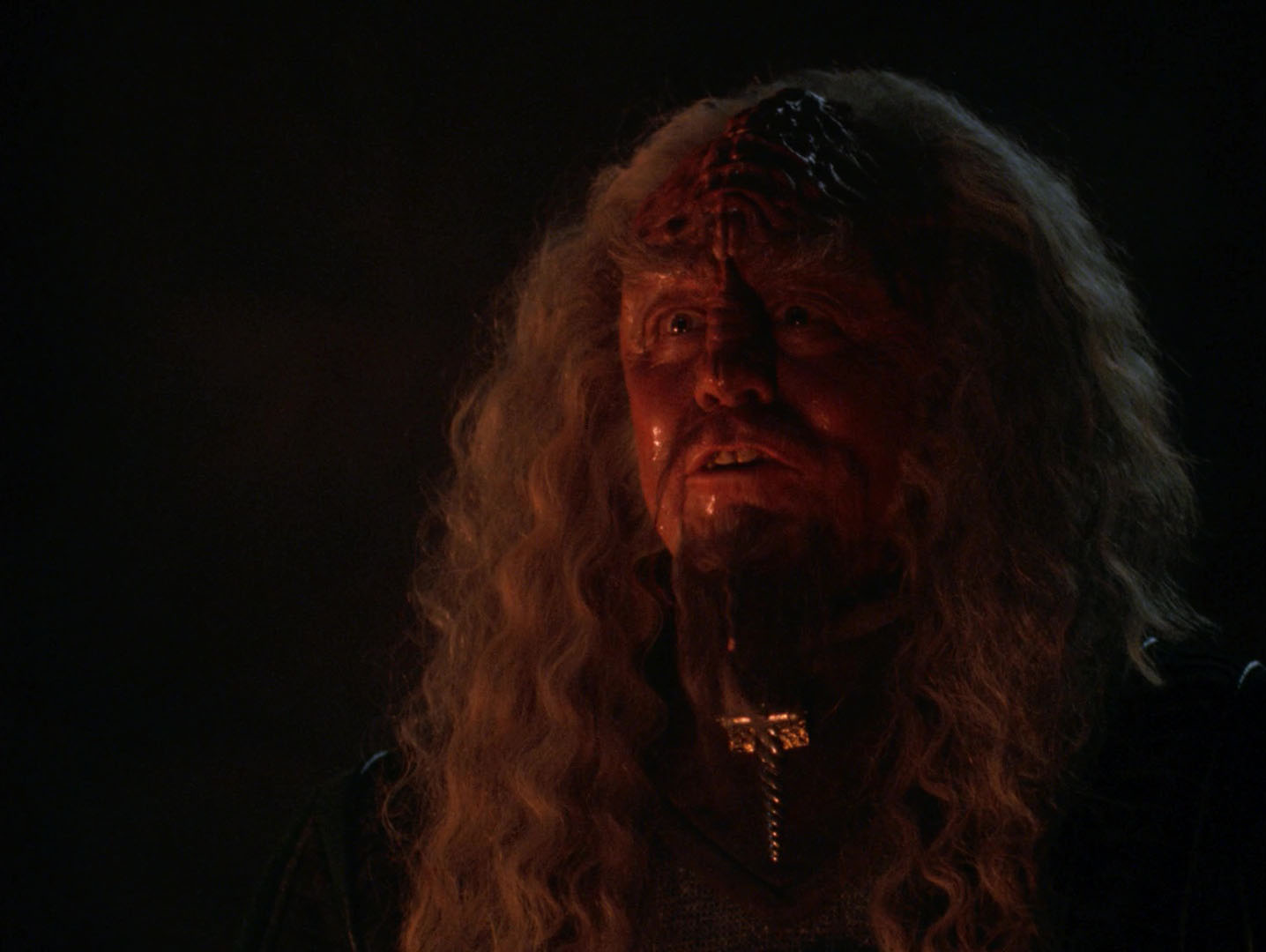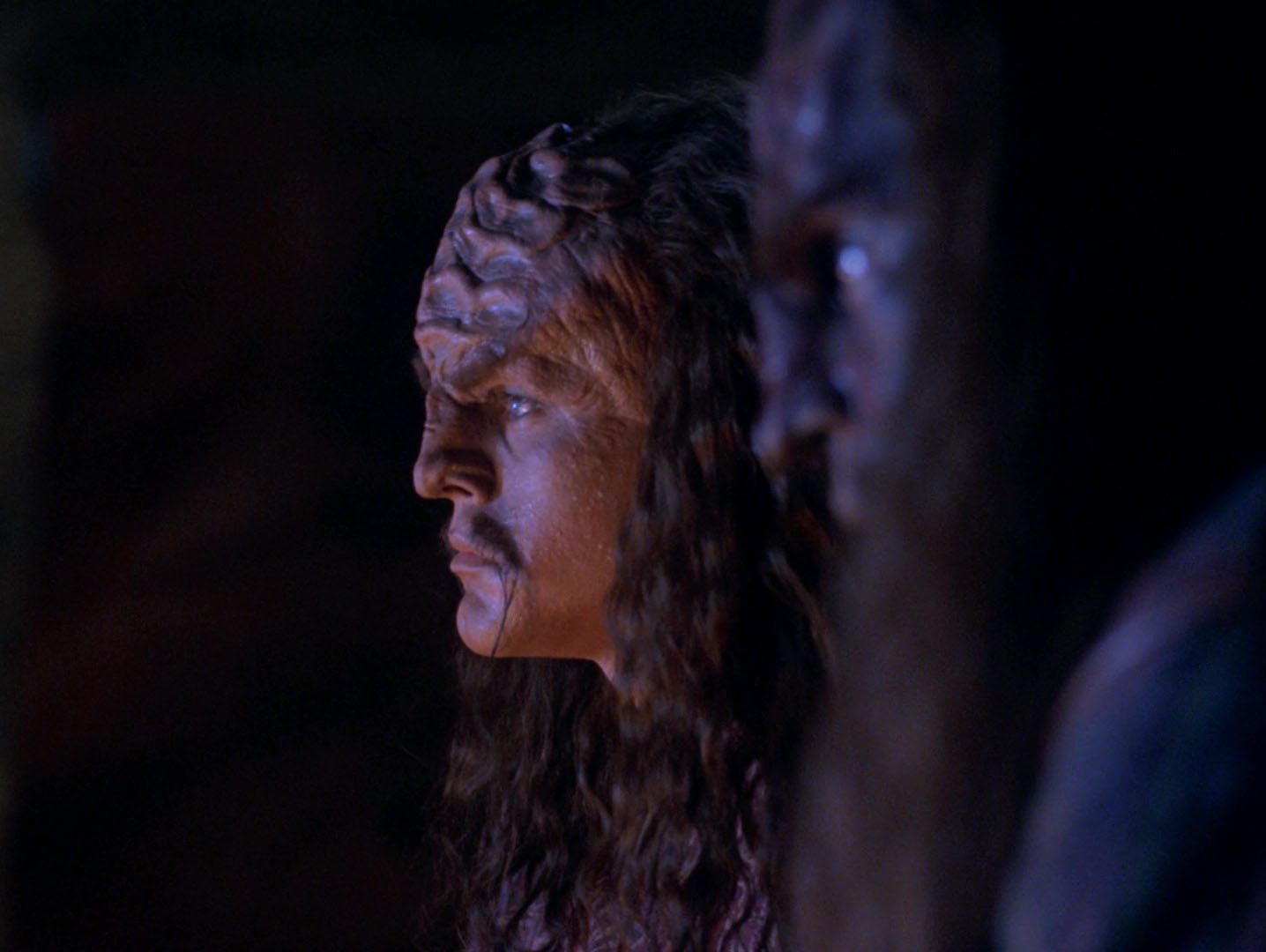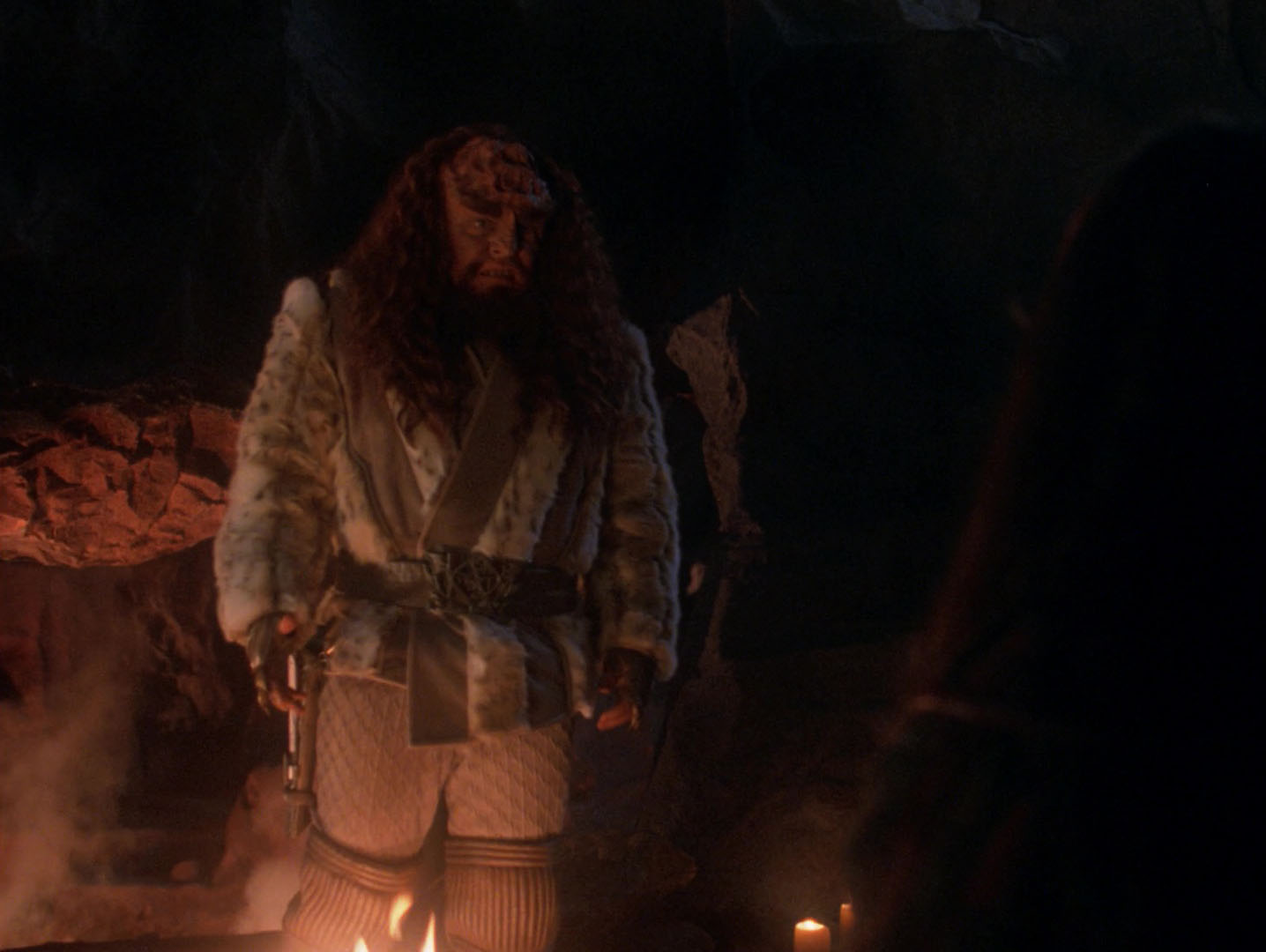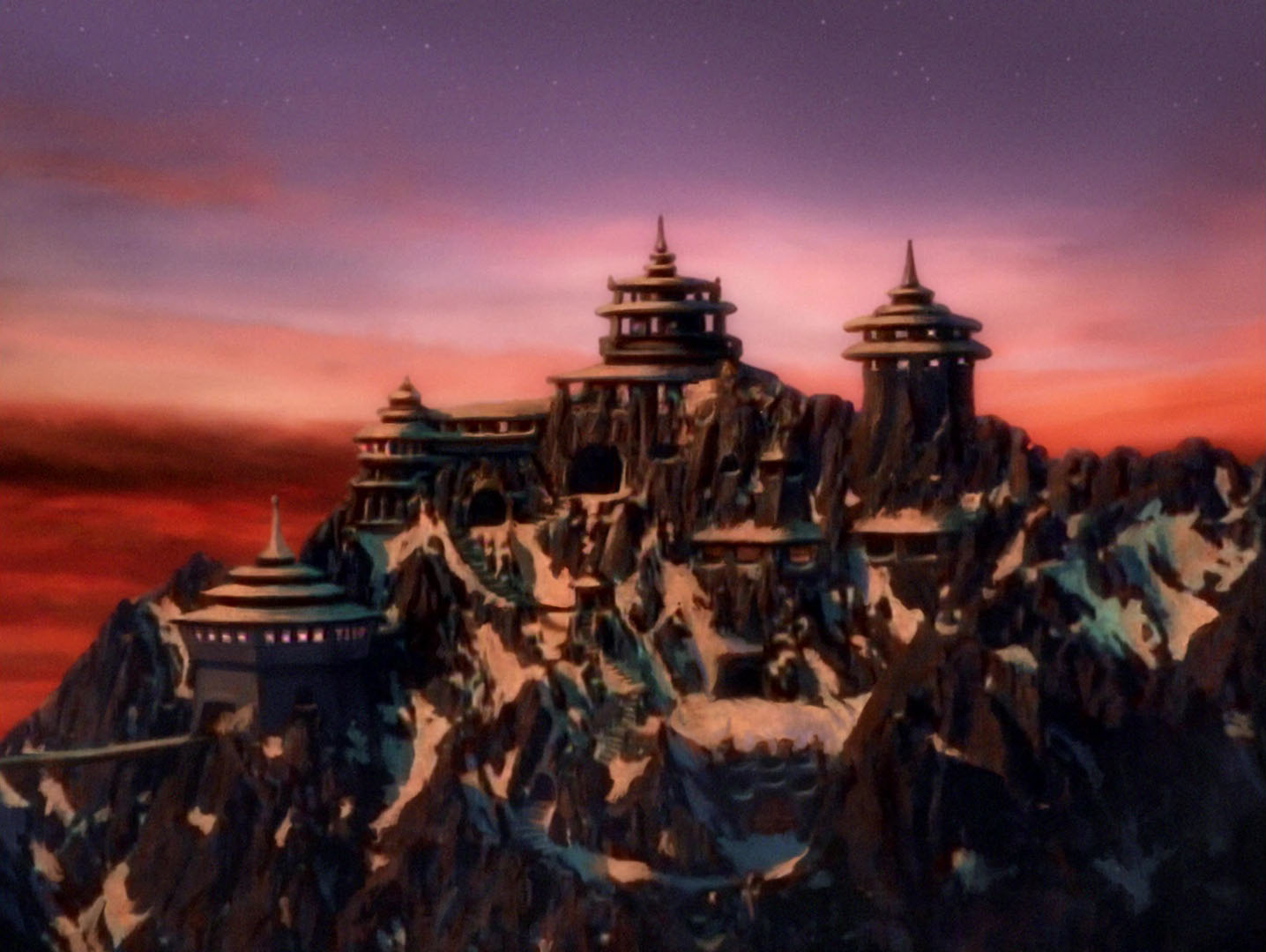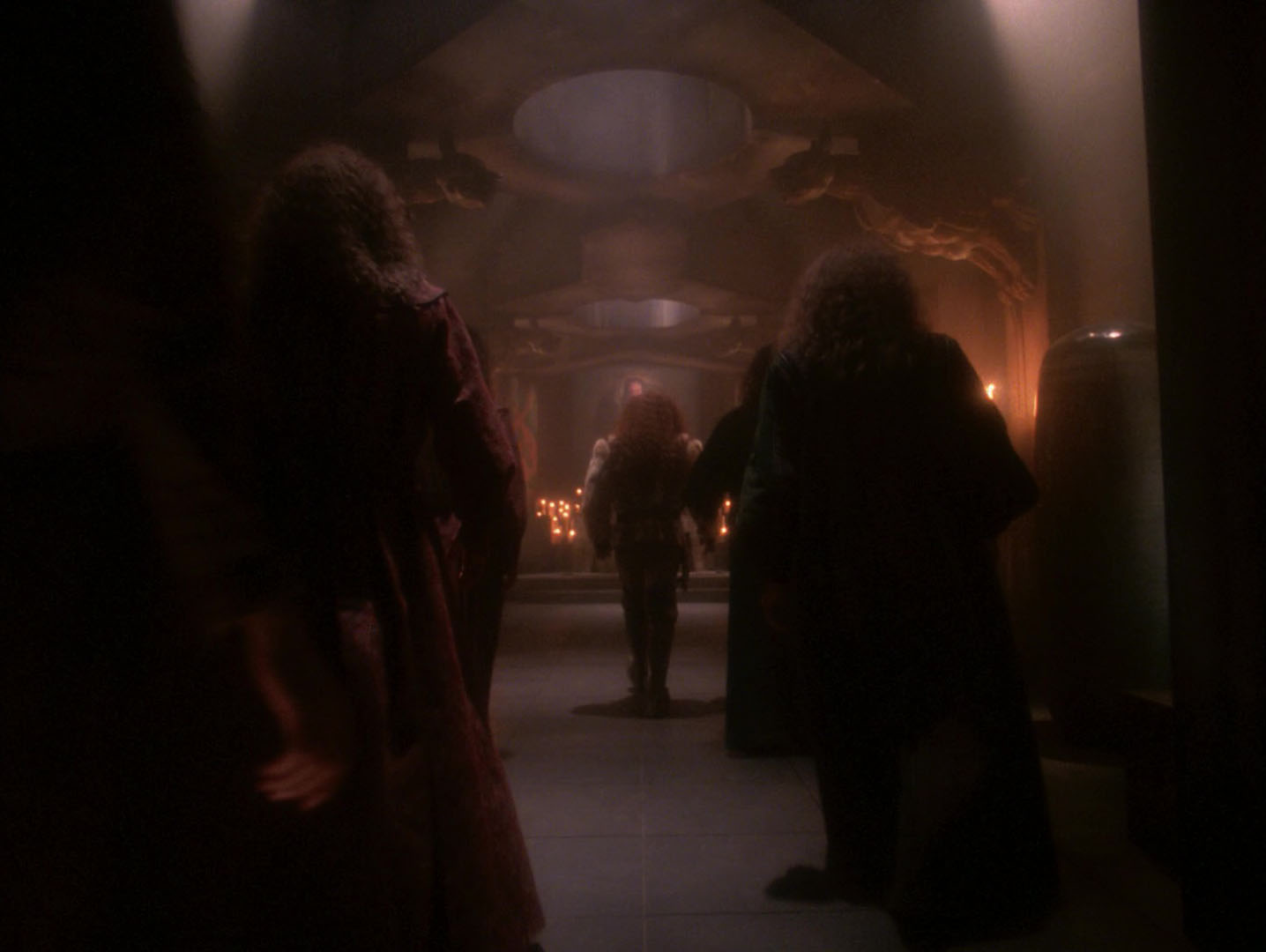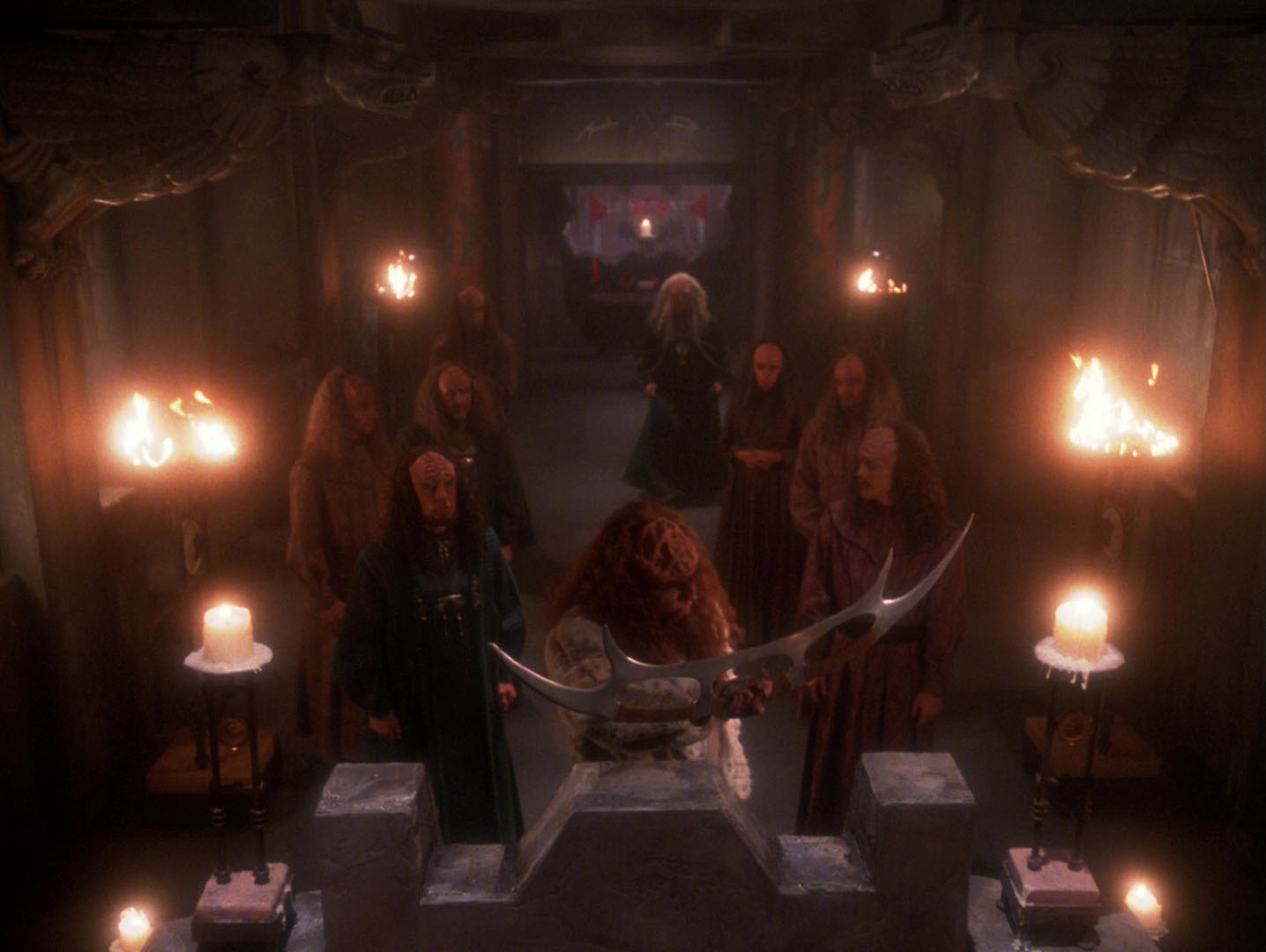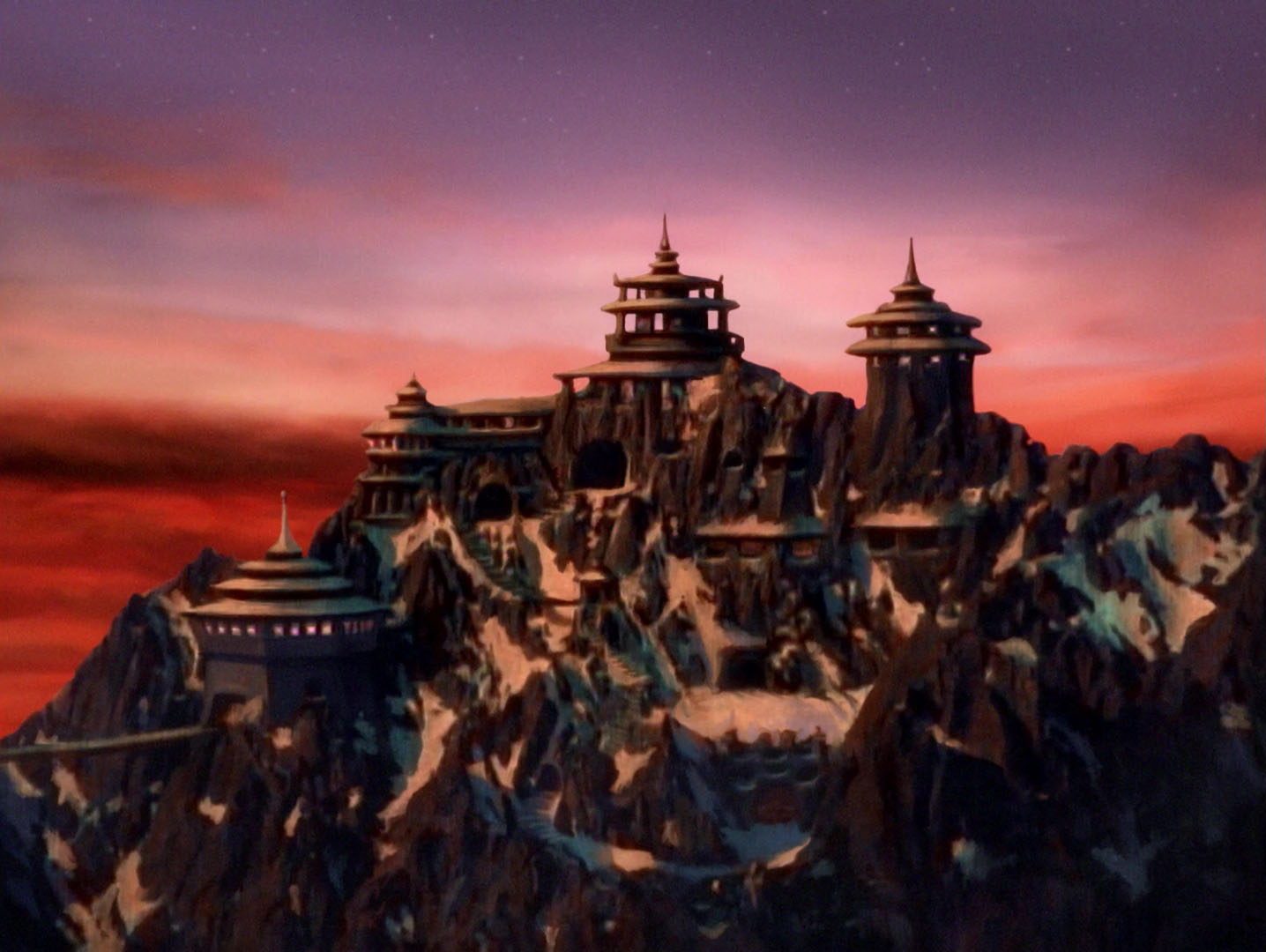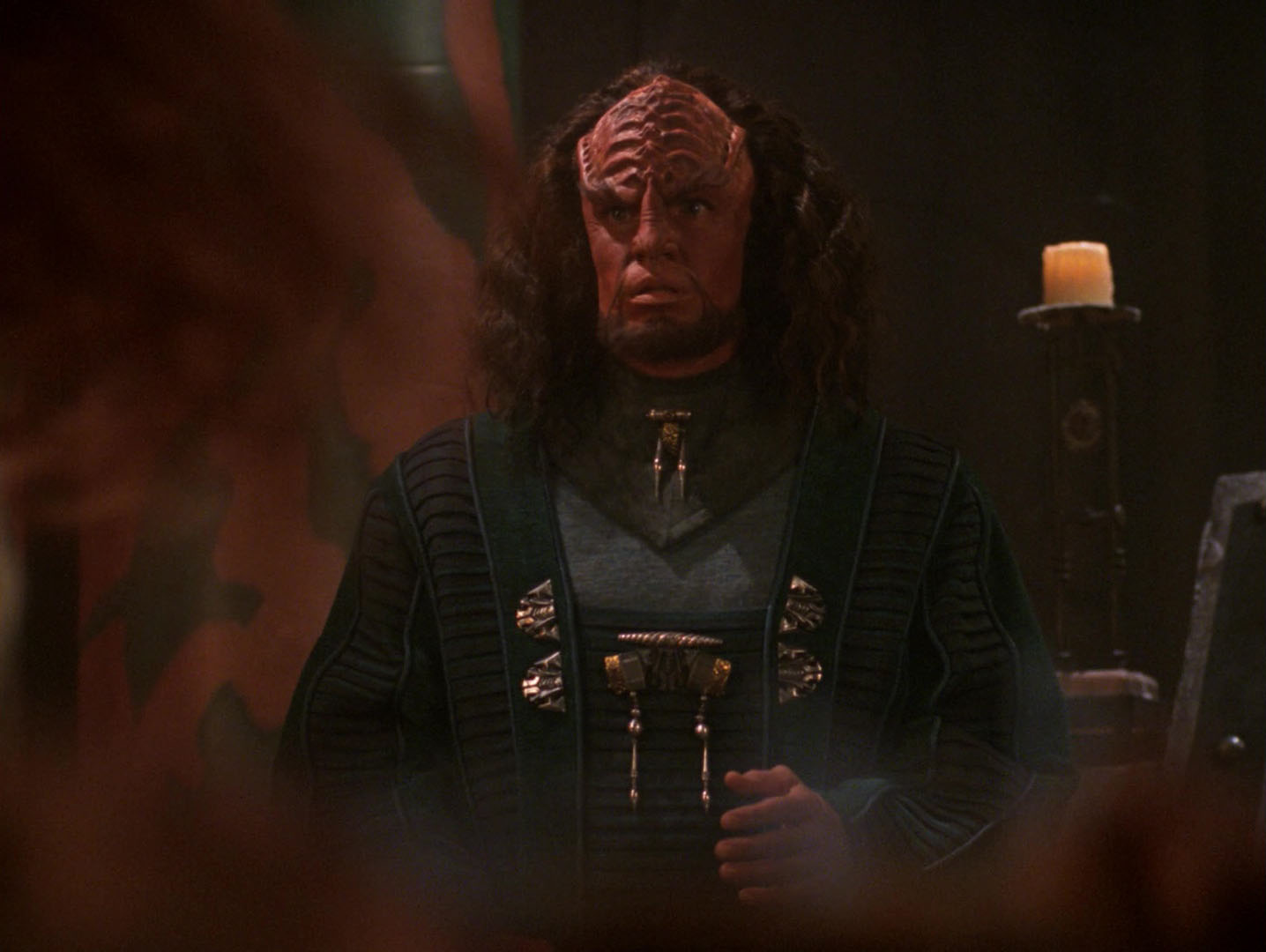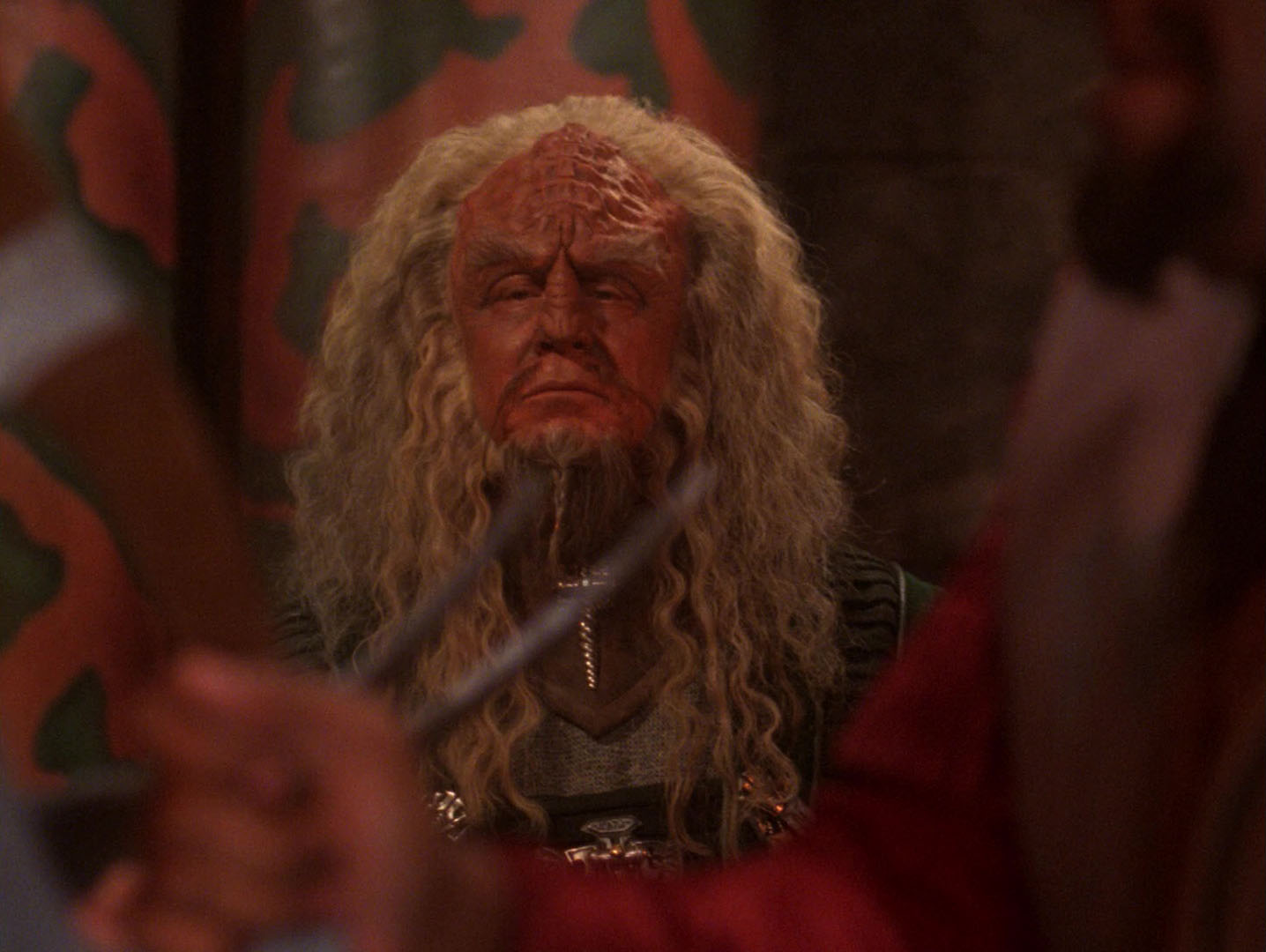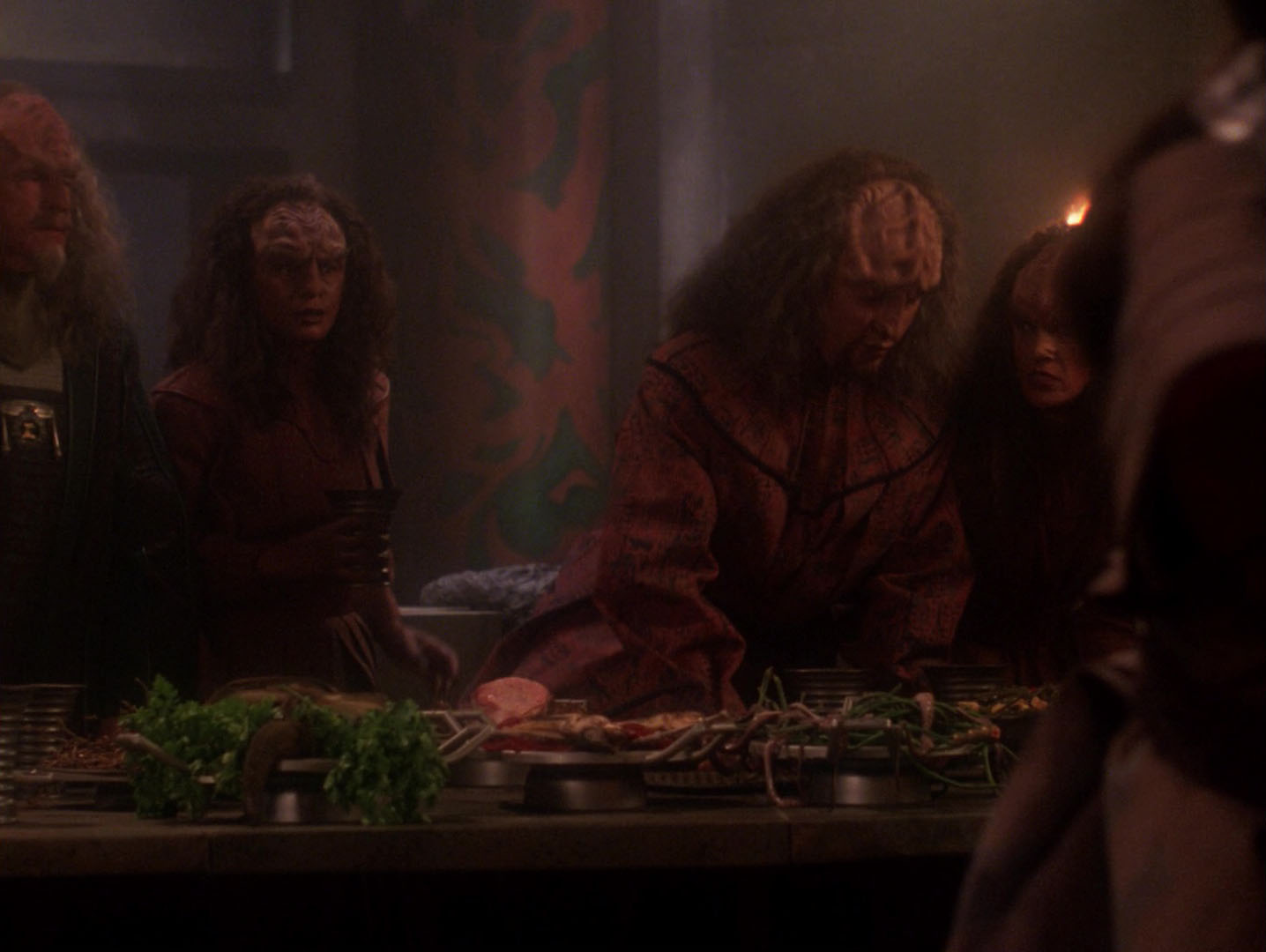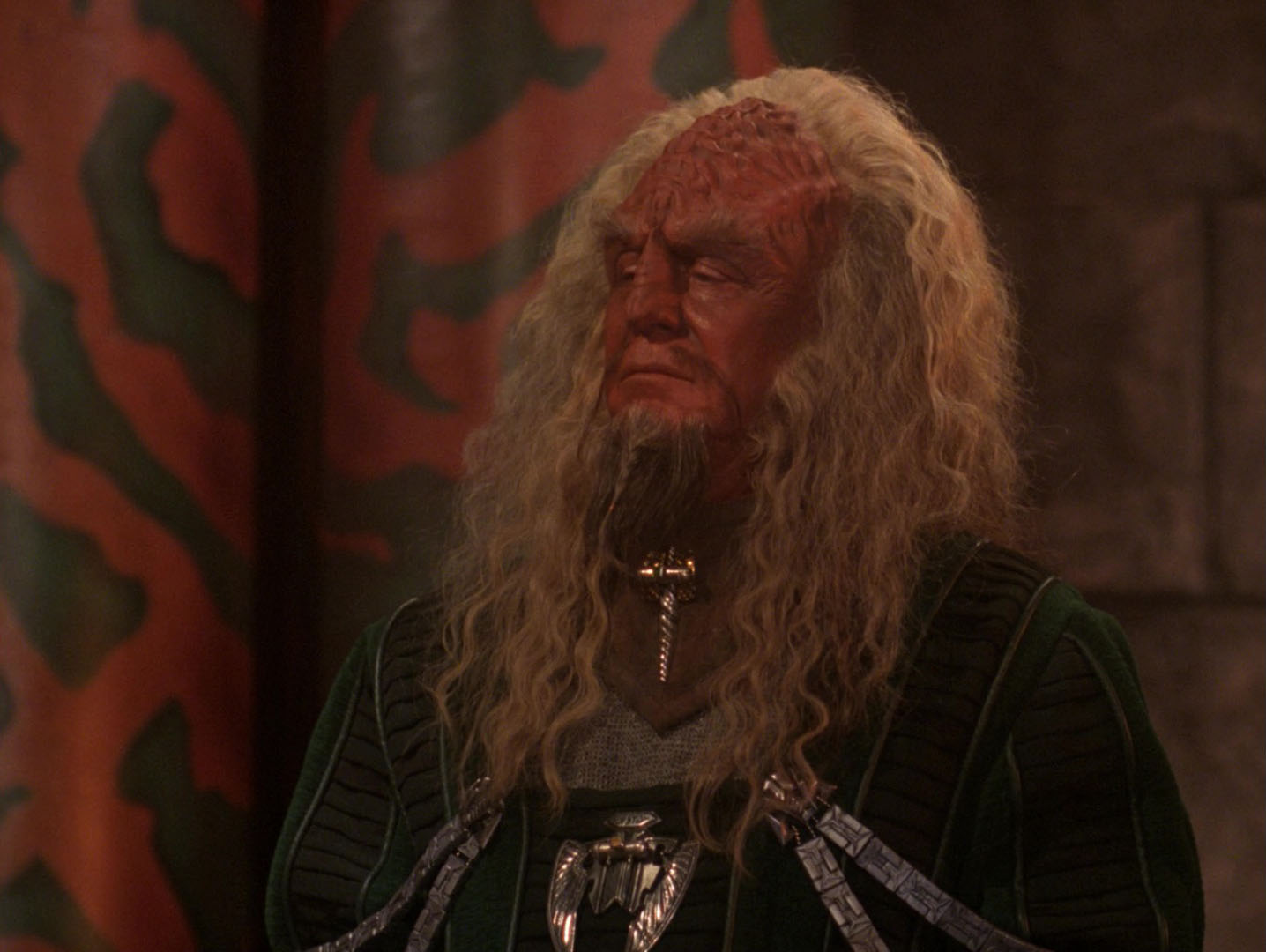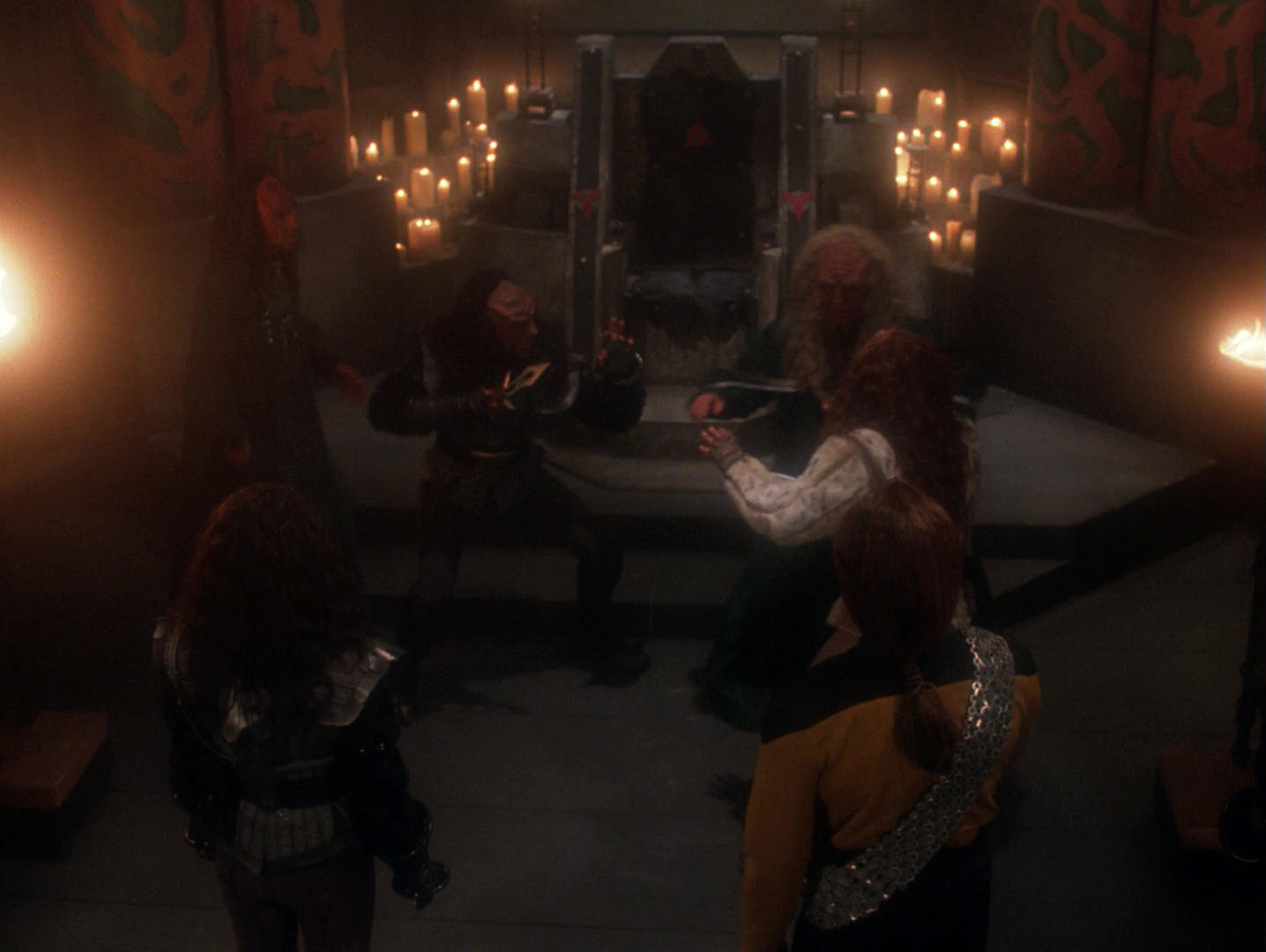

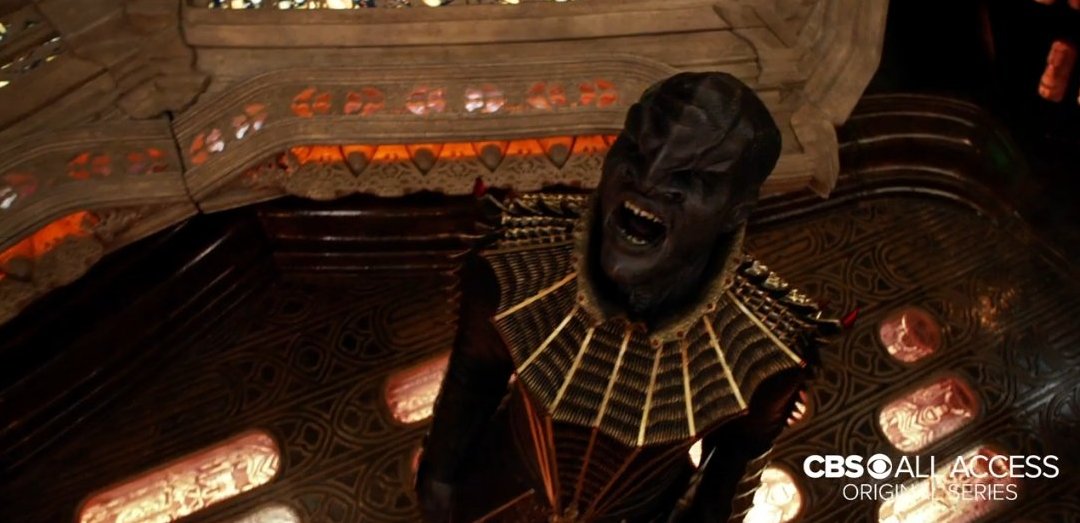
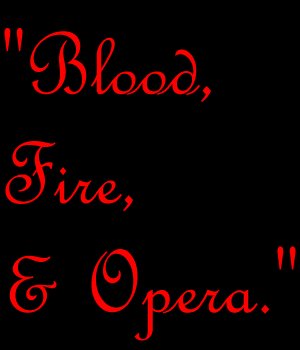
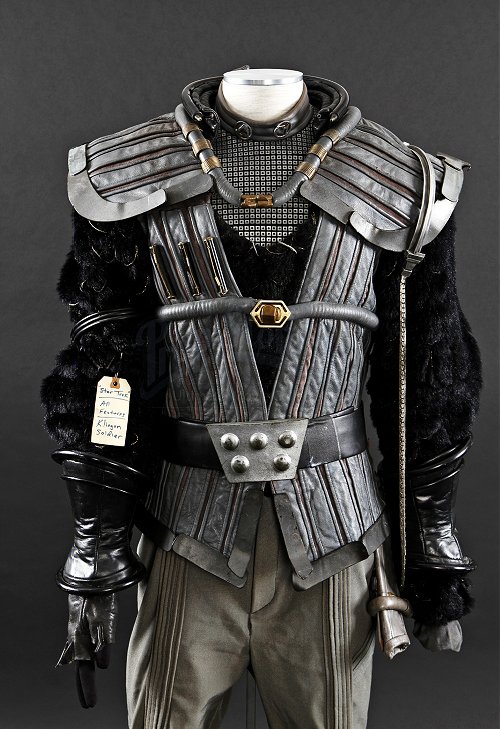 Klingon culture:
Klingon culture: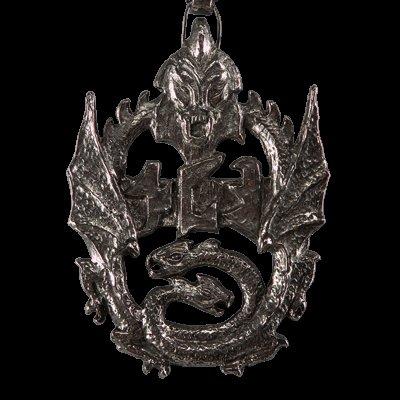 Klingon culture: a mix of Mongol warriors, Norse Mythology, Vikings, Native Americans, Shintoism and Frederick Nietzsche. A warrior's code and social Darwinism, driven by perpetual fighting to assert the species as apex predator. Like Nietsche, the Klingons killed their gods and put themselves at the top; a warrior race of supermen that must expand from their mineralogical desert of a home planet to increase their Empire in the stars. Their economic model is a cycle of building warships, battling neighbours, invasion and conquering, expanding the Empire, using the resources from the new territory to then build more warships. To break this cycle would cause the collapse of their economic model. The outward expansionist period was born in the 2250s when T'kuvma sought to light the fire, preserve the Klingon free spirit and reunite the 24 Klingon great Houses. The Klingon Empire had been in disarray for generations before this, fighting amongst themselves.
Klingon culture: a mix of Mongol warriors, Norse Mythology, Vikings, Native Americans, Shintoism and Frederick Nietzsche. A warrior's code and social Darwinism, driven by perpetual fighting to assert the species as apex predator. Like Nietsche, the Klingons killed their gods and put themselves at the top; a warrior race of supermen that must expand from their mineralogical desert of a home planet to increase their Empire in the stars. Their economic model is a cycle of building warships, battling neighbours, invasion and conquering, expanding the Empire, using the resources from the new territory to then build more warships. To break this cycle would cause the collapse of their economic model. The outward expansionist period was born in the 2250s when T'kuvma sought to light the fire, preserve the Klingon free spirit and reunite the 24 Klingon great Houses. The Klingon Empire had been in disarray for generations before this, fighting amongst themselves.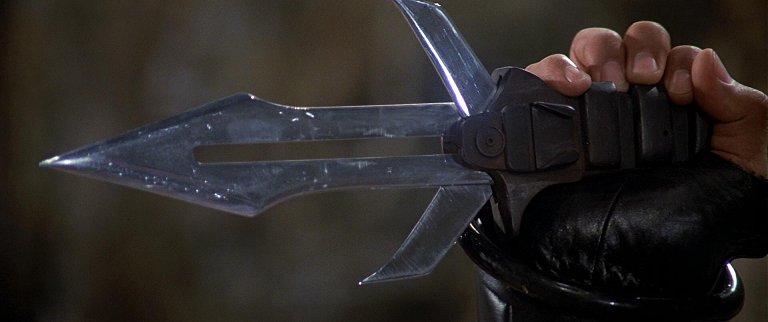 Sources:
Sources: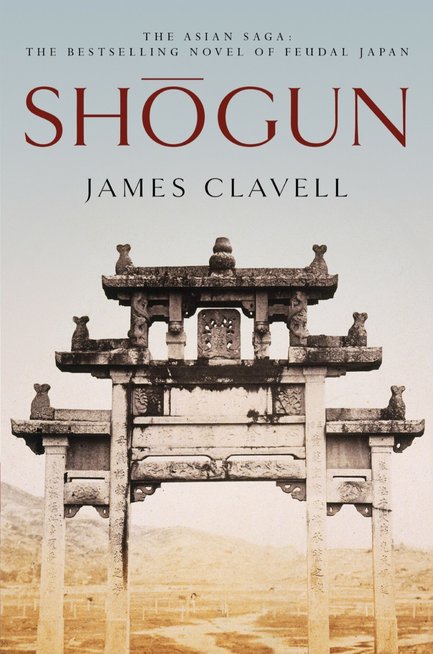
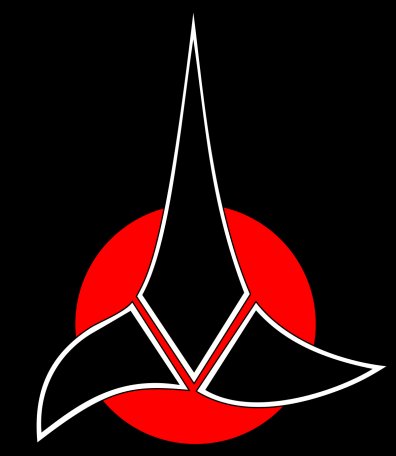
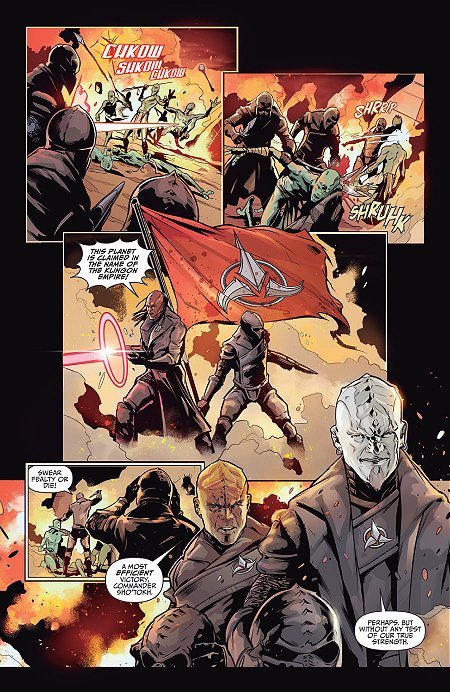
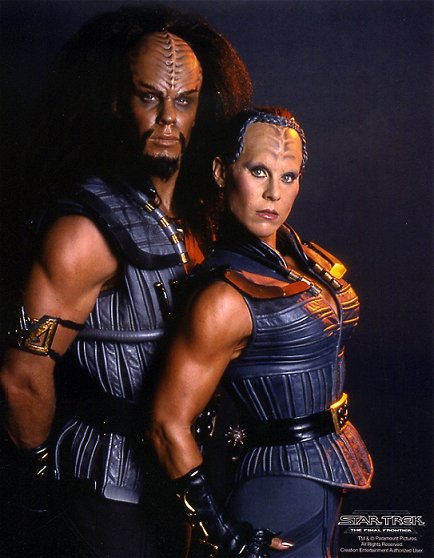 Birth
Birth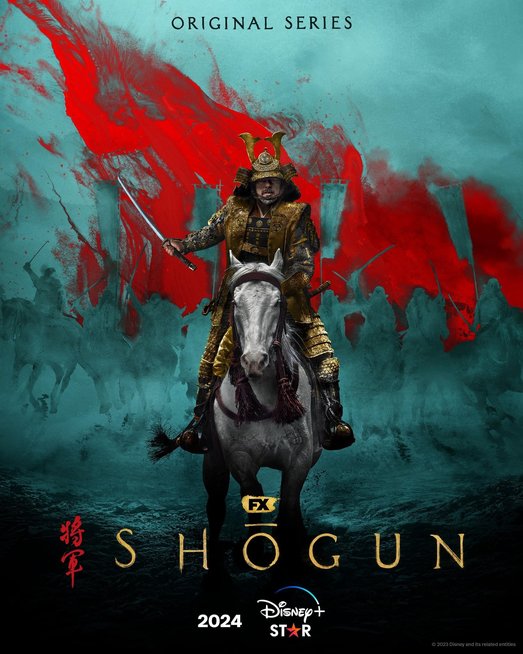
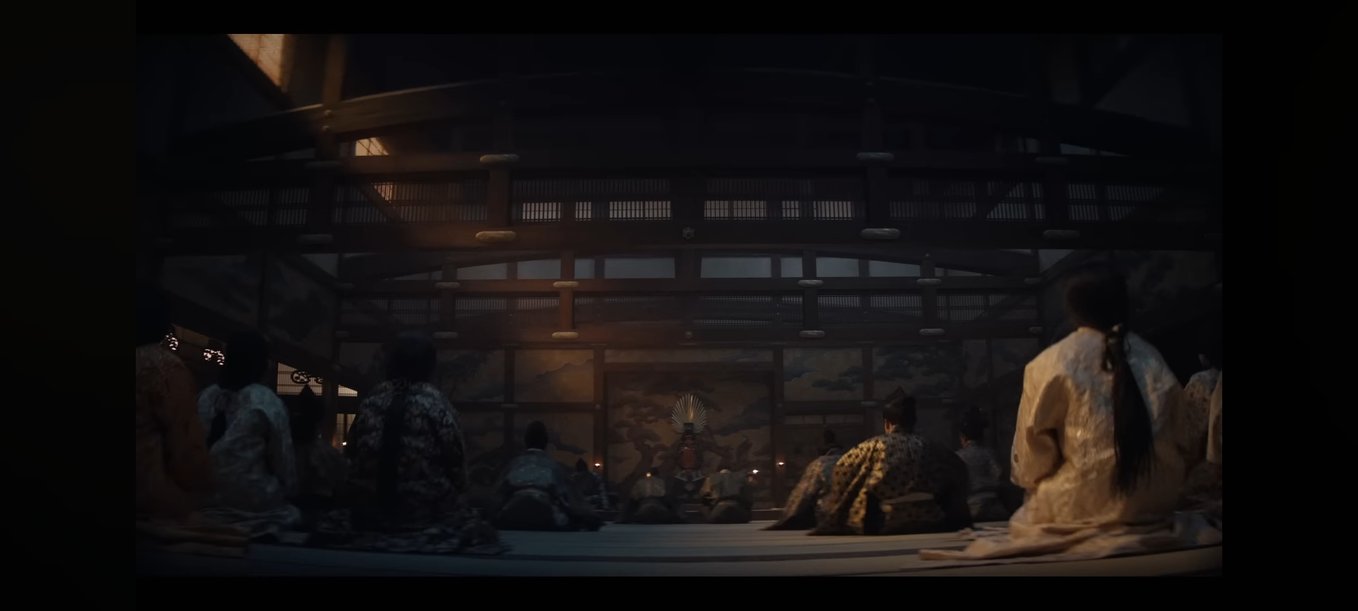
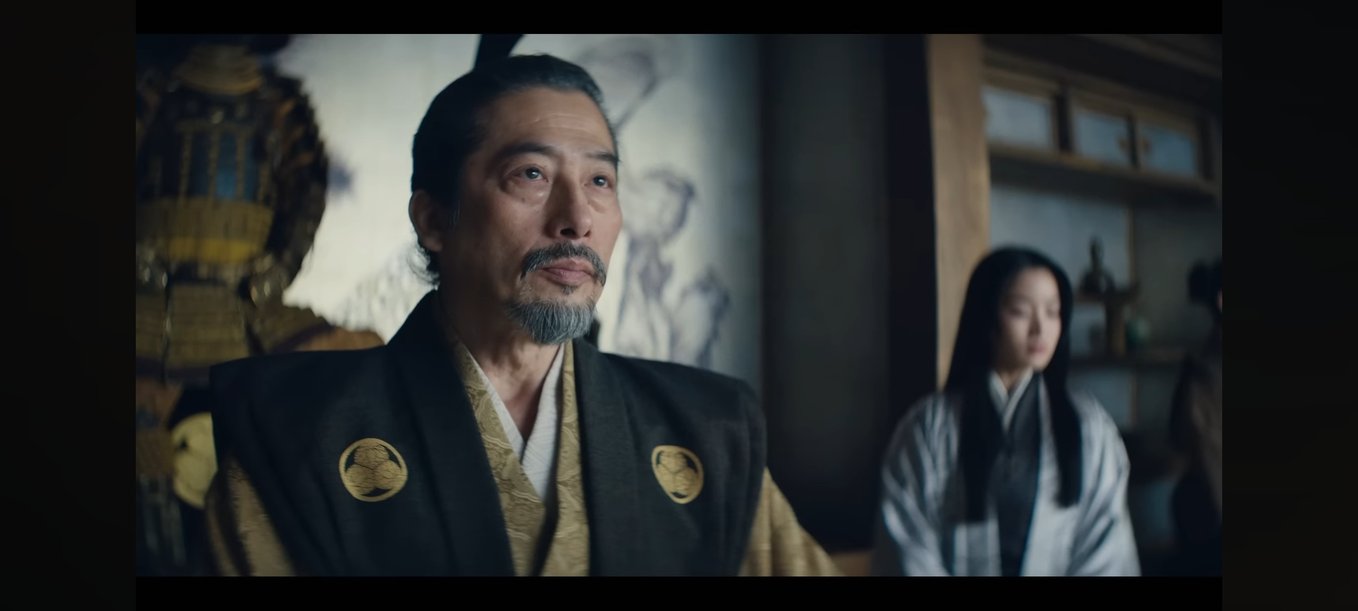
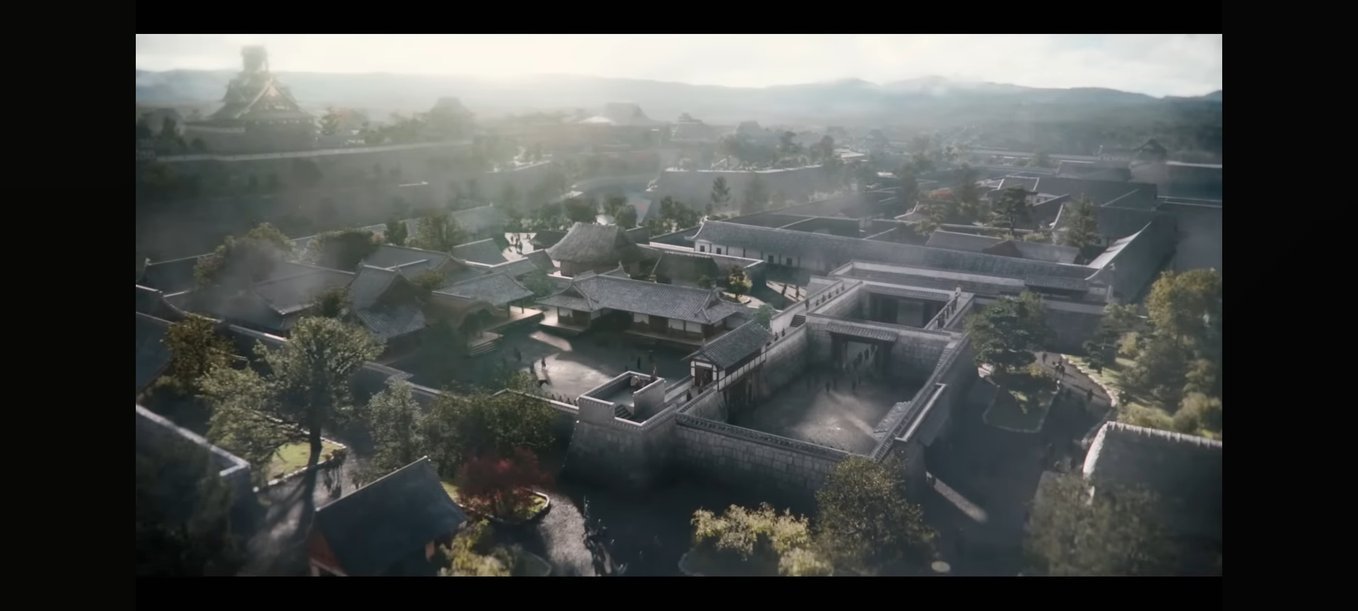
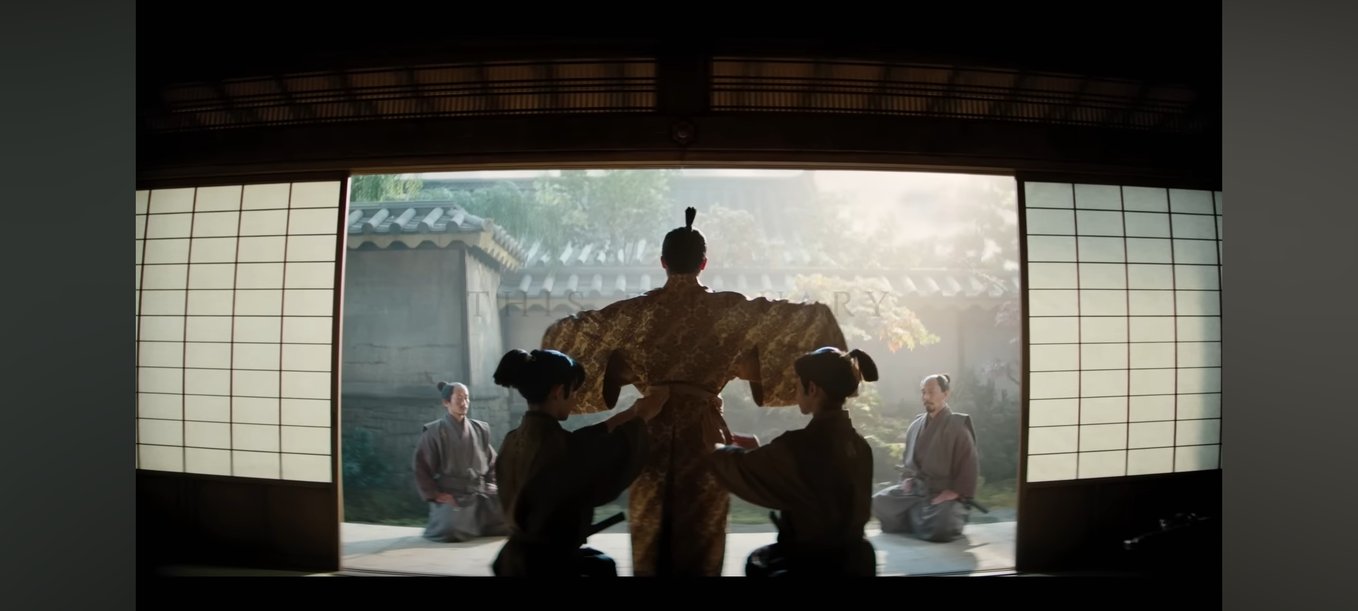
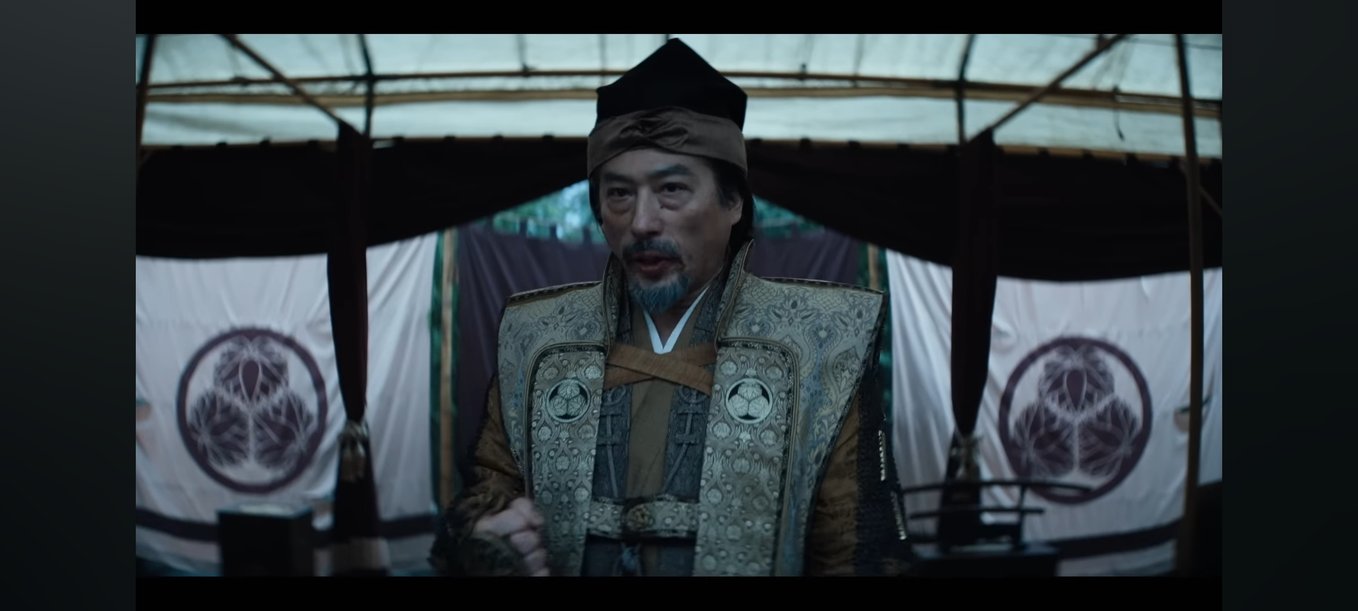
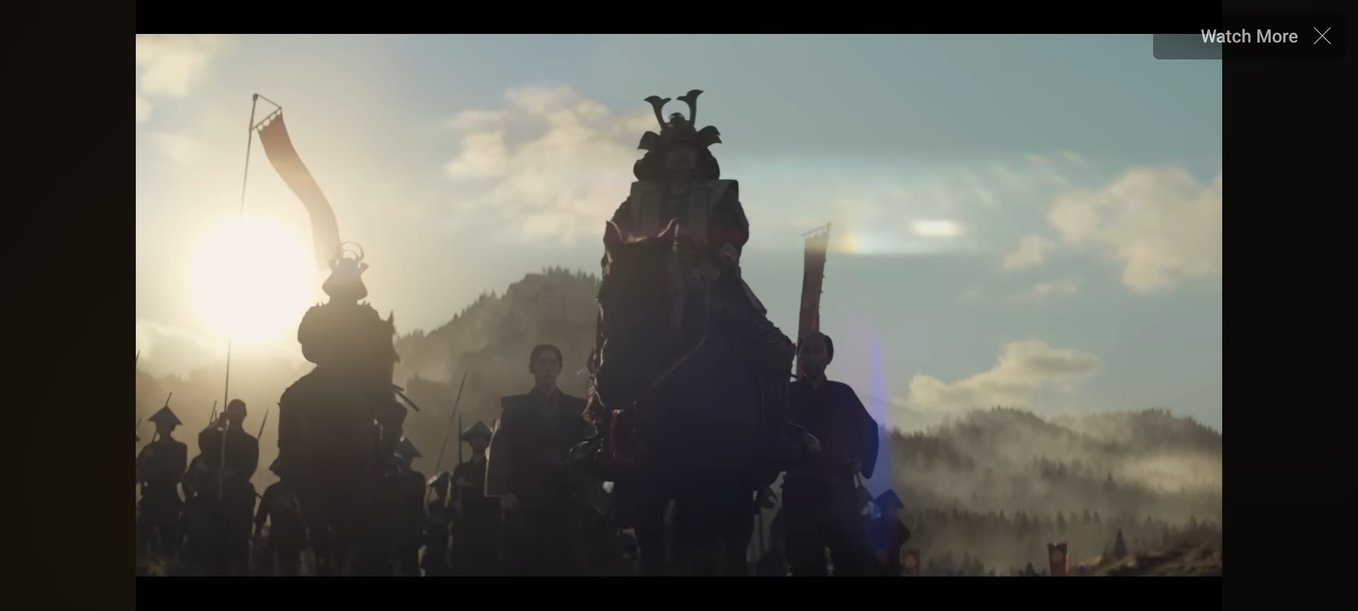
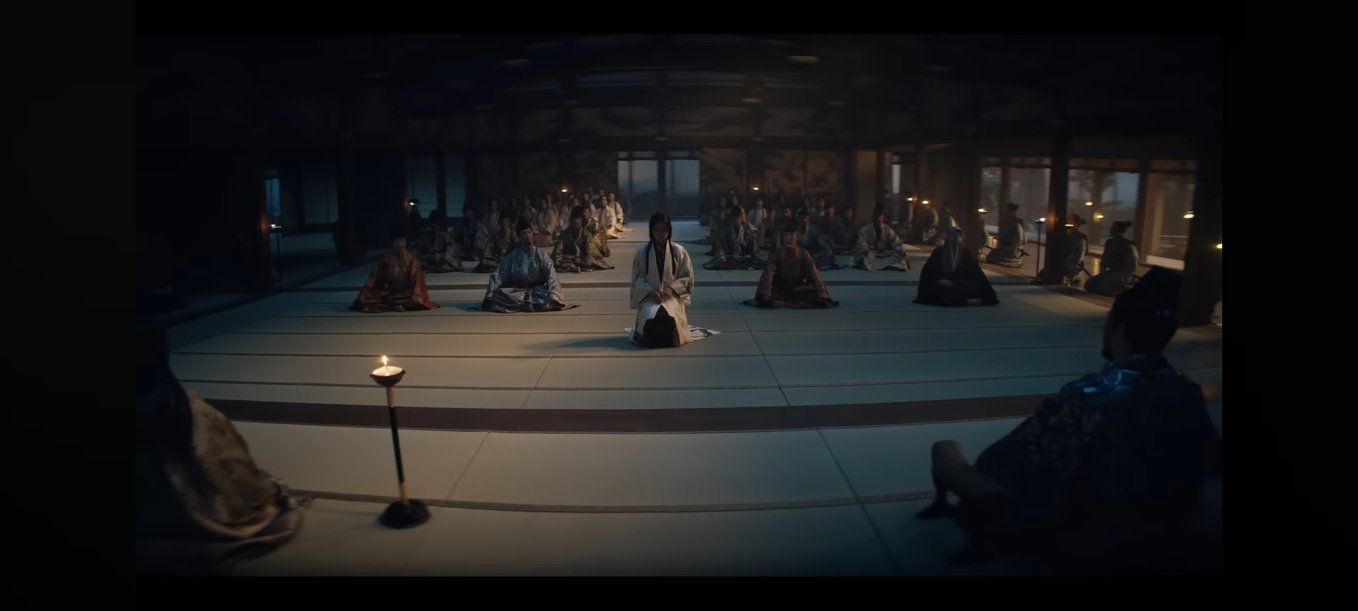
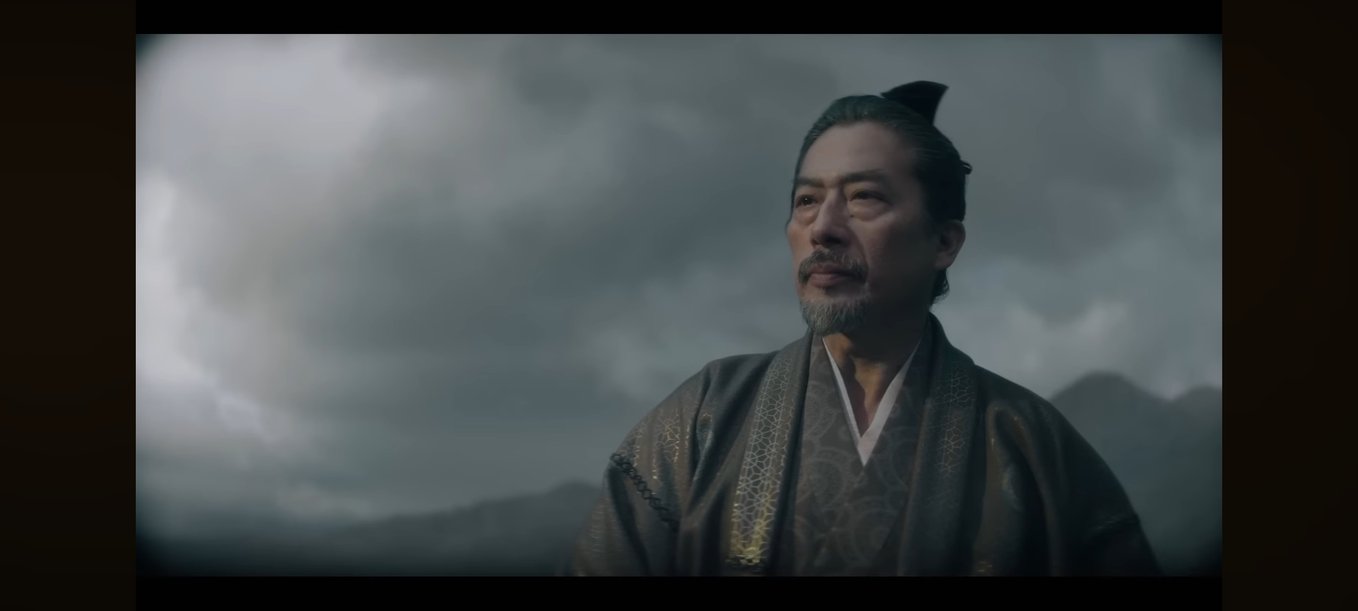
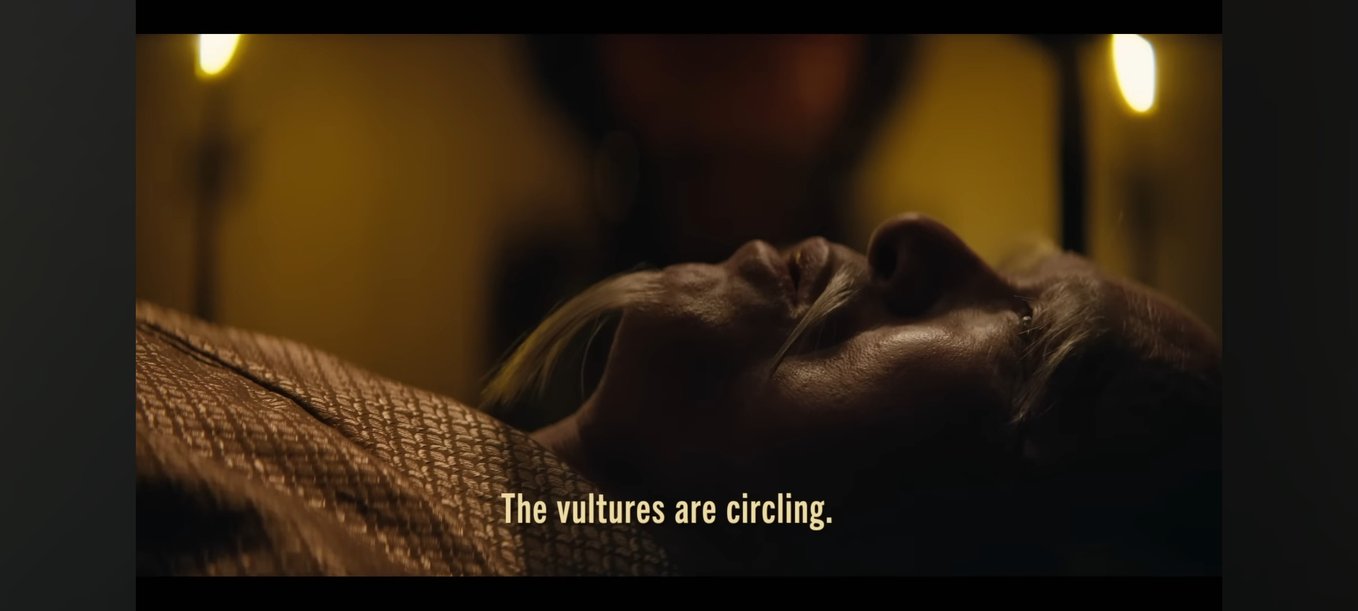
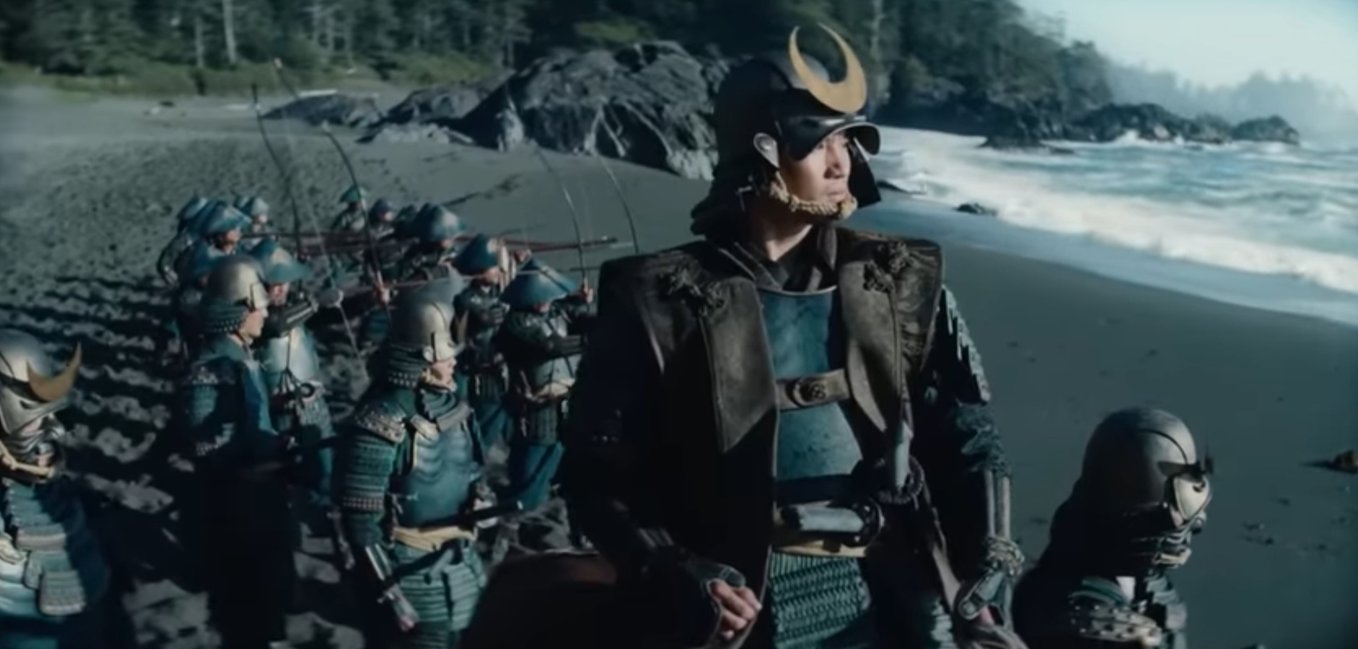
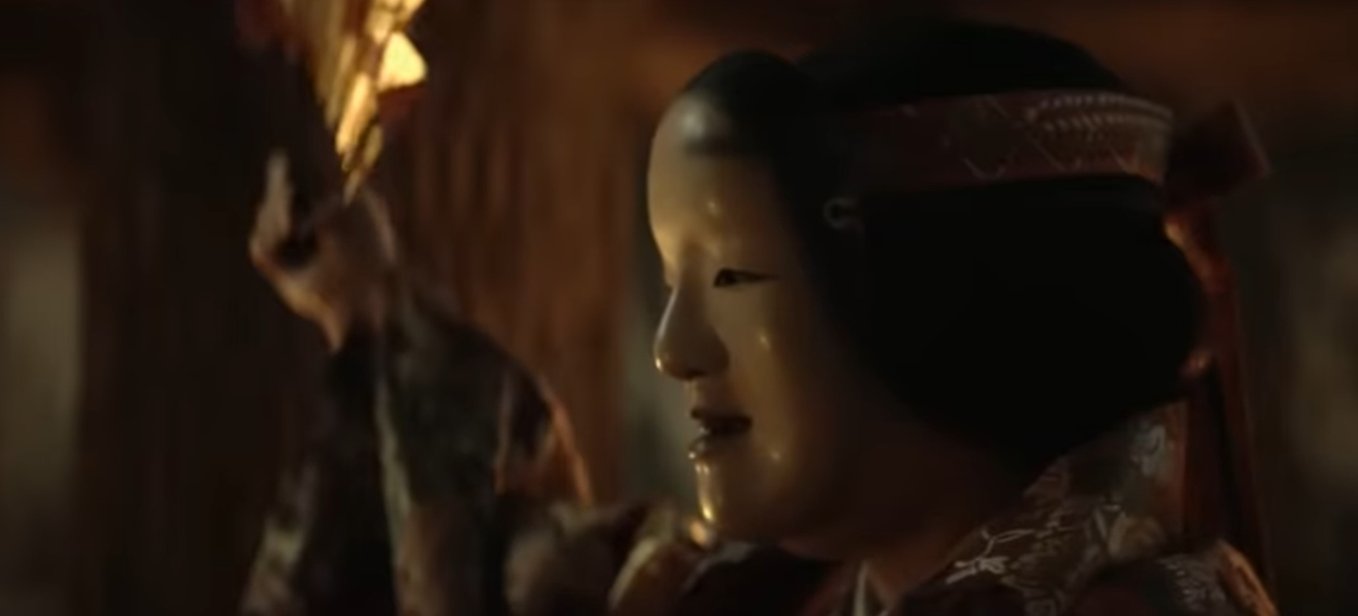
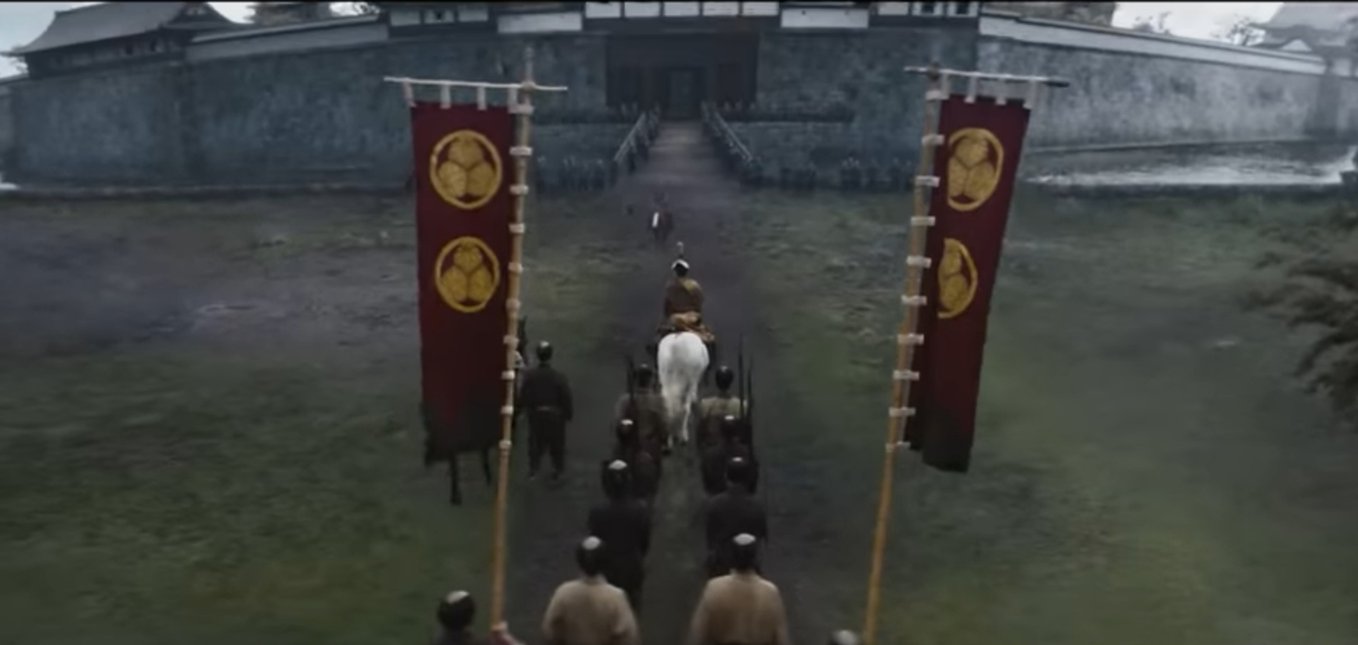
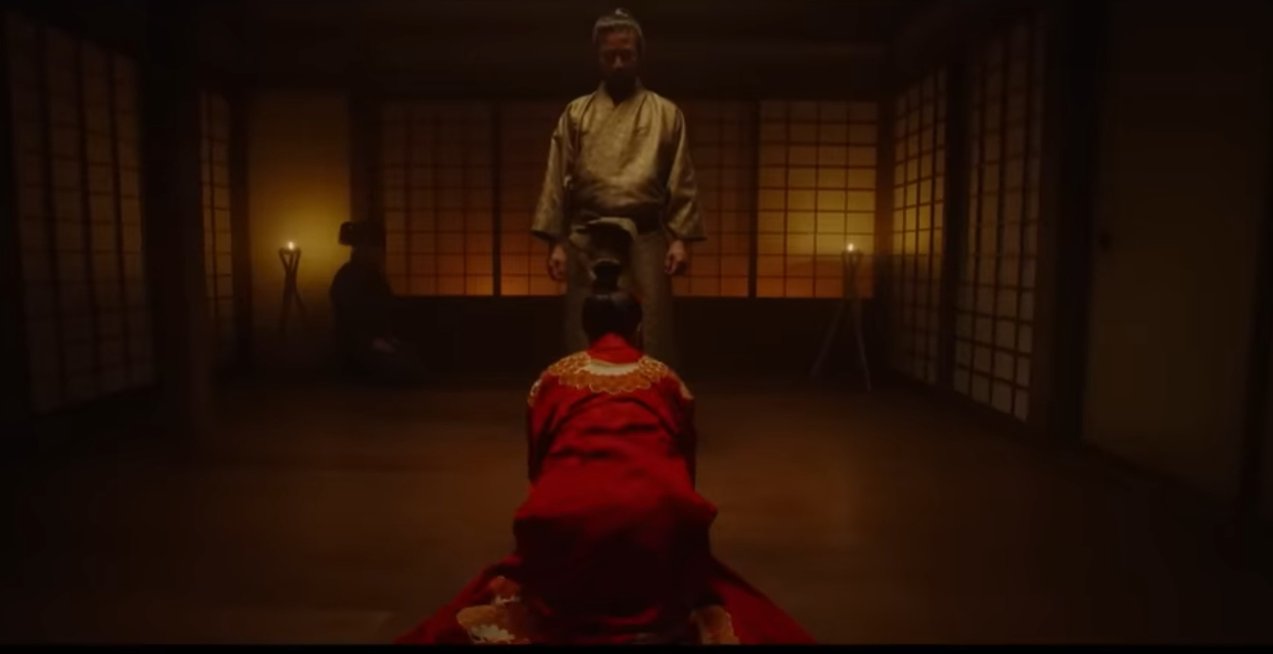
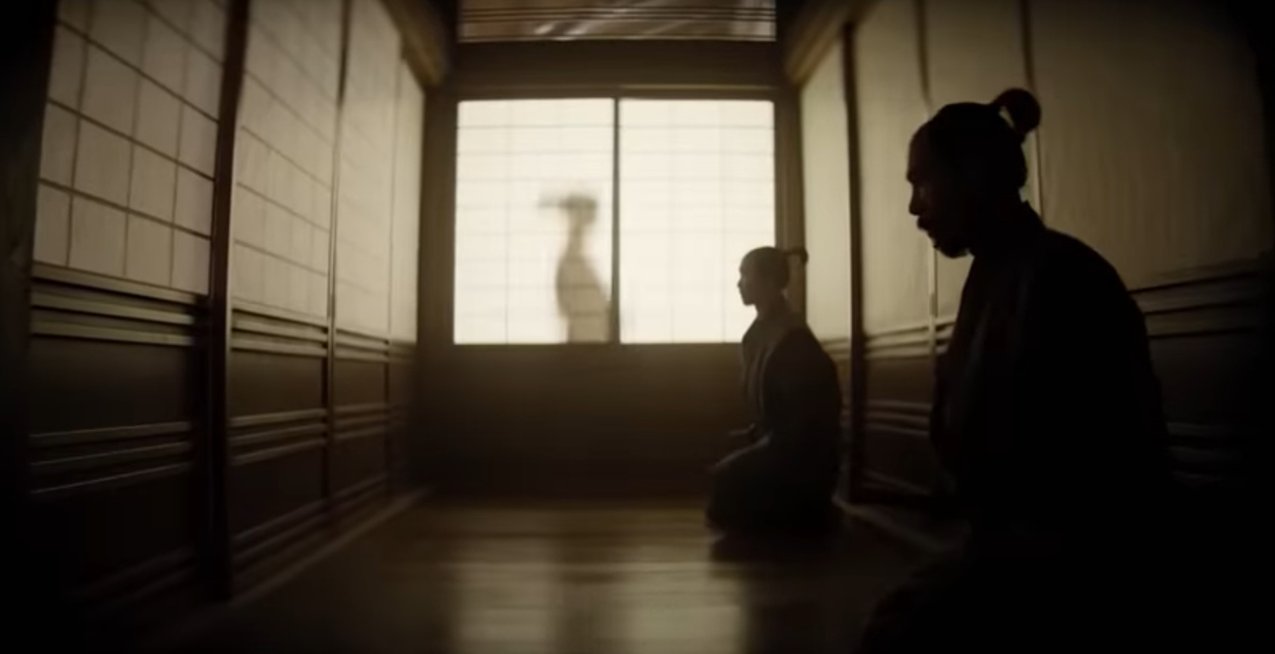
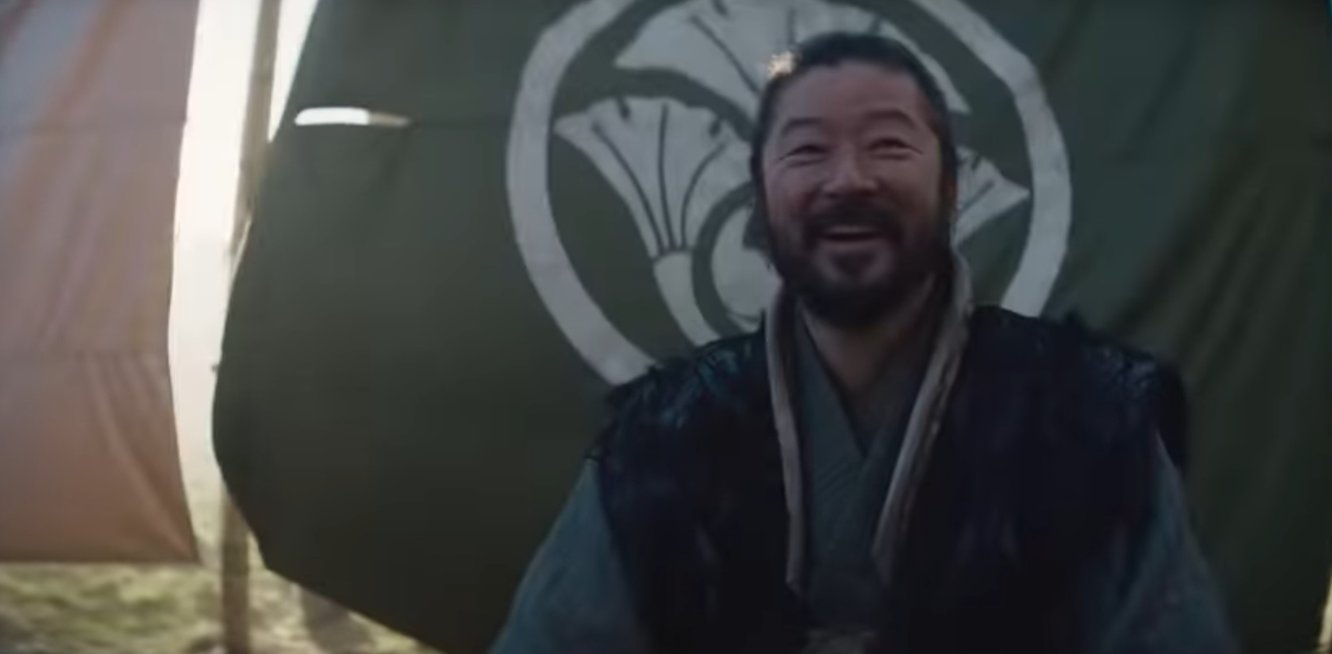
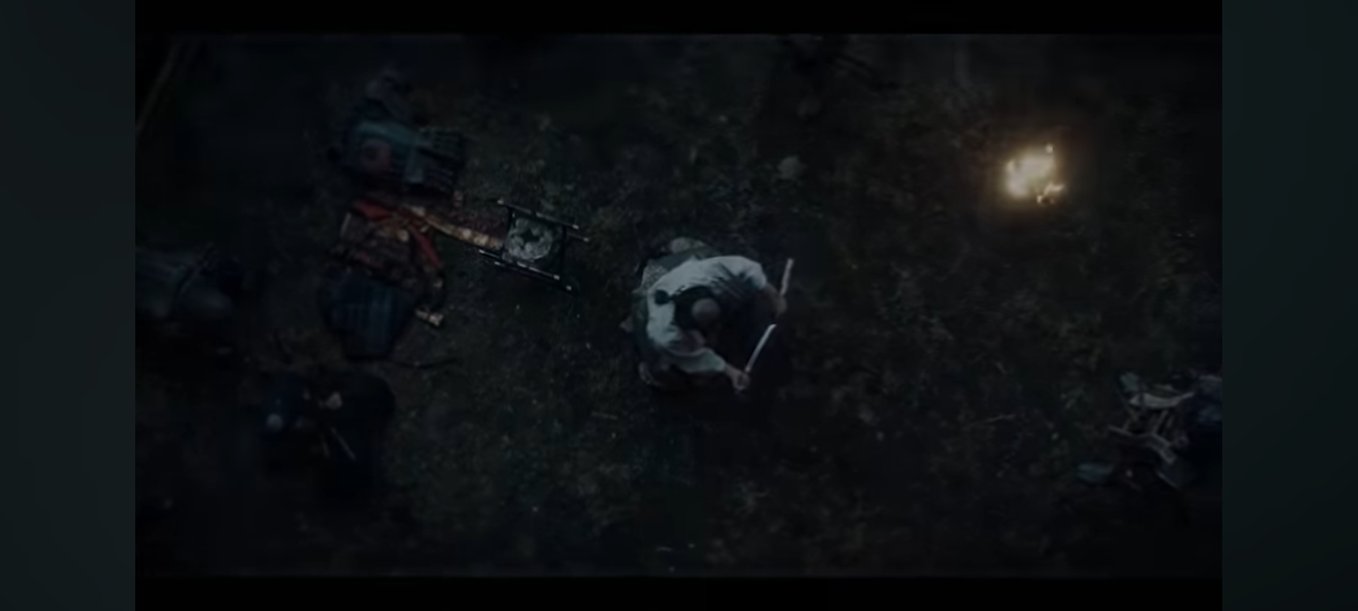

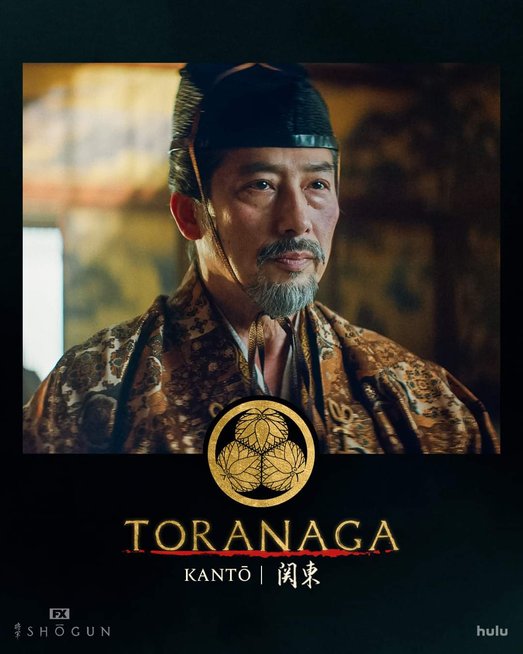





















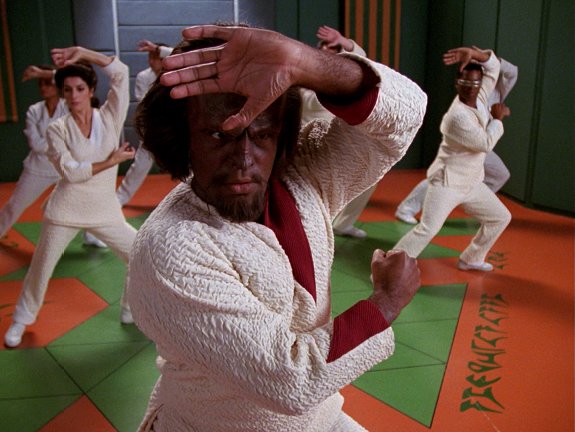 Education
Education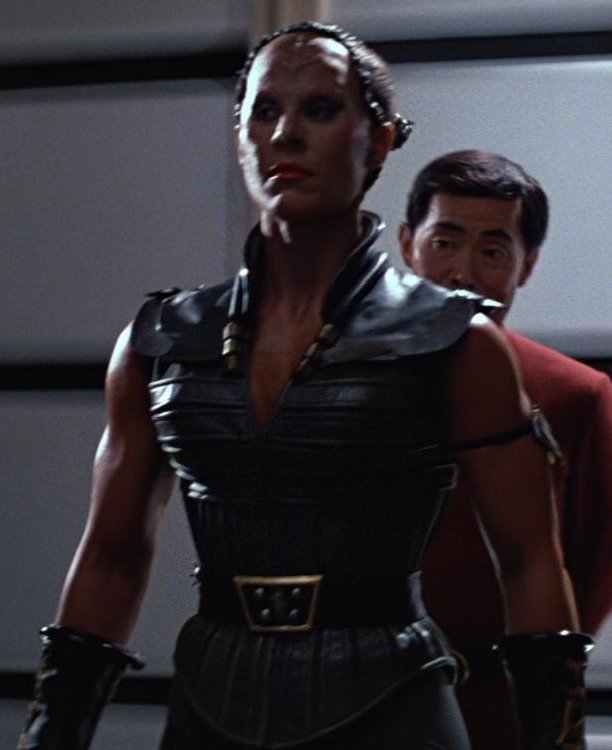 The role of women in the Klingon Empire has never been defined yond running the affairs of the House whilst the men are off fighting, fighting themselves with other warriors. But not serving on the High Council or being allowed to run a House themselves means they surely have another role? How about keeping the lore of the people, teaching the words of Kahless that the men are too busy fighting to remember. Education could be a role for the women, as well as the power behind choosing a mate and producing the strongest and best offspring to continue the House and Empire.
The role of women in the Klingon Empire has never been defined yond running the affairs of the House whilst the men are off fighting, fighting themselves with other warriors. But not serving on the High Council or being allowed to run a House themselves means they surely have another role? How about keeping the lore of the people, teaching the words of Kahless that the men are too busy fighting to remember. Education could be a role for the women, as well as the power behind choosing a mate and producing the strongest and best offspring to continue the House and Empire.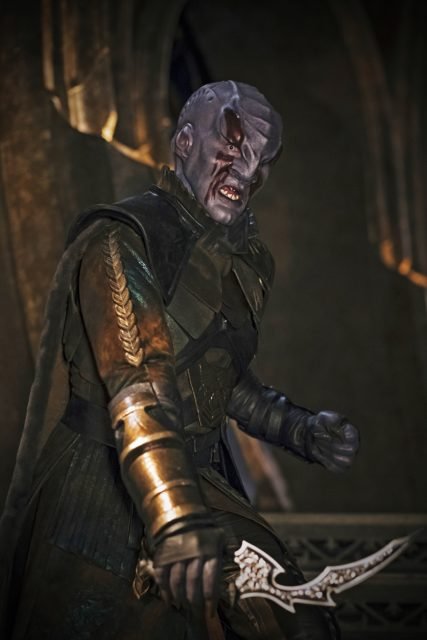 Klingons believe that the weak must make way for the strong. Just as in Nature. If they do not fight others, they fight themselves. Often they fought themselves as they only saw Klingons as worthy enemies to be slain. With the United Federation of Planets, it was only a short number of years from 2151 to 2154 before they formed the coalition of Planets. Starfleet didn't have photon torpedoes and the Klingon Empire had overwhelming military advantage. By the end of the Romulan War, the human's coalition had proved themselves victorious, with starships that had improved enough to overtake thoe of the stagnating Klingon Empire. A year later the United Federation of Planets was formed and the High Council was stunned into inaction.
Klingons believe that the weak must make way for the strong. Just as in Nature. If they do not fight others, they fight themselves. Often they fought themselves as they only saw Klingons as worthy enemies to be slain. With the United Federation of Planets, it was only a short number of years from 2151 to 2154 before they formed the coalition of Planets. Starfleet didn't have photon torpedoes and the Klingon Empire had overwhelming military advantage. By the end of the Romulan War, the human's coalition had proved themselves victorious, with starships that had improved enough to overtake thoe of the stagnating Klingon Empire. A year later the United Federation of Planets was formed and the High Council was stunned into inaction.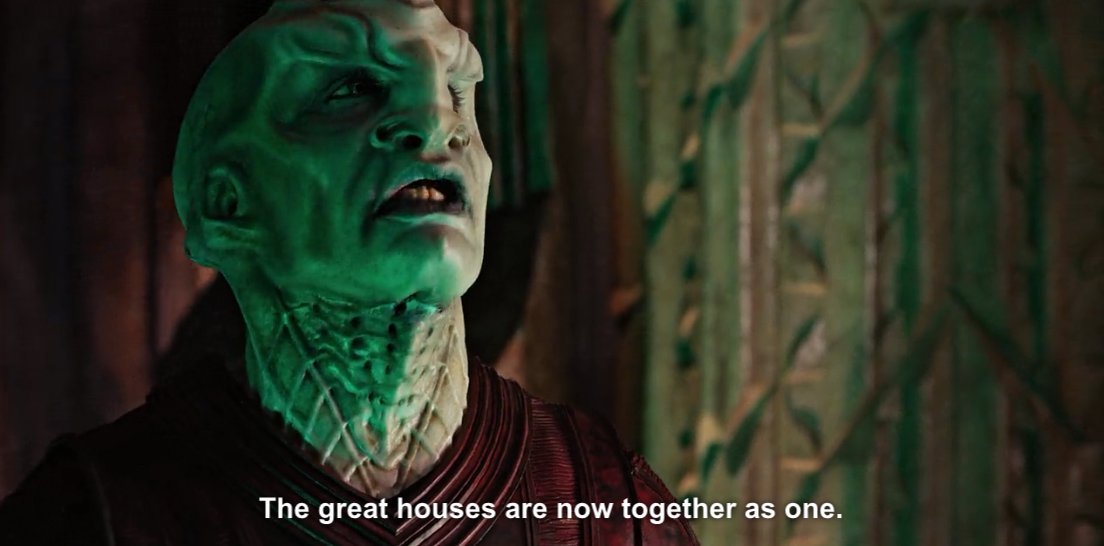
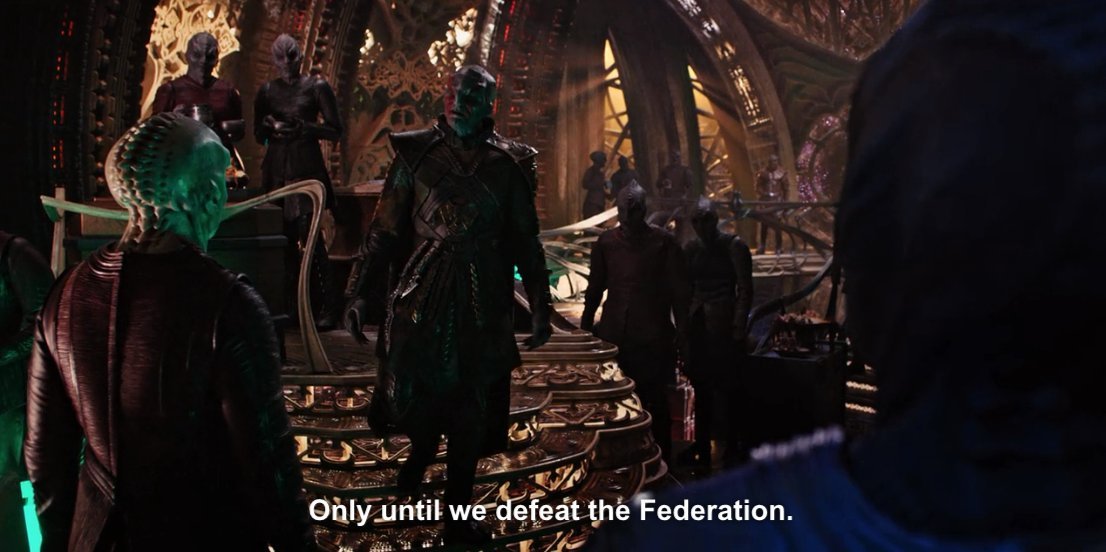
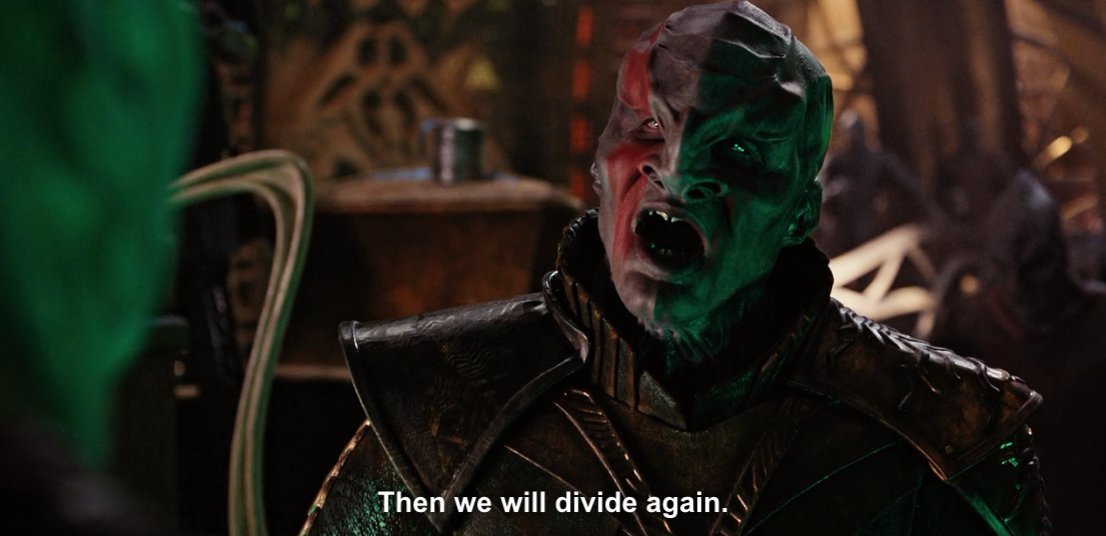
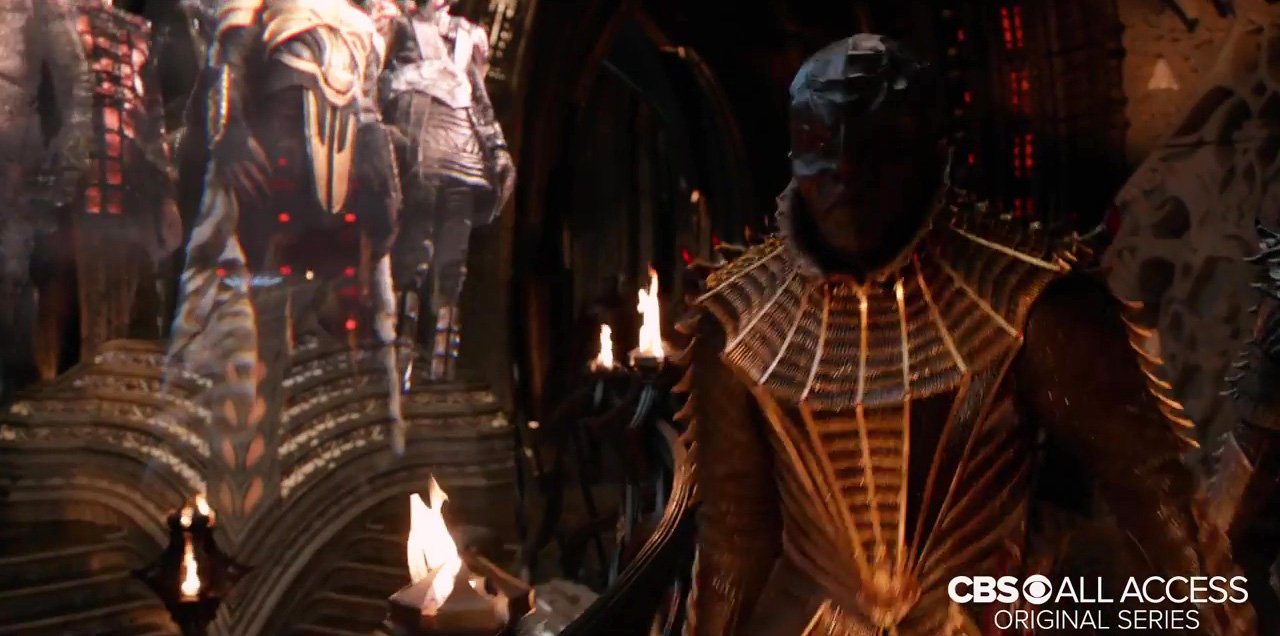
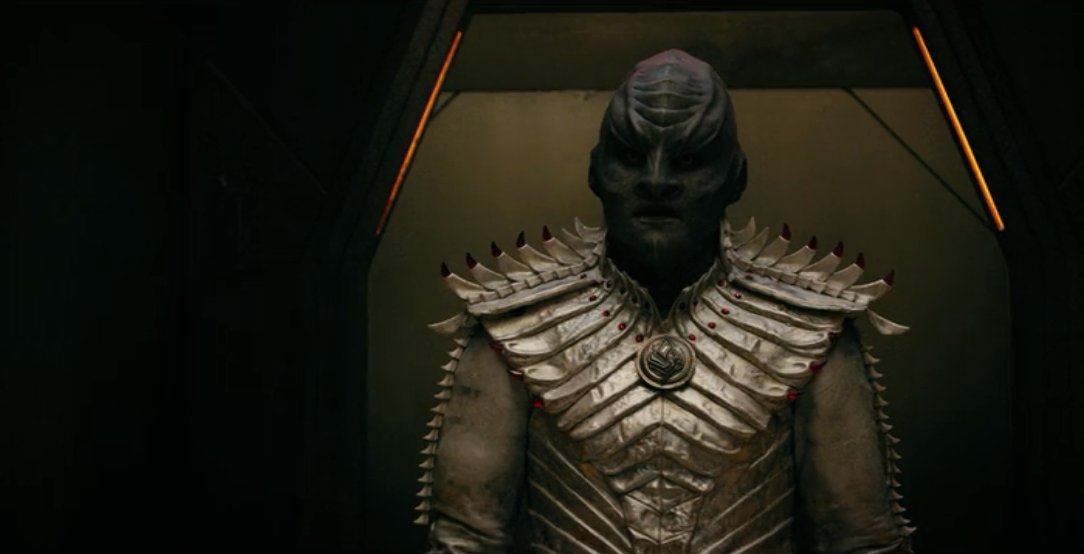
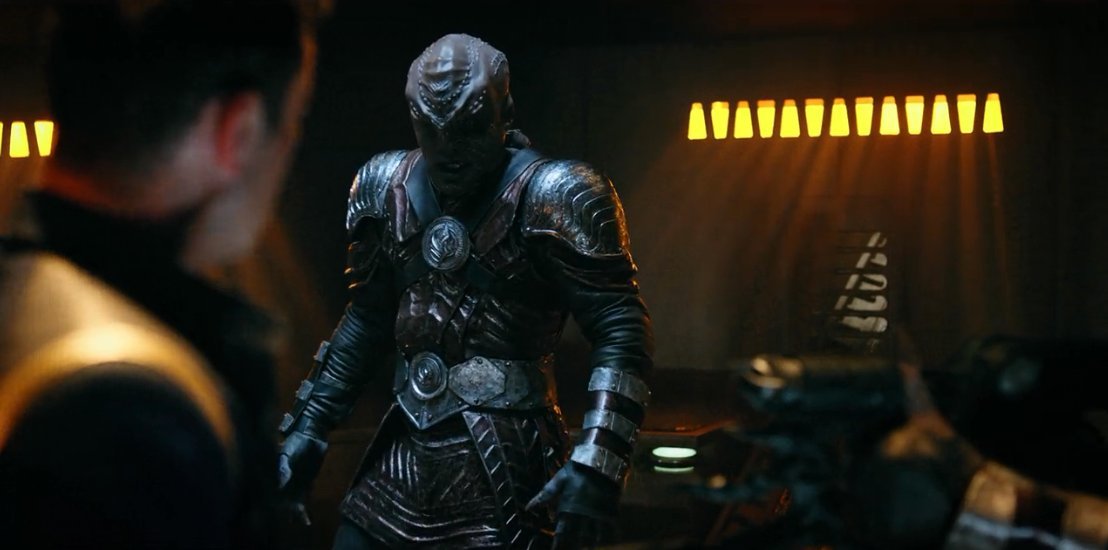
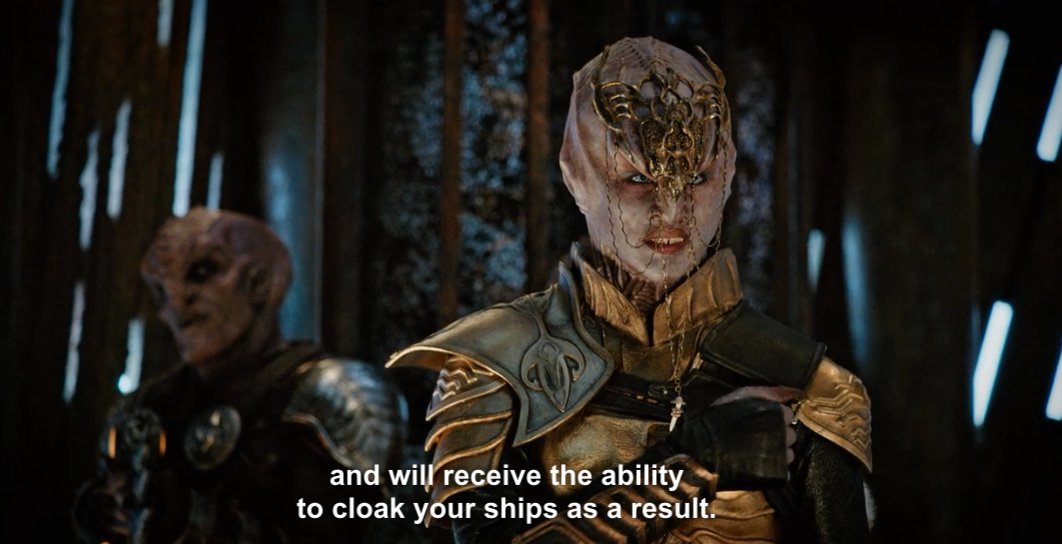
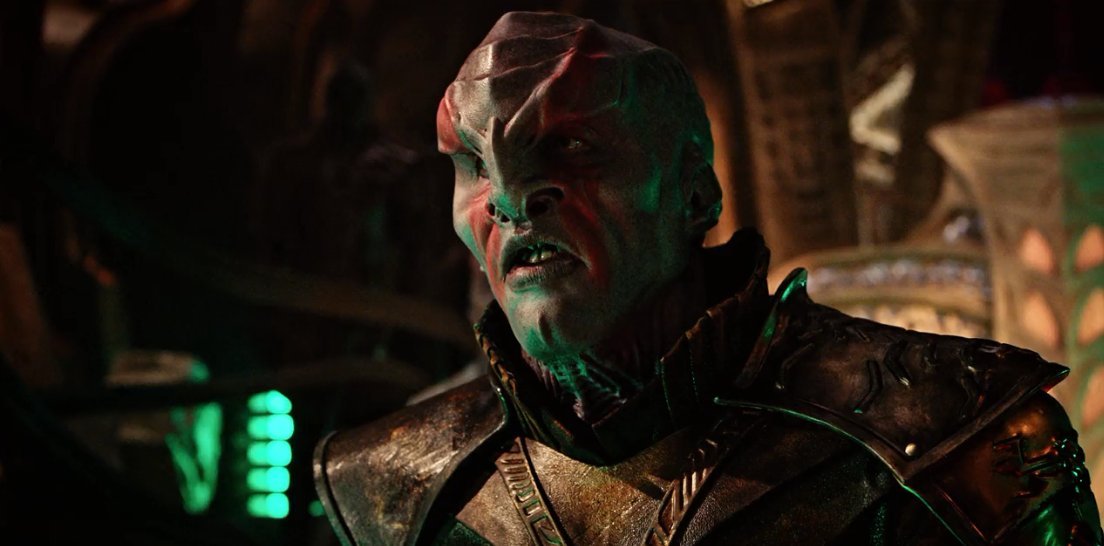
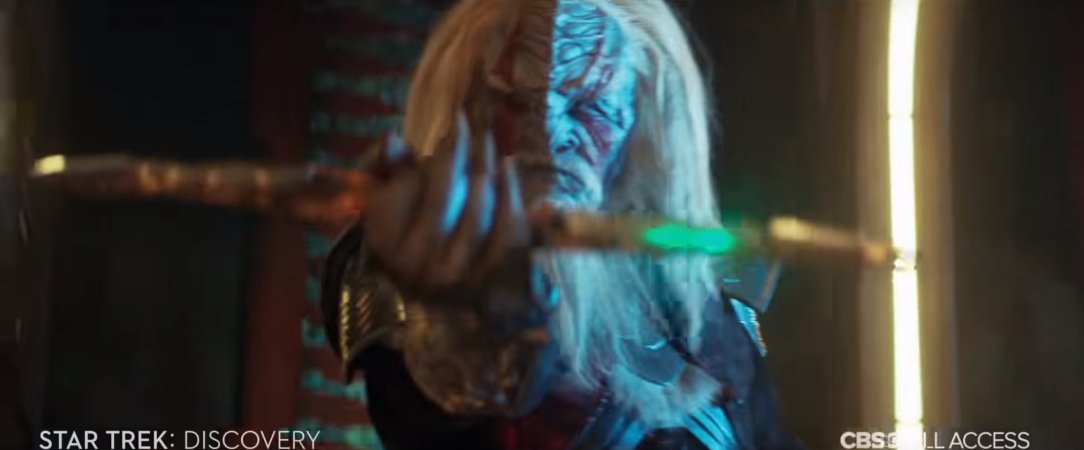
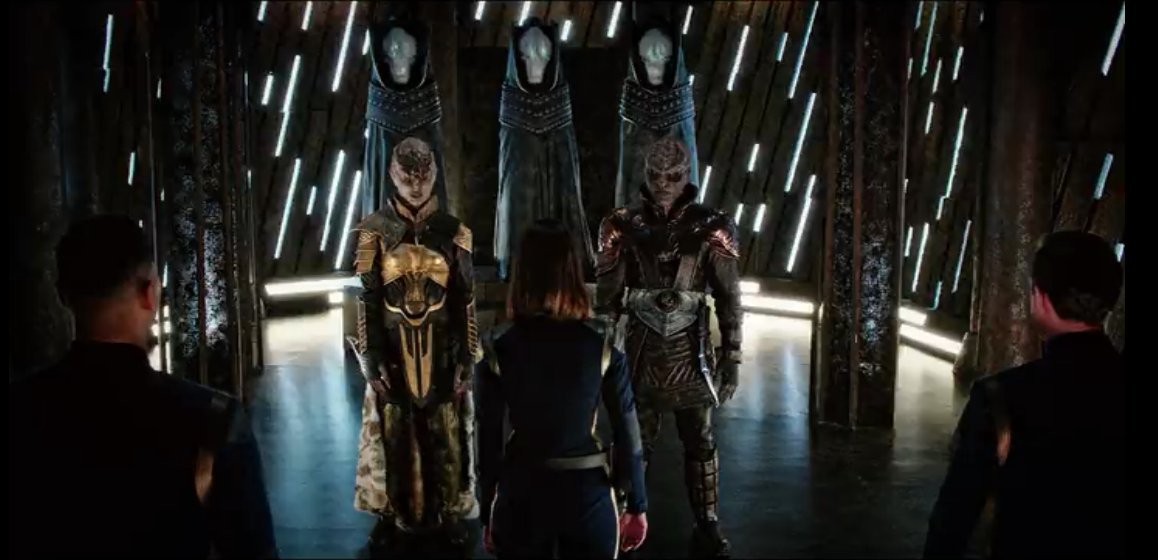
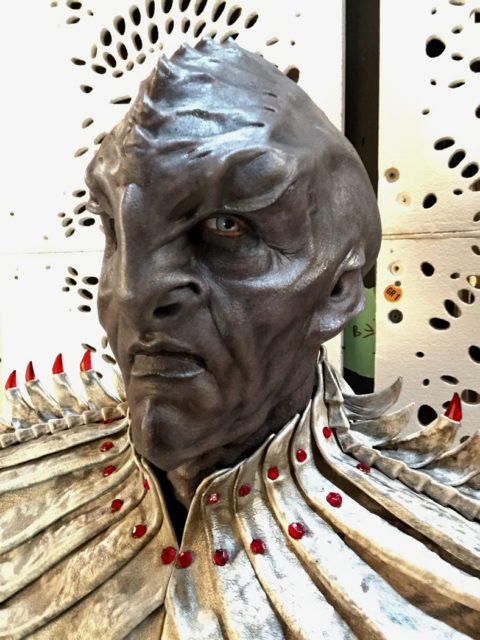
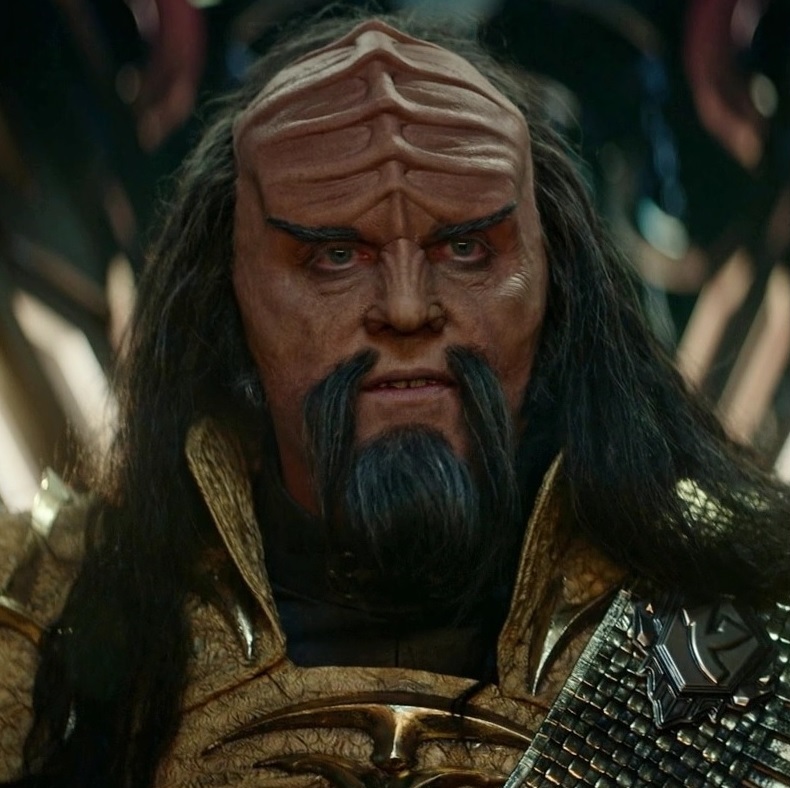

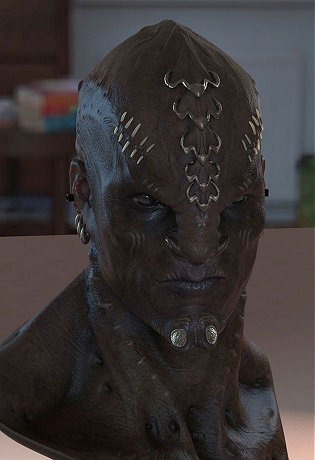 Author notes:
Author notes: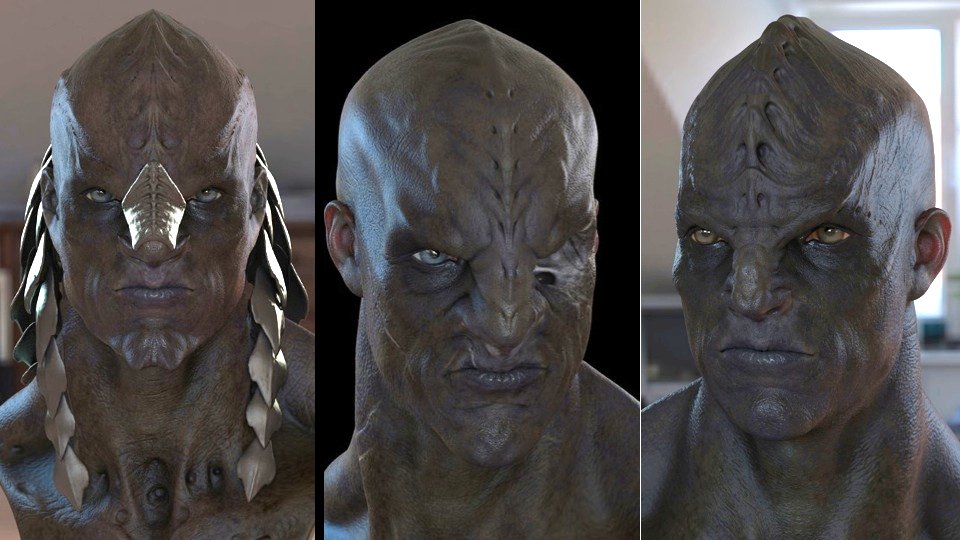
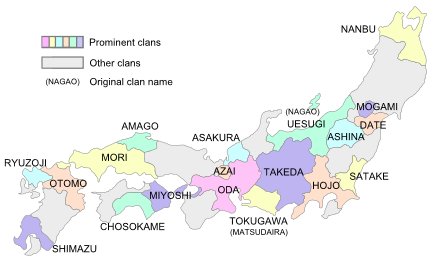 Kuge
Kuge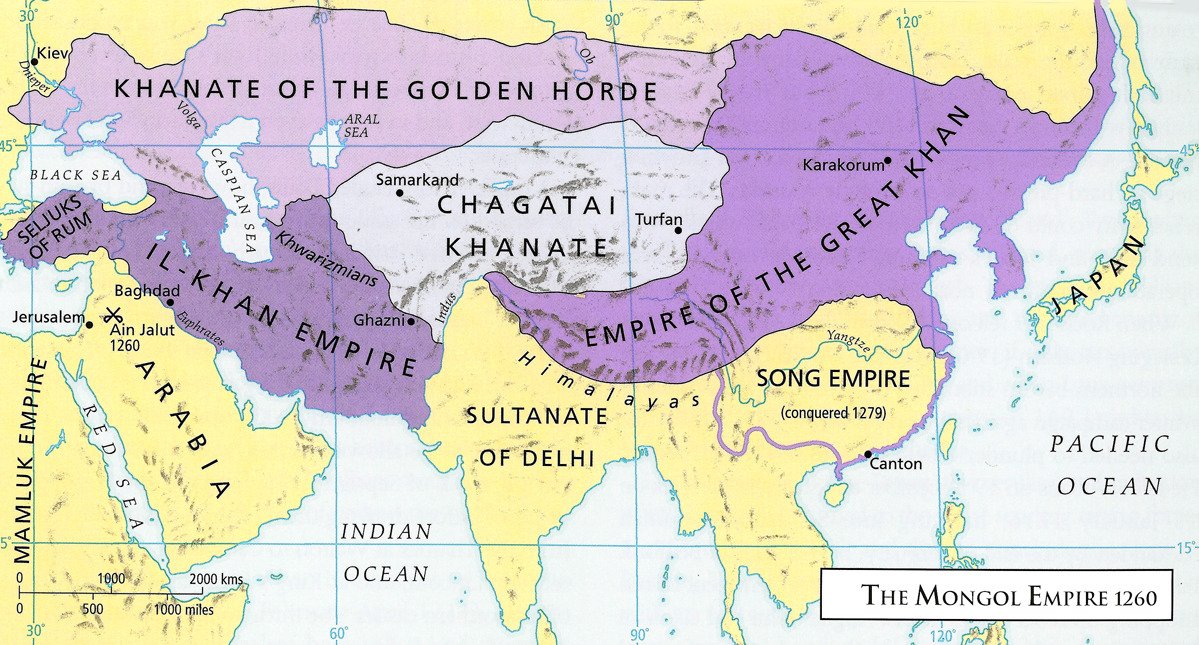
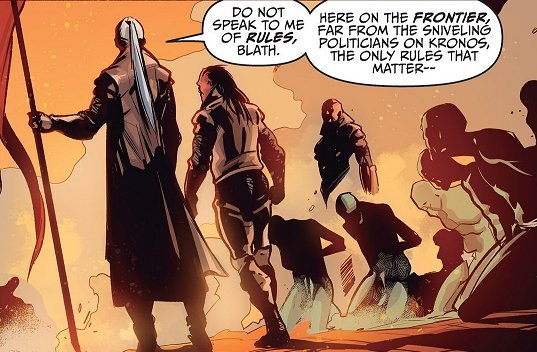
| Caste | Notes | Author Notes |
| Political | Chancellor and the High Council | All with lands on Qo'noS. These Kronosian peacocks are not throught of highly in the outer Empire. All playing their political games whilst claiming they follow Kahlessian rules. Rules that befit the monority at the top. |
| Officer | Oversight Council keeps the officer caste pure and of highborn Great Houses. | |
| Priest/Judge | The preachers and keepers of the words of Kahless. Priests preach the words, Judges rule from the teachings of Kahless. | The priesthood legitimises the political class as those following Kahless. |
| Scribe/Poet/Sculptor/Composer | The greats end up in higher esteem than most. Their challenge is to capture the very essence of what it is to be Klingon. | |
| Enlisted soldier | ||
| Scientist/Engineer | Doctors, technicians and engineers | |
| Farmer | ||
| Worker | Manufacturers, foundrymen, miners, lawyers. | With little or no opportunity for battle, honour or glory, the words of Kahless must ring hollow for many of these lower caste Klingons. For some, they find honour in their hearts their own way. For others, there are other outlets like the Cult of Fek'lhr. |
| Klingon prisoners | Still useful to the Empire. | |
| Non-Klingon | Kzinti, Orions, Kriosians etc. | |
| Dishonoured | The cowardly, the alcoholic drunks, the defeated and the discommended. | In the outreaches of the Empire, all Klingons are useful. Discommendation is very much a Kronosian political tool that isn't cared for by the majority of civilians. Alcoholism is prevelant in the Empire and this is the rock bottom where they can end up. Even former members of the High Council can find this fate. |
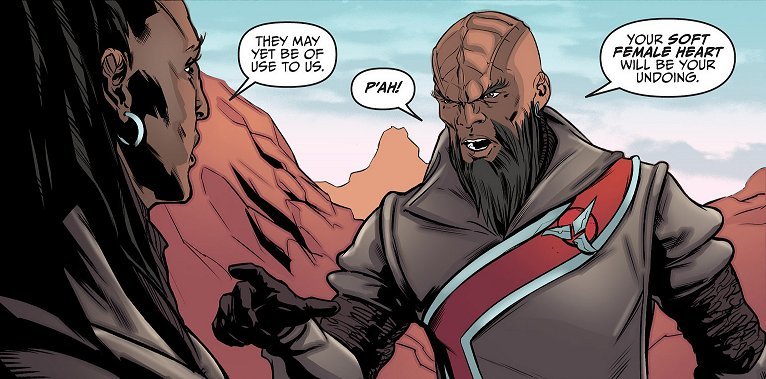
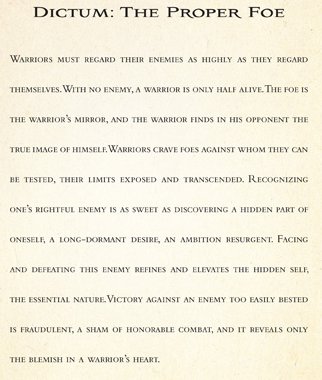
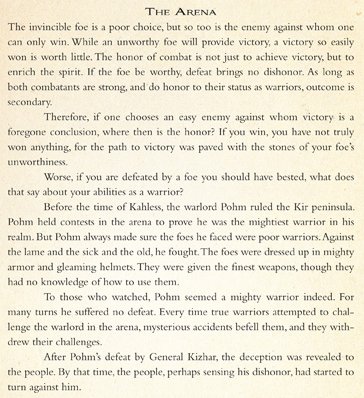 Klingon texts
Klingon texts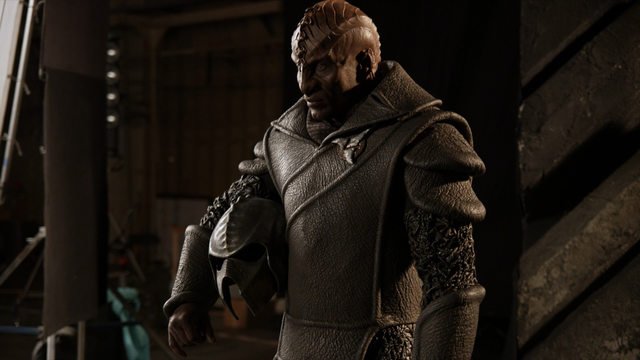
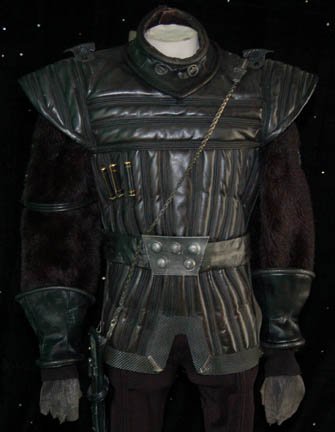 Ten precepts of Qes’a:
Ten precepts of Qes’a: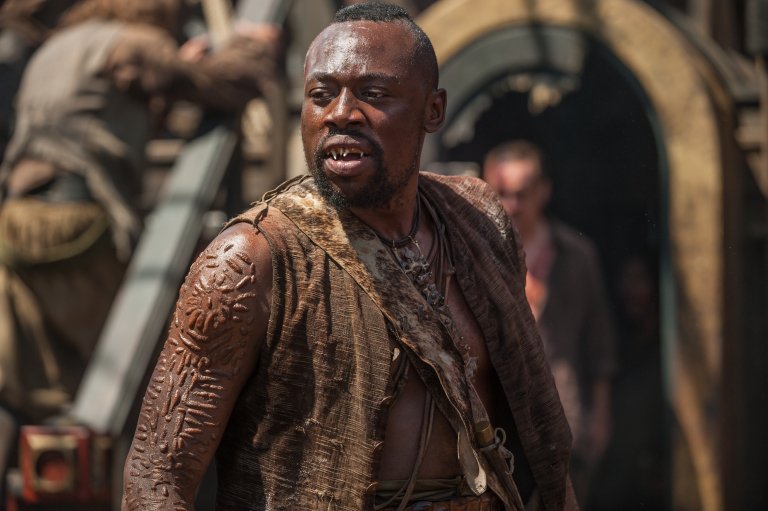 Klingon tattoos, scarification and other markings:
Klingon tattoos, scarification and other markings: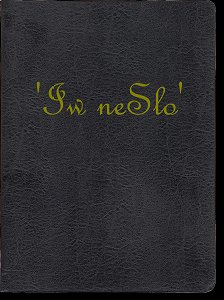 Klingons are a passionate people - perhaps to an extent only understood by Deltans. They feel anger and rage all the way through to lust and love - all felt with no holding back. This is reflected in Klingon Opera, which has a similarity in cases to the works of the German composer Richard Wagner. Whilst Klingon nobility and warriors look down on the lower castes of workers and scientists, there is a special pace for composers, poets and artists of the Klingon Empire as it is they that have the unenviable task of capturing the Klingon heart in their work. Such iconic works as the Mirror of Blood / "'Iw neSlo'" by Kovoragh match the PaQ Batlh for the number of Klingon households that possess it. Such a fine work that goes some way to capturing the essence of the Klingon people - their love, their passion, their rage and their honour: what makes the Klingons tick.
Klingons are a passionate people - perhaps to an extent only understood by Deltans. They feel anger and rage all the way through to lust and love - all felt with no holding back. This is reflected in Klingon Opera, which has a similarity in cases to the works of the German composer Richard Wagner. Whilst Klingon nobility and warriors look down on the lower castes of workers and scientists, there is a special pace for composers, poets and artists of the Klingon Empire as it is they that have the unenviable task of capturing the Klingon heart in their work. Such iconic works as the Mirror of Blood / "'Iw neSlo'" by Kovoragh match the PaQ Batlh for the number of Klingon households that possess it. Such a fine work that goes some way to capturing the essence of the Klingon people - their love, their passion, their rage and their honour: what makes the Klingons tick. 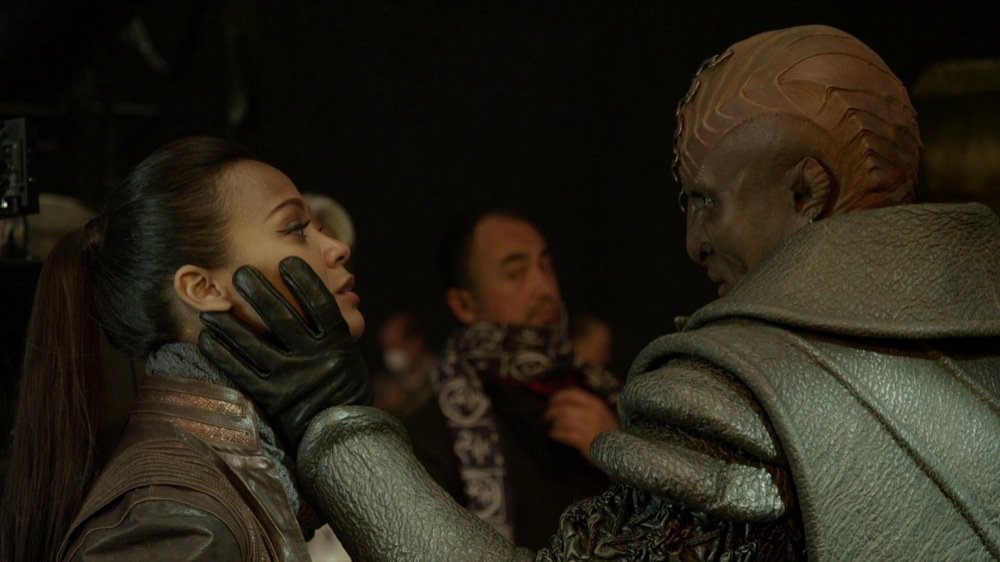
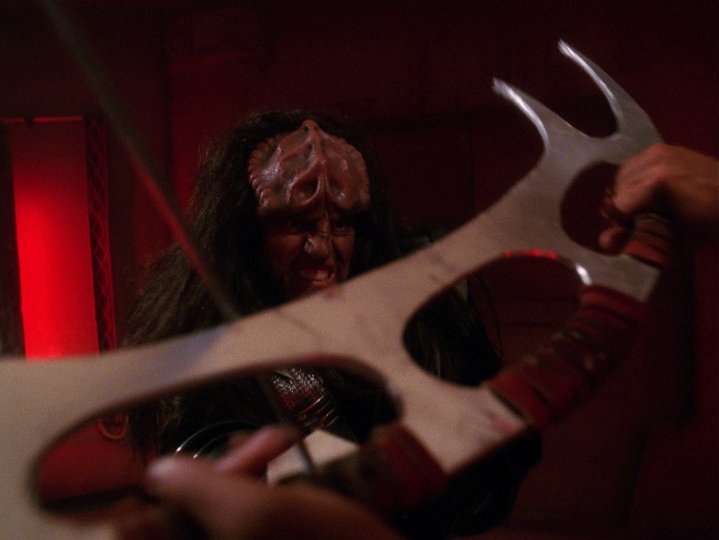
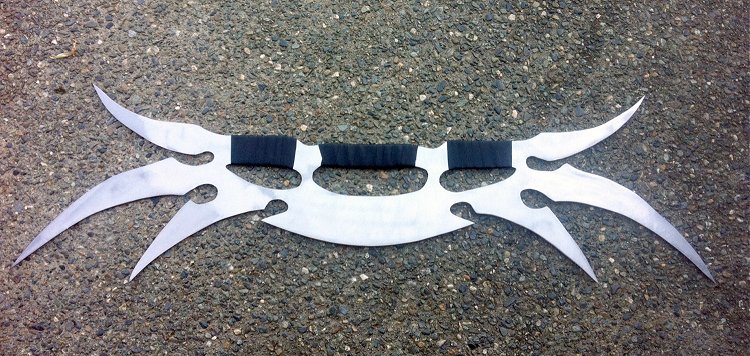
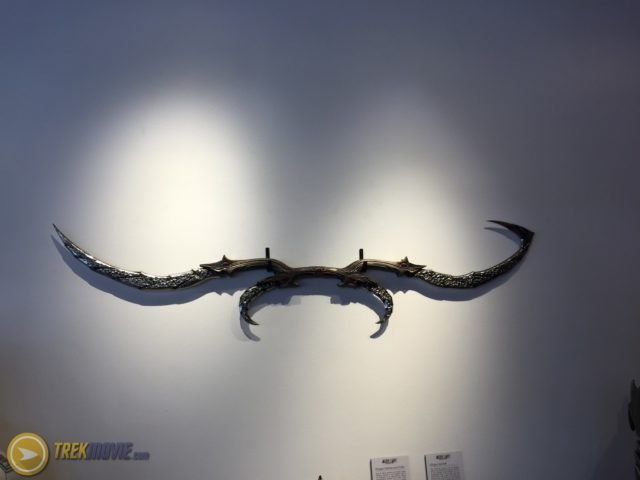
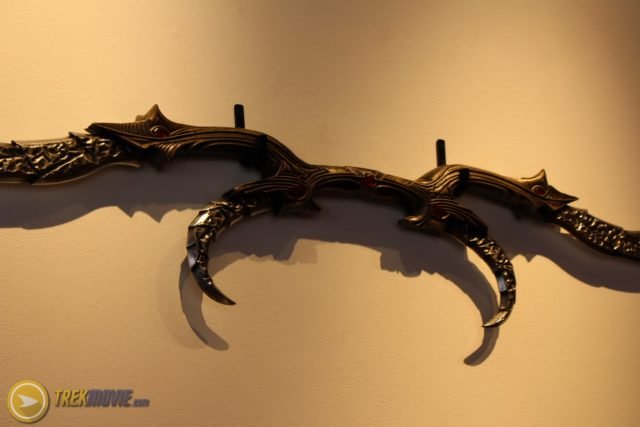
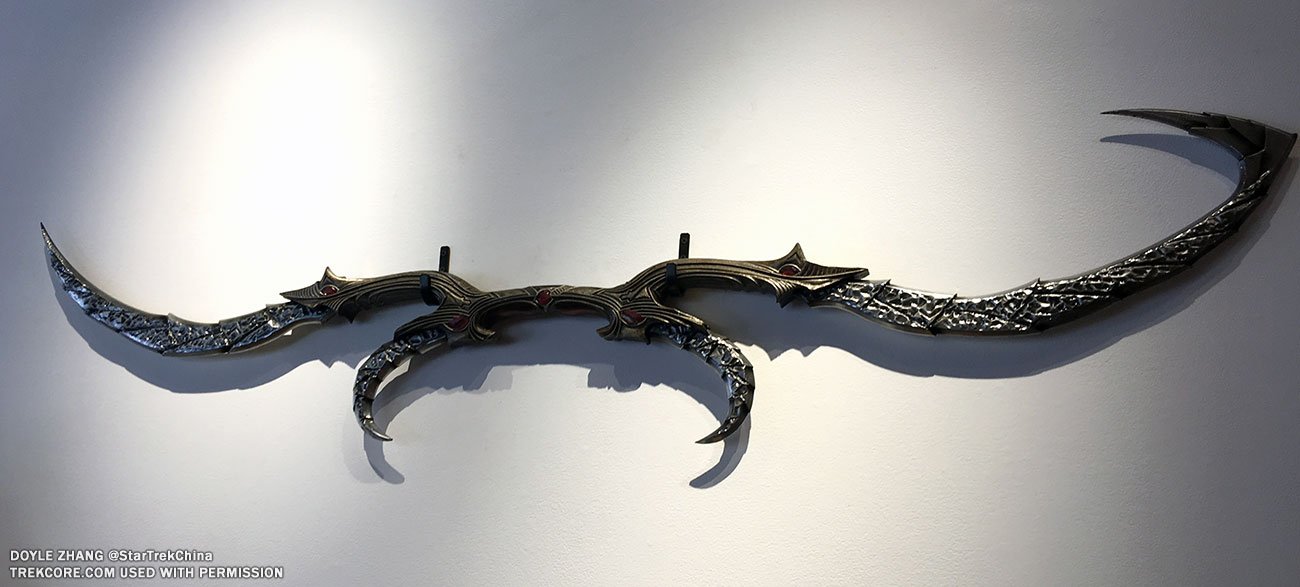
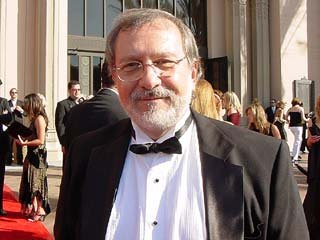 Michael Dorn - TNG's Lieutenant Worf - had been asking for a special personal weapon that only Worf would have. Ronald D Moore was all for it and went to martial artist Dan Curry (see right) to design the weapon. Dan had been thinking about a combinatin staff-sword weapon for some time and wanted something that honoured the spirit of martial arts for this Samurai-esque Klingon race. "I'd been imagining a curved weapon partially influenced by Himalayan weapons like the kukri [the wickedly curved knife of the Gurkhas of Nepal, arguably the most renowned fighting knife in the world]. I was also thinking about the Chinese double axe, Chinese fighting crescents, and the Tai Chi sword. I combined elements of all those things in order to come up with an ergonomically sound weapon." (Dan Curry - Star Trek: The Next Generation 365, p. 178)
Michael Dorn - TNG's Lieutenant Worf - had been asking for a special personal weapon that only Worf would have. Ronald D Moore was all for it and went to martial artist Dan Curry (see right) to design the weapon. Dan had been thinking about a combinatin staff-sword weapon for some time and wanted something that honoured the spirit of martial arts for this Samurai-esque Klingon race. "I'd been imagining a curved weapon partially influenced by Himalayan weapons like the kukri [the wickedly curved knife of the Gurkhas of Nepal, arguably the most renowned fighting knife in the world]. I was also thinking about the Chinese double axe, Chinese fighting crescents, and the Tai Chi sword. I combined elements of all those things in order to come up with an ergonomically sound weapon." (Dan Curry - Star Trek: The Next Generation 365, p. 178)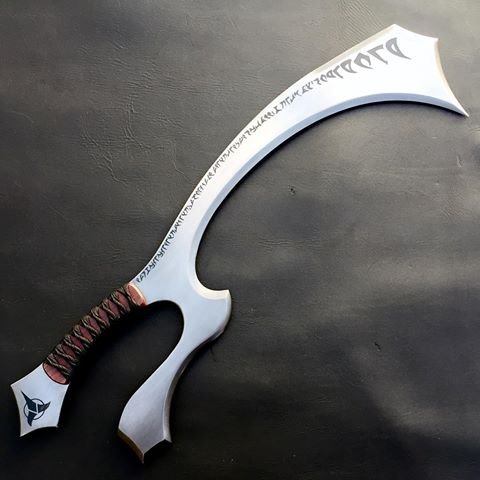
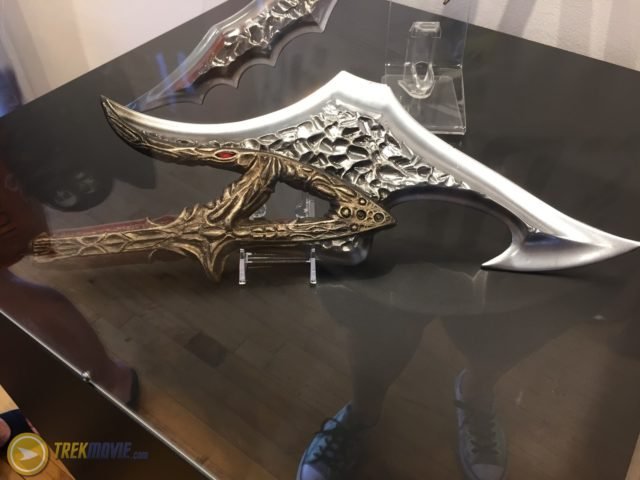
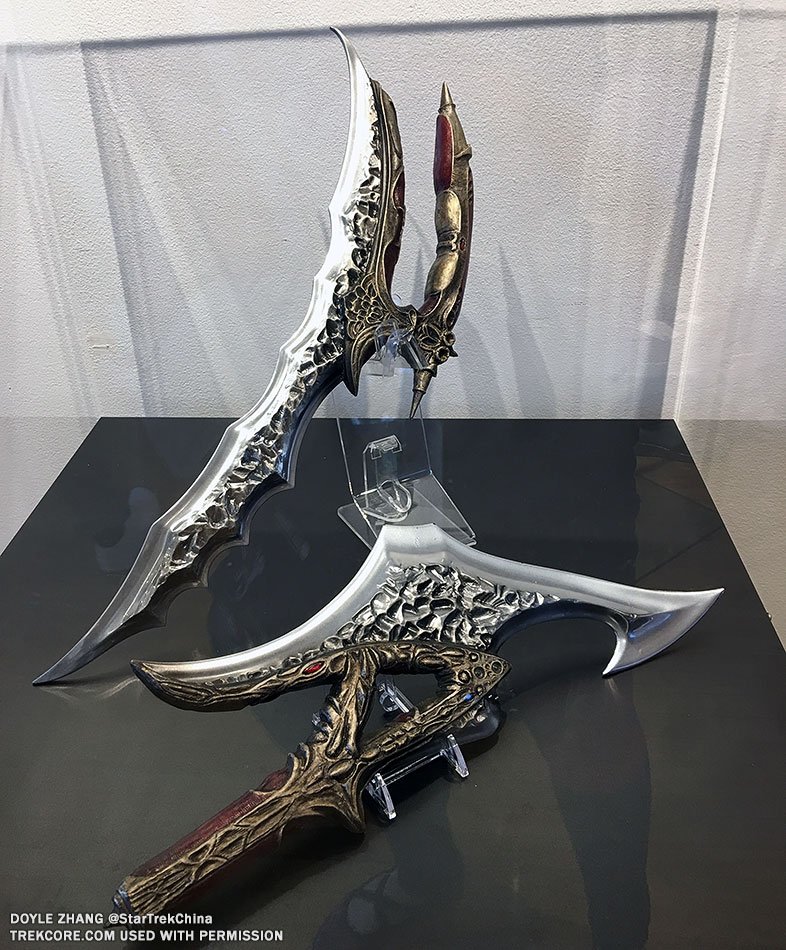
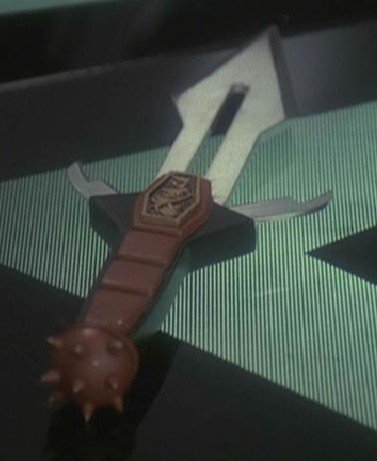
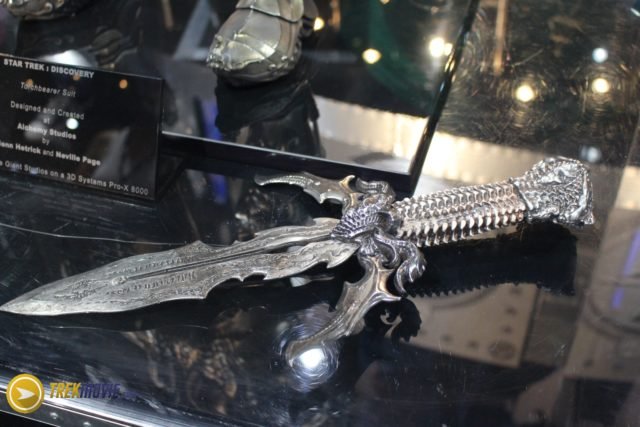
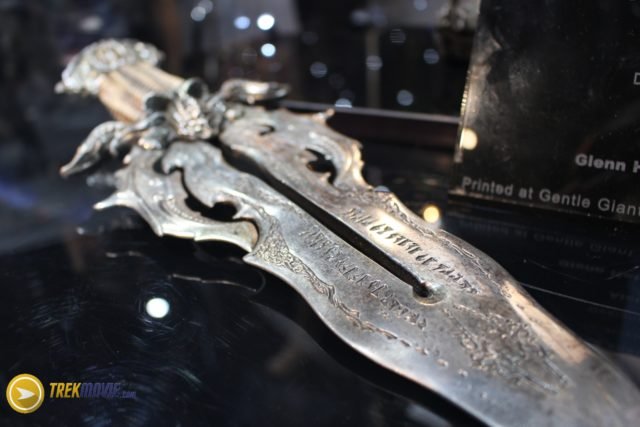
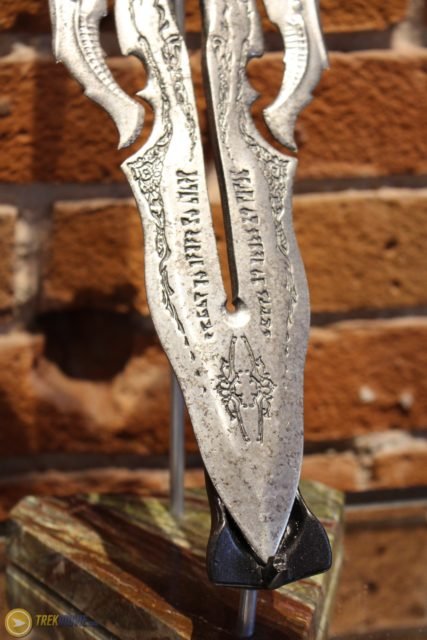

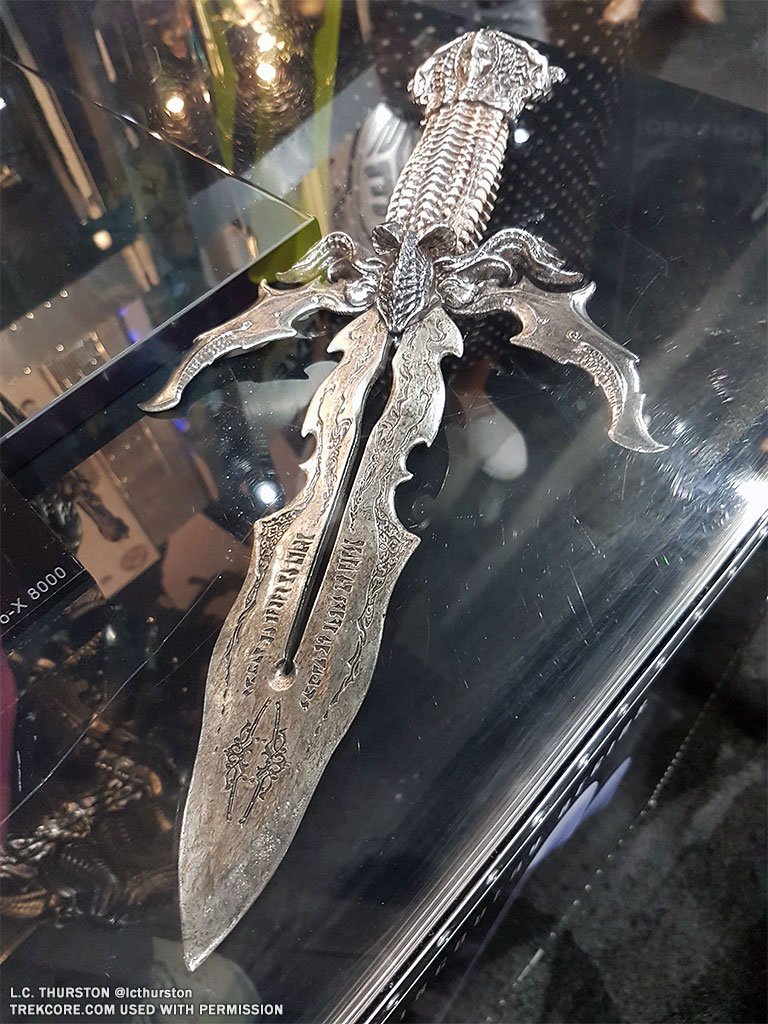
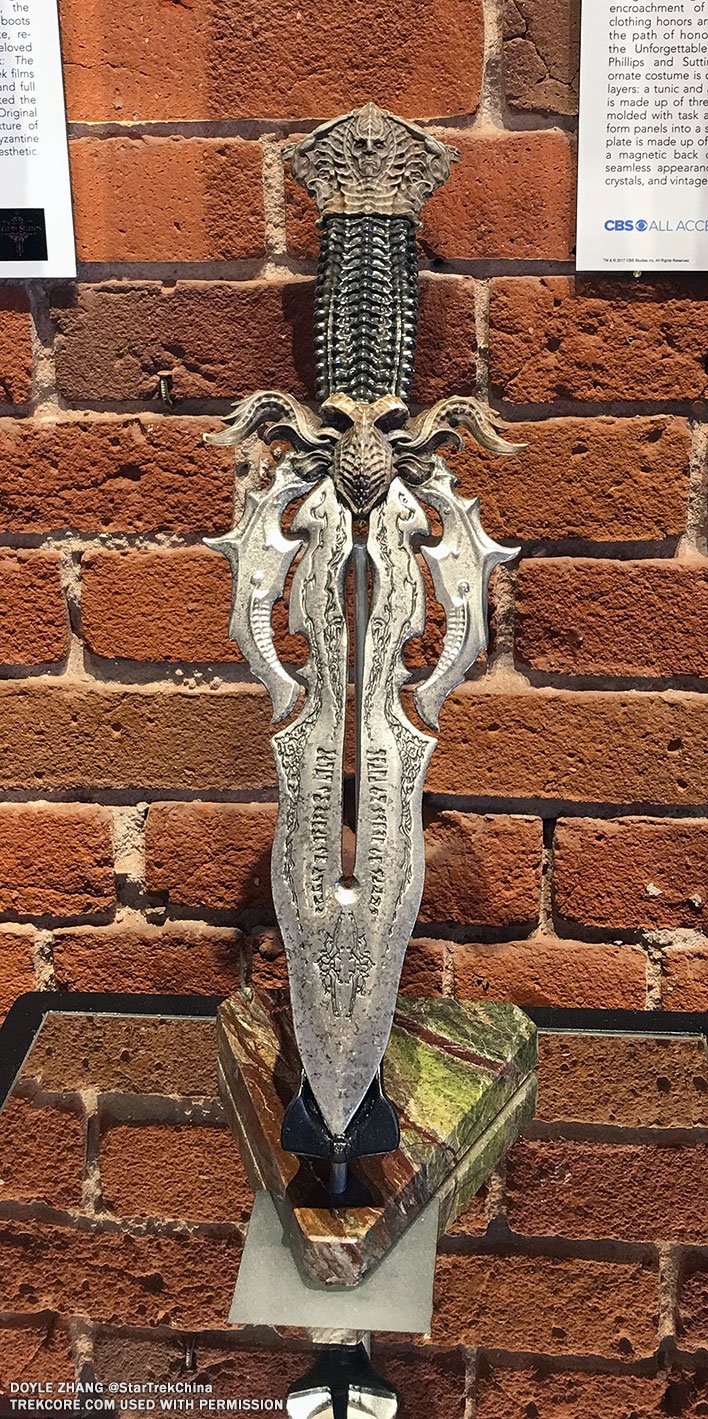
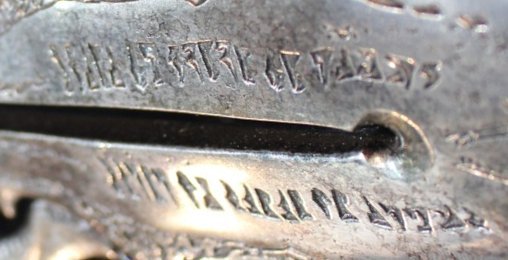

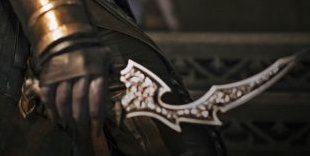
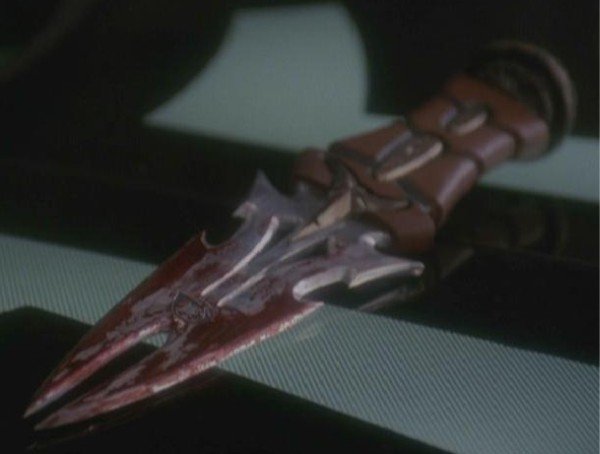
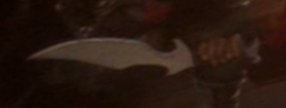
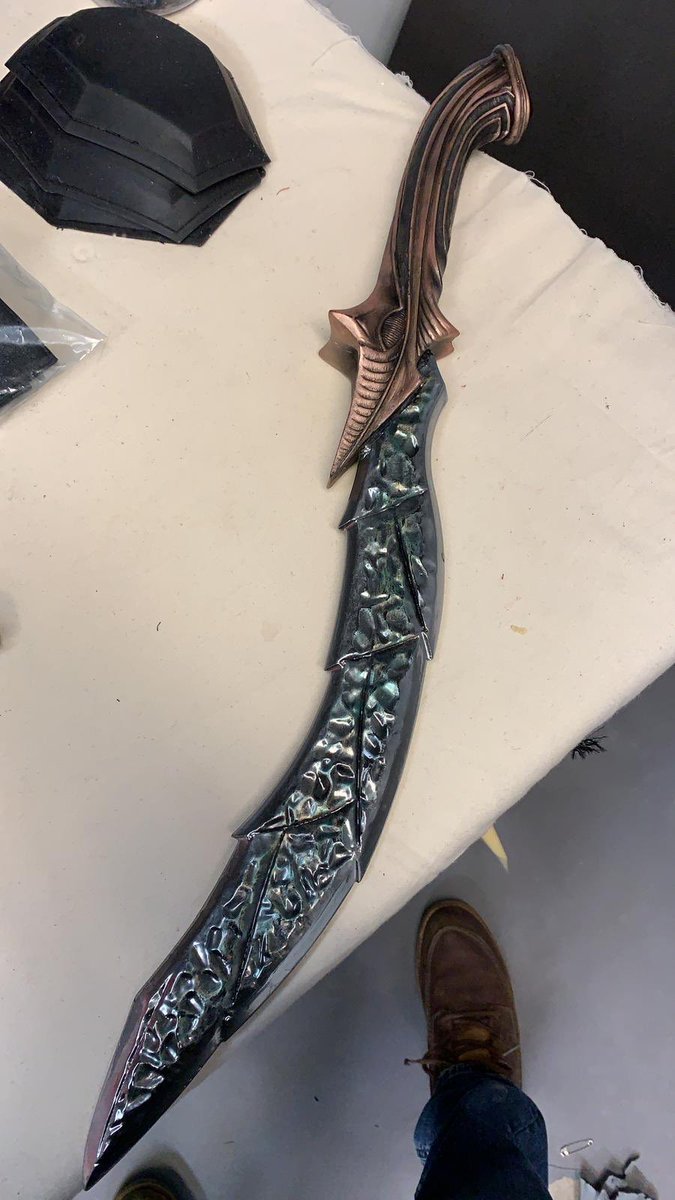
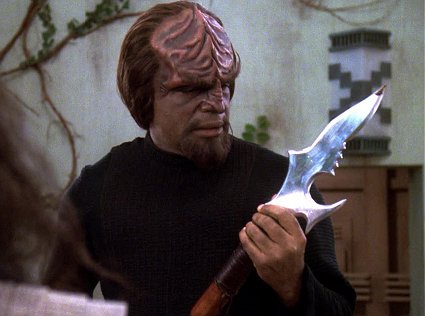

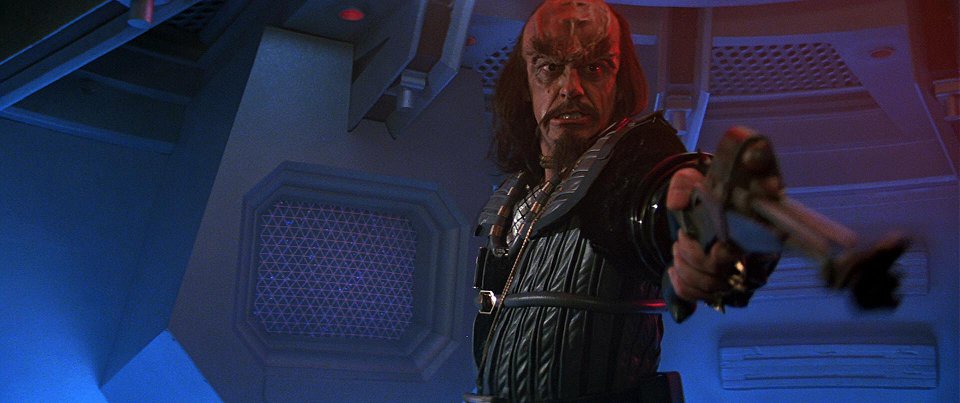
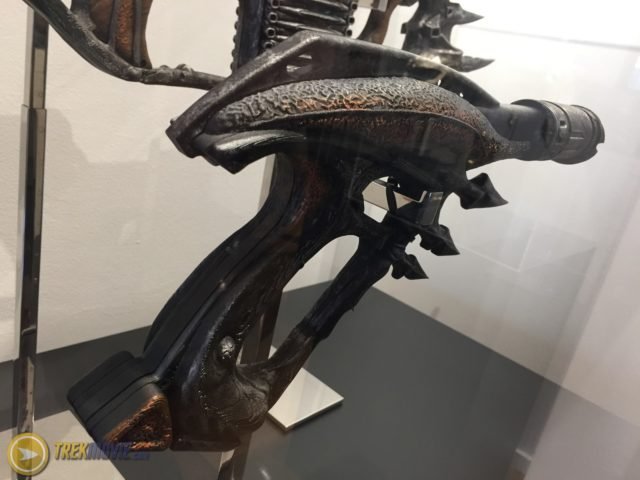
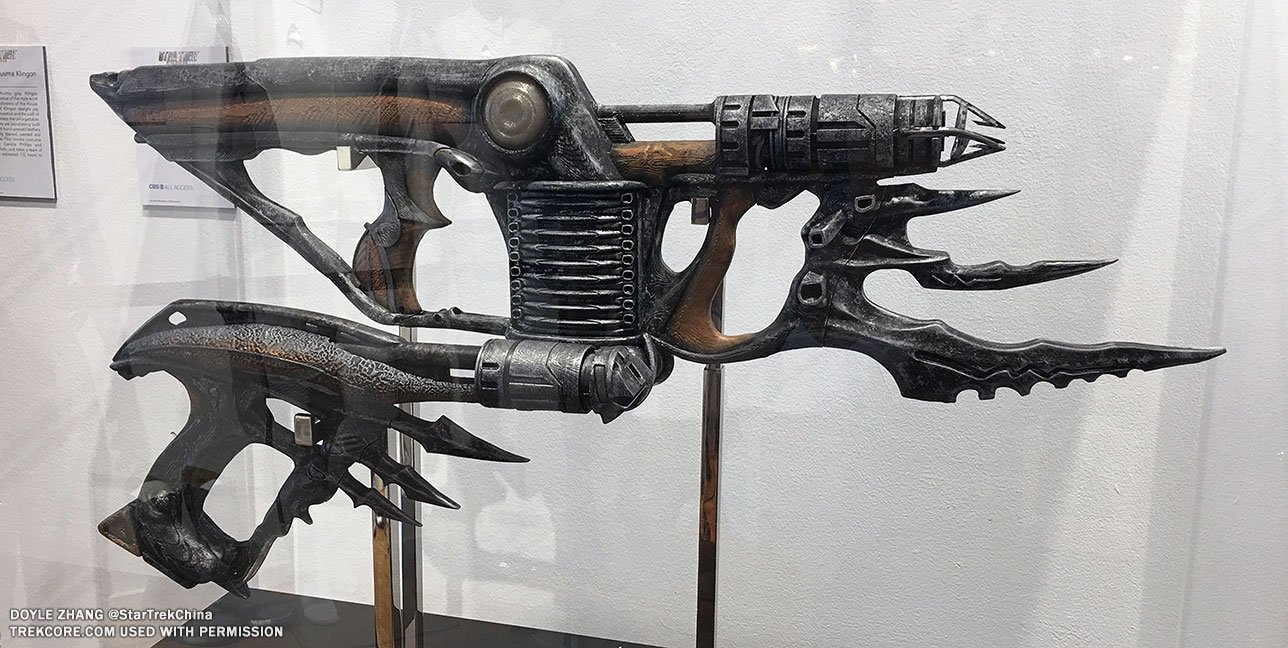
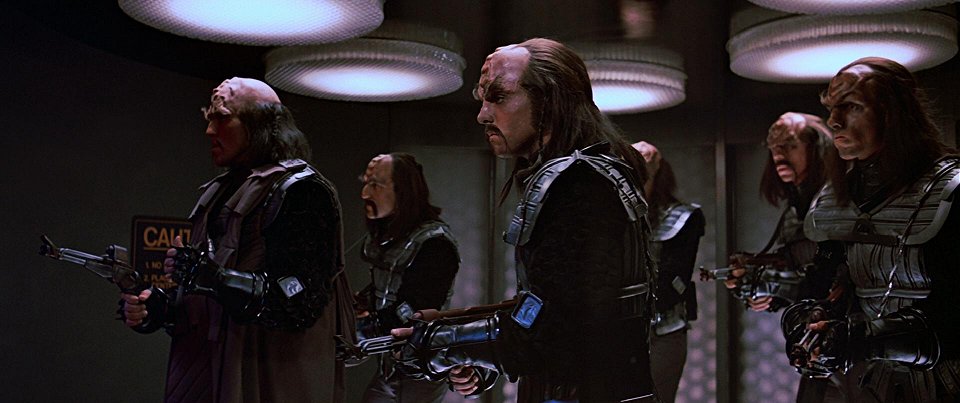
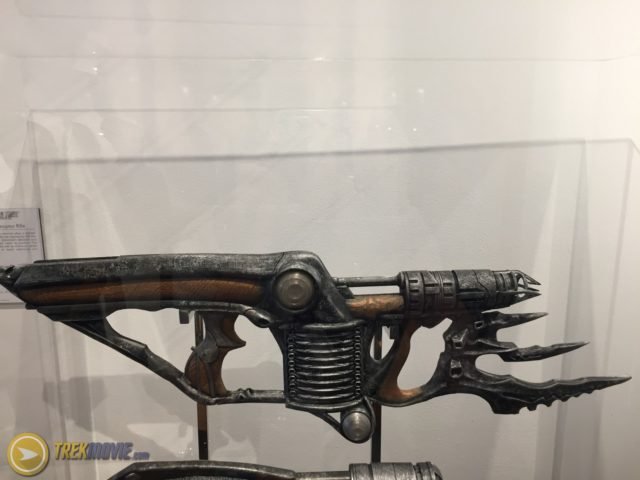
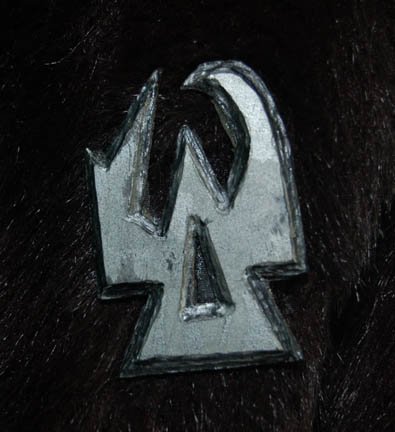 Leadership of a House
Leadership of a House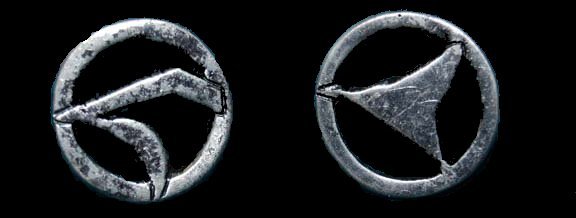 Discommendation
Discommendation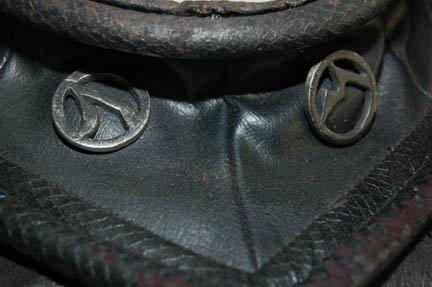 Ranks and advancement
Ranks and advancement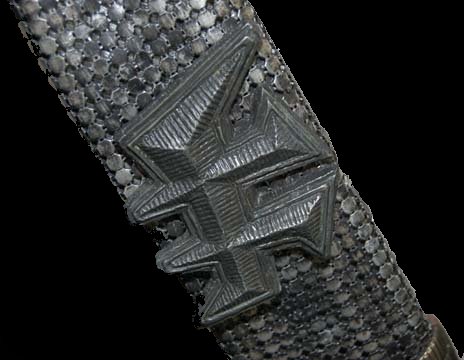 Klingons from a Great House wear a baldric, or sash, across their uniform that has badges for their House and any battle awards. A Klingon is proud of their House and status of that House. Rank insignia are worn on the collar of their battle uniform. The sleeve of a Klingon uniform has the insignia of their House proudly emblazoned on them, as does their d'ktahg knife.
Klingons from a Great House wear a baldric, or sash, across their uniform that has badges for their House and any battle awards. A Klingon is proud of their House and status of that House. Rank insignia are worn on the collar of their battle uniform. The sleeve of a Klingon uniform has the insignia of their House proudly emblazoned on them, as does their d'ktahg knife.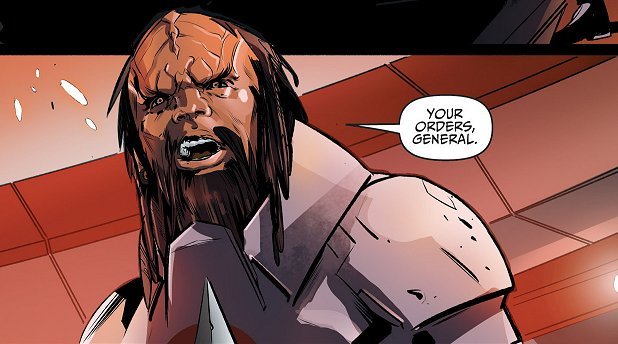
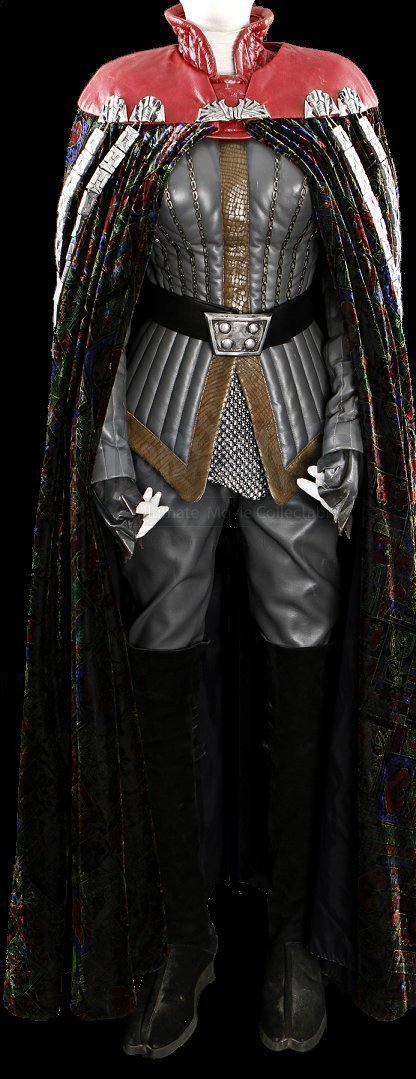
| Klingon Rank | Nearest English translation |
| la 'quv | supreme commander/ supreme warlord/ ***** general |
| 'aj | admiral/ **** general |
| Sa' | general/ *** general |
| totlh | commodore/ ** general |
| 'ech | brigadier/ * general |
| HoD | captain / colonel |
| la' | commander |
| Sogh | lieutenant |
| lagh | ensign |
| ne' | yeoman |
| bu' | sergeant |
| Da' | corporal |
| beq | crewman |
| mangHom | Cadet - note this is a description not a title |
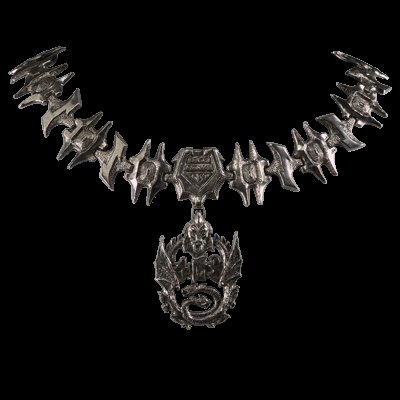 The Klingon Chancellor and High Council:
The Klingon Chancellor and High Council: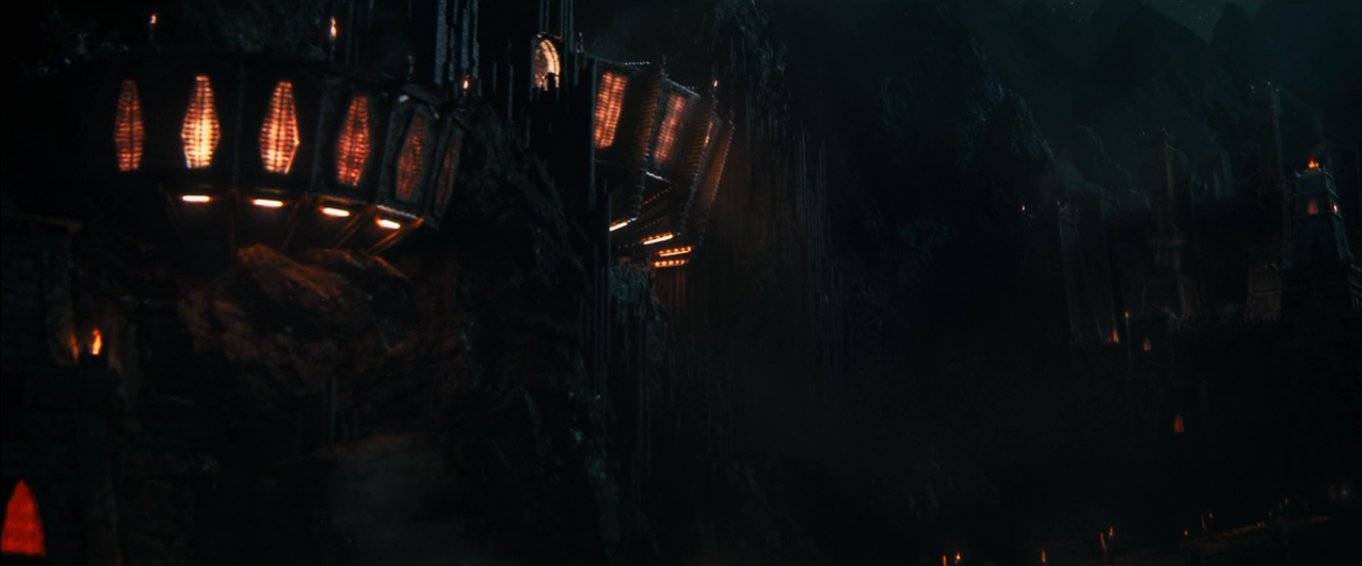
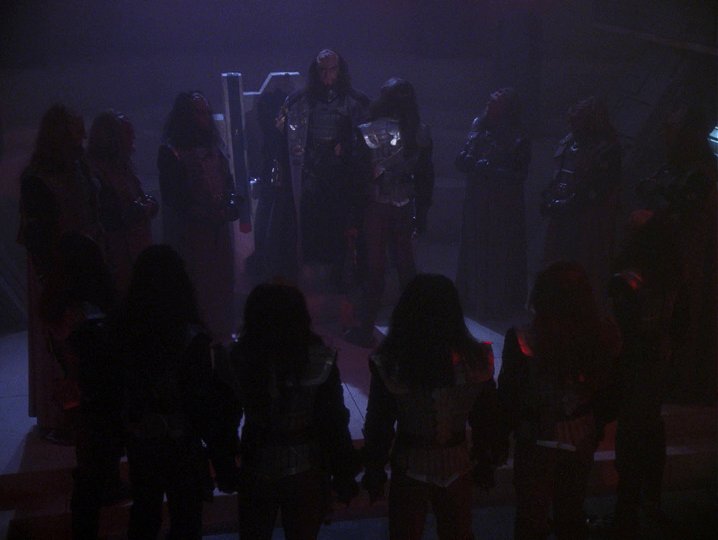 One thing to address is the propaganda versus reality of the High Council. The approximately 20 members of the High Council are all loyal to the Chancellor and anyone who is not with them is their enemy. The truth is that there are often one or more factions within the Klingon Empire, plotting for power. The Klingon Empire may have more than one person vying for leadership. Although it is true that the majority of the Houses and their fleets will support the Chancellor, if enough support the other leader then it is possible for two or more factions to exist at the same time; it would be too risky to the Empire to take on such a large fleet as the victors may then be too few in number to defend the Empire. This is how the Houses of Chang and Kruge survived betraying Chancellor Gorkon - their support was too strong for the House to be disbanded. They stayed in the fringes of the Empire and rebuilt. The High Council is the ultimate symbol of Kronosian superiority over the rest of the Empire. These twenty or so Klingons control the majority of the fleets and soldiers. At any one time the High Council must supervise the running of the Empire, also the fighting of the three or four conflicts of varying scale along their borders - and within them too. With these Klingons possessing multiple fleets, all are ranked 'ech (Brigadier) or higher.
One thing to address is the propaganda versus reality of the High Council. The approximately 20 members of the High Council are all loyal to the Chancellor and anyone who is not with them is their enemy. The truth is that there are often one or more factions within the Klingon Empire, plotting for power. The Klingon Empire may have more than one person vying for leadership. Although it is true that the majority of the Houses and their fleets will support the Chancellor, if enough support the other leader then it is possible for two or more factions to exist at the same time; it would be too risky to the Empire to take on such a large fleet as the victors may then be too few in number to defend the Empire. This is how the Houses of Chang and Kruge survived betraying Chancellor Gorkon - their support was too strong for the House to be disbanded. They stayed in the fringes of the Empire and rebuilt. The High Council is the ultimate symbol of Kronosian superiority over the rest of the Empire. These twenty or so Klingons control the majority of the fleets and soldiers. At any one time the High Council must supervise the running of the Empire, also the fighting of the three or four conflicts of varying scale along their borders - and within them too. With these Klingons possessing multiple fleets, all are ranked 'ech (Brigadier) or higher.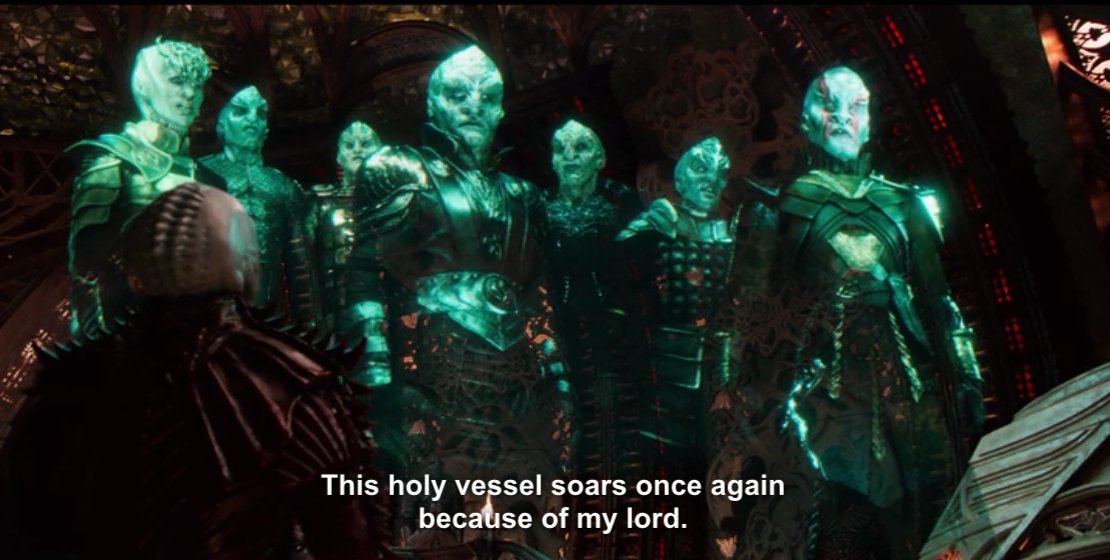
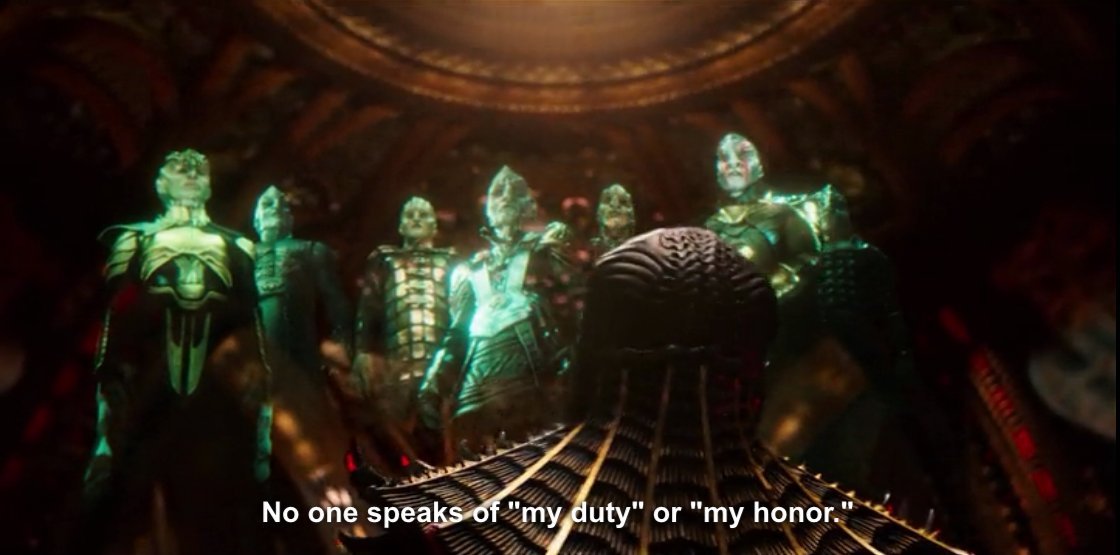
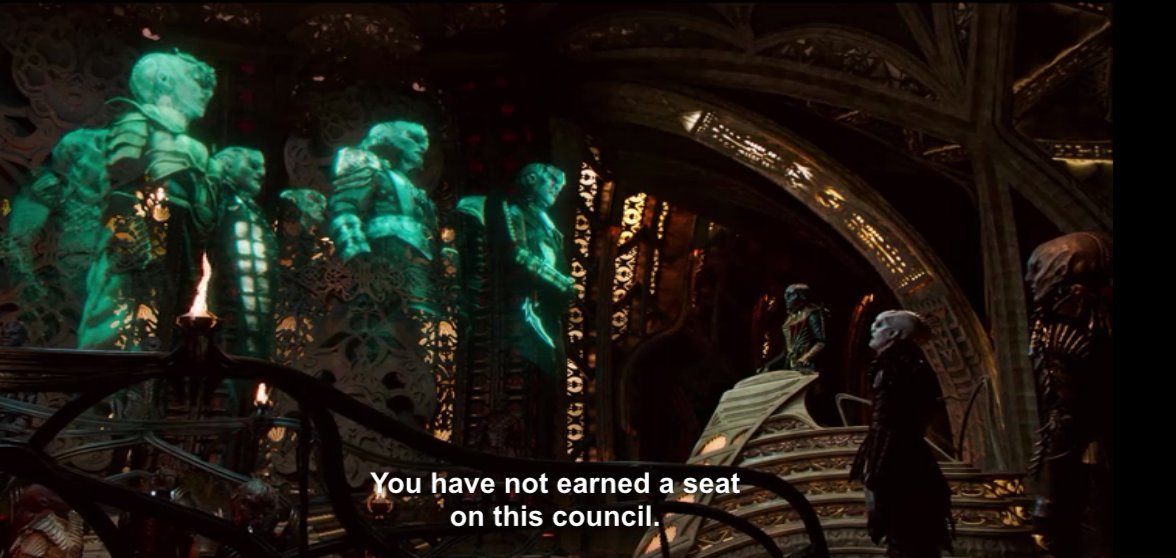
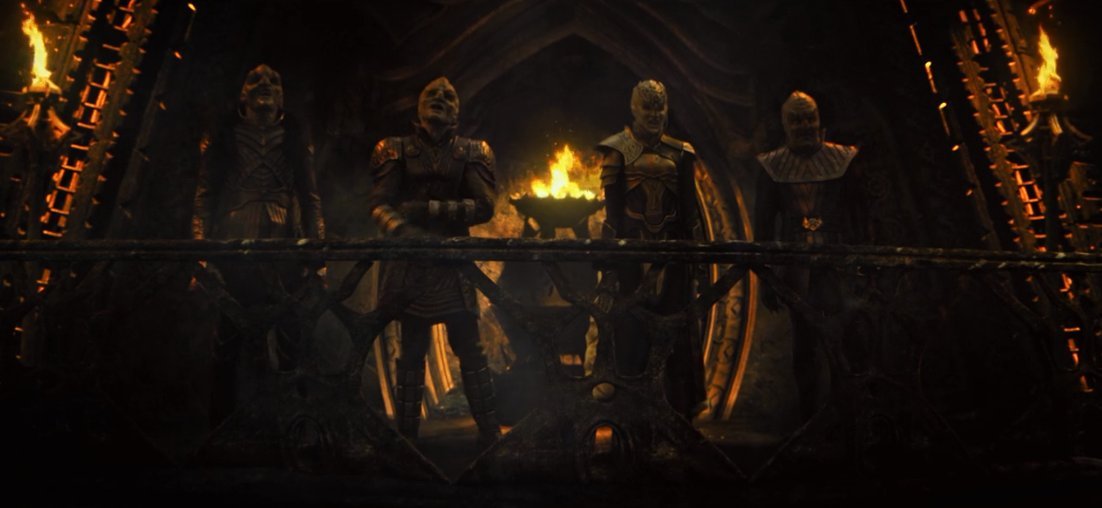
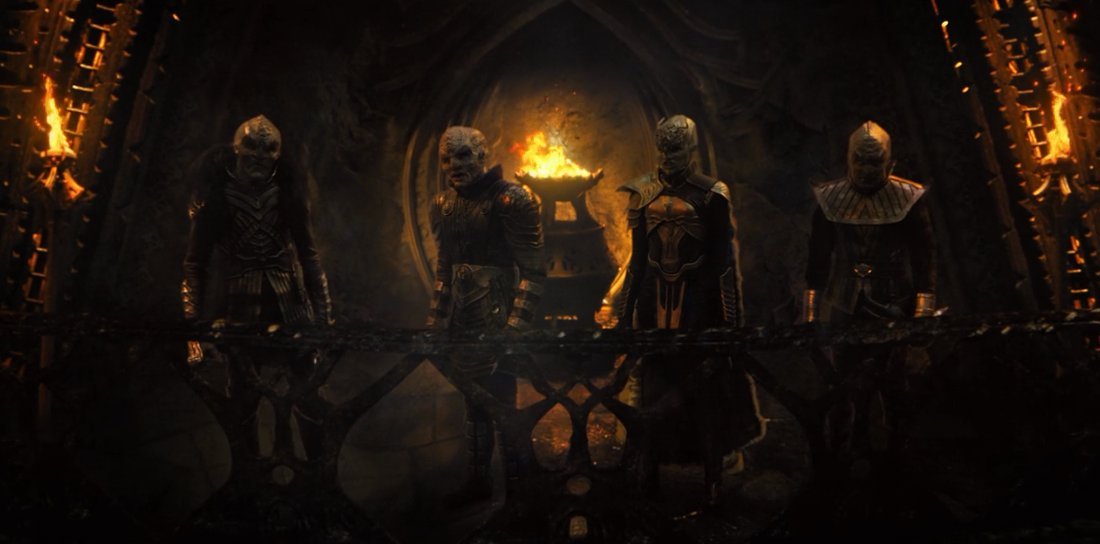
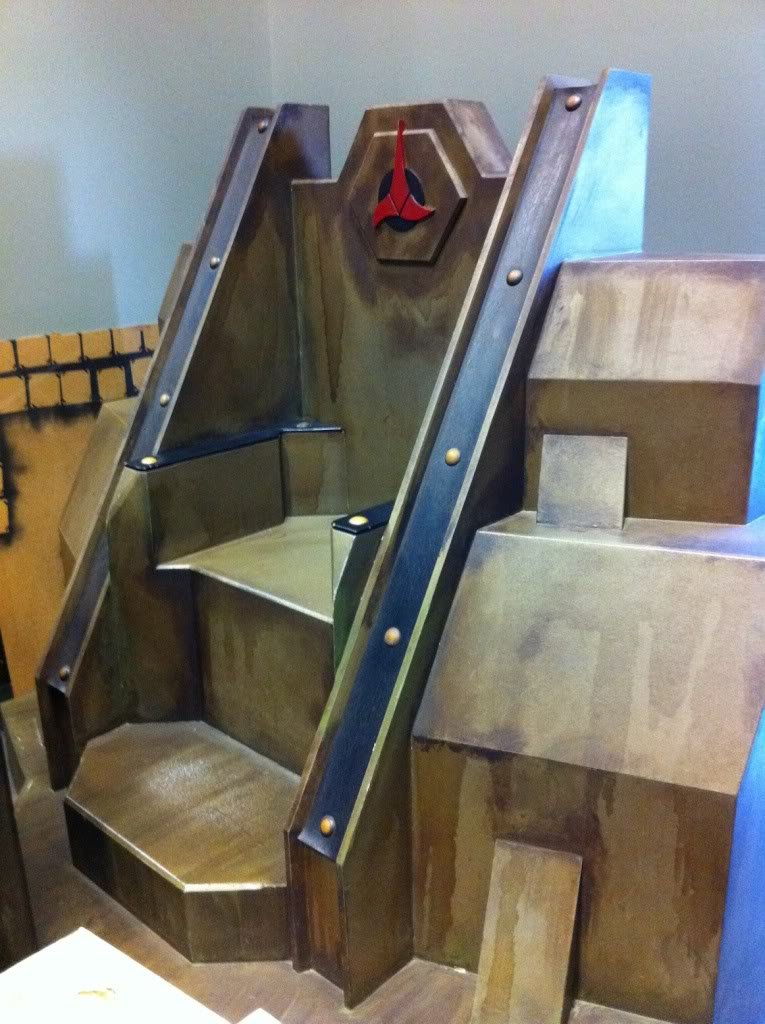
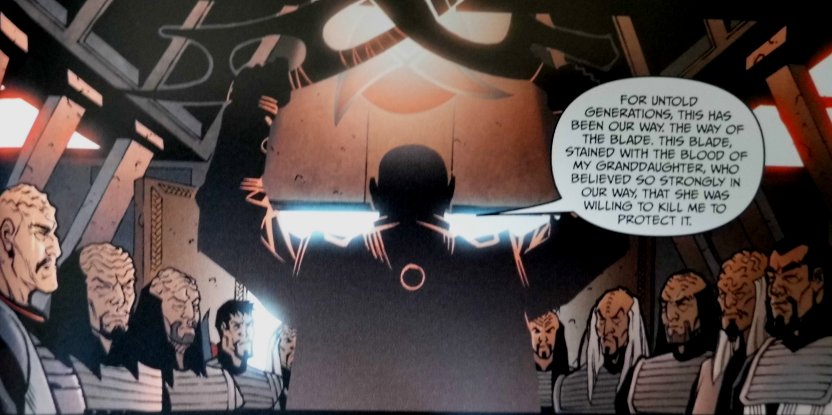
| Number | Great House | Notes |
| 1 | Antaak | The Klingons of this House feature a ridge down their face and chin. They are proud of their anatomical details and consider them a clear sign of their evolutionary superiority. They are also the scientists of the Empire. The House of Antaak has a primary goal of genetic perfection. This may put it at odds with other great Houses, and the Empire itself. The House has a secret research plan dedicated to saving a living sample, or samples, of the ngej life form. For analysis, deconstruction and using to alter their own DNA towards perfection. In addition to this, the House has a secret research facility that is examining the medical technology of Metar technology. The House of Antaak wishes to use the hyper-advanced technology to master, and improve, their own DNA. To be the perfect warriors. There are no shortages of volunteers from the ranks of this great House for the honour of being tested on. To be the first, perfect warrior. Despite the many risks and failures. |
|---|---|---|
| 2 | Chang | No one is the villain in their own story. Even Hitler thought what he was doing was the right thing for Germany. Chang saw the seeking of help from the Federation as a betrayal os the Empire and the end of the Ways of Kahless. He sought to stop this by his own sacrifice: killing Gorkon and anyone else who succeeded his to forward this plan of betrayal. Once this task was done, he would commit the Klingon version of Japanese Seppuku - Mauk-to'Vor - in order to restore honour to his House, despite his own damnation to Grethor. Only the unforeseen destruction by the U.S.S. Excelsior denied his this final move. A Death Message sent to the High Council early in Azetbur's reign would confirm these details, showing Chang's face to his enemies honourably. As a man who was the former Chief of Staff and Gorkon's friend, this is a portrayal of the sacrifice he made. Chang used dishounourable means to achieve an honourable aim; he'd be damned to hell, but the Empire will survive. Torlek is from Klingon Academy (2000) and is the rightful heir to the House. The House of Chang, traditionally, was the House of singers, poets and writers. Artists. Just as with the Japanese, he knew calligraphy and all of the essential works of literature of the Klingon people. General Chang was a military leader, but he never forgot his roots, quoting poetry and literature, knowing the written credo of the Klingon people. Chang understood the cultural heart of the Klingons and that is why he fought in the desperate way he did to save them from throwing their empire away. Chang made a deal with the devil - Ambassador Nanclus - to get an advanced cloaking device for his Bird of Prey that could fire whilst cloaked. Chang would rather sell his soul than see the Klingon Empire betrayed and destroyed by the policies of Chancellor Gorkon. |
| 3 | D'chok |  |
| 4 | D'ghor | This House are focussed on death in battle. All warriors must die in battle by the age of 40 or die in a ritual by fire,to enter Sto-Vo-Kor. This keeps the warriors young and strong. They wear gilded headdresses similiar to Egyptian priestesses with long chains of jewels dangling fom the perimeter along the side of the head. |
| 5 | Duras | The twins, Admiral Toral and General B'Etor, lead this House in the Northern region of the Klingon Empire in the Mempa Sector. Of the royal blood of Kahless himself, the House of Duras has historically had a difficult relationship with the throne. Power corrupts, and the House of Duras has fallen more than once. Mindful of this, the current leaders of the House are strictly loyal to the iron throne. They offer the support and powerbase for the House of Gorkon, as they did the House of Kesh previously. Identifiable by the crimson uniform attire of the Klingon Imperial Blood, claiming descendance from Kahless' bloodline. These are an honoured House in this time, loyal to the throne. Their power keeps the Koloth-Chang axis at bay. Another House I've done a 'Wicked' with to turn expectations upside down, based on them being trusted in 2344. |
| 6 | Gorkon | 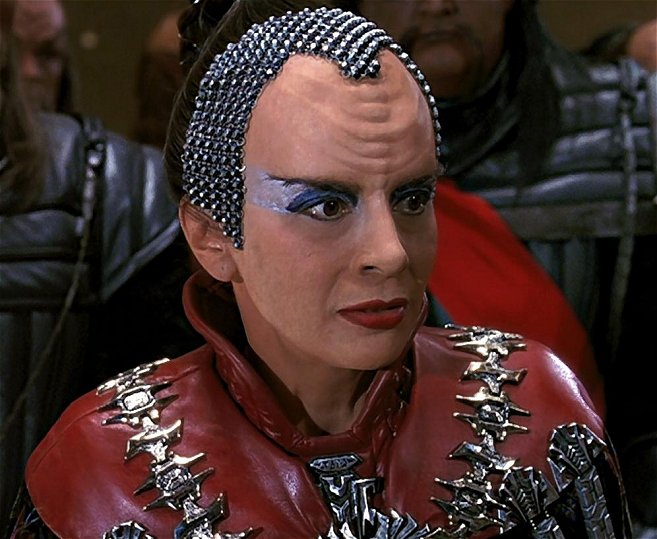 This is the current ruling House. In power since 2285, this is the House on the throne. The House of Gorkon is built upon the legacy of former General Gorkon, who travelled to Boreth and saw a vision (through time crystals) of the future of the Empire. Gorkon saw Qo'noS in flames and his daughter as the chancellor. This spurred Gorkon to move from the military to become a councillor. Gorkon then overthrew Chancellor Kesh in 2285 and ascended to the iron throne of the Klingon Empire. Gorkon approached the Federation for a ceasefire, looking to use his resources to save Qo'noS from its fate. Ironically, it was under the leadership of Gorkon that the home world was doomed. After the Metar were defeated by the combined efforts of the major Beta Quadrant powers, the Klingon Empire 'acquired'sme of the Metar technology. Gorkon wanted to make Qo'noS all-powerful and unassailable, by using the superior power generation technology of the Metar. Unfortunately, this went disasterously wrong and the moon of Praxis exploded. Gorkon made the House of Koryak accept the blame for the accident, to cover-up the real reason. The House of Noggra was chastised quietly and told to resolve the errors. Soon afterwards, Gorkon met with the Enterprise-A and was assassinated. His daughter moved quickly to succeed him, the future was made. This is the current ruling House. In power since 2285, this is the House on the throne. The House of Gorkon is built upon the legacy of former General Gorkon, who travelled to Boreth and saw a vision (through time crystals) of the future of the Empire. Gorkon saw Qo'noS in flames and his daughter as the chancellor. This spurred Gorkon to move from the military to become a councillor. Gorkon then overthrew Chancellor Kesh in 2285 and ascended to the iron throne of the Klingon Empire. Gorkon approached the Federation for a ceasefire, looking to use his resources to save Qo'noS from its fate. Ironically, it was under the leadership of Gorkon that the home world was doomed. After the Metar were defeated by the combined efforts of the major Beta Quadrant powers, the Klingon Empire 'acquired'sme of the Metar technology. Gorkon wanted to make Qo'noS all-powerful and unassailable, by using the superior power generation technology of the Metar. Unfortunately, this went disasterously wrong and the moon of Praxis exploded. Gorkon made the House of Koryak accept the blame for the accident, to cover-up the real reason. The House of Noggra was chastised quietly and told to resolve the errors. Soon afterwards, Gorkon met with the Enterprise-A and was assassinated. His daughter moved quickly to succeed him, the future was made. Azetbur has to find her way in season one to discover how badly Praxis damaged the Empire, who her enemies are - both foreign and domestic. She has to discover the practicalities of power as opposed to the theory, and watching secondhand. During the first season, the late General Chang casts a very long shadow across the High Council. Azetbur must learn to contend with this. She ends the first season by realising she must use power to hold the Empire together, or she'll lose the Empire and her life. |
| 7 | H'vakia | This is the House that believes in eating their dead to pass on the power of your ancestors through to you. They have skull and bone trophies on their uniforms as jewelry. Perhaps the most terrifying looking Klingons, and perhaps why the Kinshaya consider Klingons to be the ones who are demons. Inspired by the line by Alfred in Batman Vs Superman, this is the House where the leader has gone from good to cruel. Surviving her father and elder brother killed by Praxis, S'yrekka has been thrust into being the leader of the House: something she both thought and had been brought up to believe would never happen to her. All of a sudden she has to command the effort against a religious enemy with a zeal to kill Klingons at any cost. This has hardened her into a heartless killer to match their ferocity with her own. |
| 8 | J'Tal | These are the 'Gorn-buster' Klingons. Everything about them is supersize and designed to kill these very large lizards - as now seen in Strange New Worlds. The House has no aspirations to the throne, more than happy to have their own corner of the Empire (that lesser, smaller Klingons couldn't hold anyways). Things go a bit sideways when Waurg challenges Qo'mar to a duel, thinking the new House won't be used to the political corridors of power. Used to slaughtering 9 foot lizards, Qo'mar guts him like a fish and leaves the House of Kesh in a mess. The repercussions of this act will be felt across the High Council, Azetbur will be satisfied at bringing this loyal House into the council will secure her position for a while.
|
| 9 | Kahnrah | 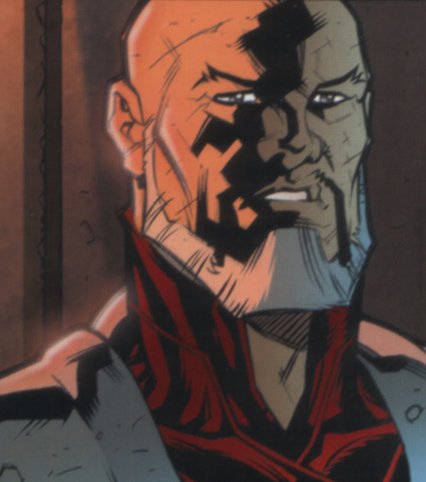 From the graphic novel Blood Will Tell, this is the sole survivor of his House, having killed his own granddaughter to get Gorkon's approach to the Federation accepted. The ultimate sacrifice. Upon his death, this House will need to select a successr not from his own bloodline. This will result in the name changing for the House and potentially a new direction. Houses rarely go extinct, more often than not being passed to a distant relative or loyal member of the House. From the graphic novel Blood Will Tell, this is the sole survivor of his House, having killed his own granddaughter to get Gorkon's approach to the Federation accepted. The ultimate sacrifice. Upon his death, this House will need to select a successr not from his own bloodline. This will result in the name changing for the House and potentially a new direction. Houses rarely go extinct, more often than not being passed to a distant relative or loyal member of the House.
|
| 10 | Kang | 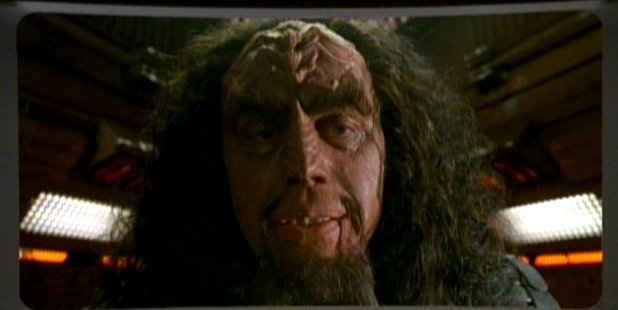 Kang is part of my character profiles on Klingons. After the recent death of his son, a the hands of the Albino, he has given himself over to the rage at the loss. His anger is blinding him to excesses of violence in the quest for vengeance. This threatens to destroy his reputation, his family and his House. He doesn't care, as he doesn't see a future. He now leaves a bodycount on his pursuit of his son's murderer. Kang is part of my character profiles on Klingons. After the recent death of his son, a the hands of the Albino, he has given himself over to the rage at the loss. His anger is blinding him to excesses of violence in the quest for vengeance. This threatens to destroy his reputation, his family and his House. He doesn't care, as he doesn't see a future. He now leaves a bodycount on his pursuit of his son's murderer.
|
| 11 | Kesh | 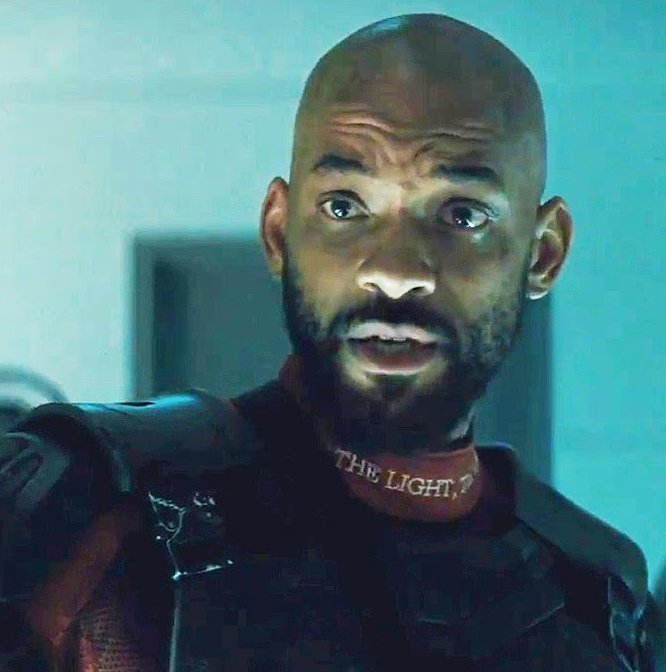 This House is the previous one to sit on the throne before Gorkon in 2285. Gorkon challenged and defeated Chancellor Kesh, killing him and ascending to the throne. Under the code of honour, the House couldn't seek revenge and could only challenge in the correct manner. This is a House humbled by fate that's still trying to find its feet. Waurg is the heir to the House and sees himself as the rightful heir to the Empire. He lost out to Azetbur for the throne and still wants to find a way to recover the power that his House lost. This House is the previous one to sit on the throne before Gorkon in 2285. Gorkon challenged and defeated Chancellor Kesh, killing him and ascending to the throne. Under the code of honour, the House couldn't seek revenge and could only challenge in the correct manner. This is a House humbled by fate that's still trying to find its feet. Waurg is the heir to the House and sees himself as the rightful heir to the Empire. He lost out to Azetbur for the throne and still wants to find a way to recover the power that his House lost.This is the great House of three brothers: Waurg, Torbek and Kaarg. They were brought up in the royal palace in the First City and were accustomed to being the sons of the Chancellor, Kesh. With Kesh gone and succeeded by Azetbur, a woman who swiftly moved to grab the throne after the death of Gorkon,in order to deny this House a chance to reclaim what is rightfully theirs. The House of Kesh wants back what it lost. They have the support of a large percentage of the great Houses and, with the right timing, Waurg knows he can claim his rightful place on the iron throne. |
| 12 | Kihreg | These are the weaponsmiths to the rich and powerful of the Empire. Their custom-made, bespoke weapons are named. Part of the prestige of having a weapon from this House. Their bladed weapons are highly sought after. Their look is like a blacksmith, with a Klingon mace as their sigil and signature weapon.
|
| 13 | Klavek | These are the warrior mages that Glenn Hetrick spoke of. They're knowledgeable in herbs and enhancement drugs. They are from the deserts of the worlds of the former Hur'Q homeworld/command colony in the middle of the Klingon Empire. Like the Freemen in Dune, they survive in climates that are hot and harsh, with little or no vegetation to eat. They dress in lighter shades of cream and white to reflect the sun. They're disinterested in the affairs of the High Council, although they do have a representative there. They are seen as useful for their knowledge of the body and mind. They are part visionaries, part herbalists and part warrior monks. As seen in Voyager, they seek the truth of the Scrolls of the Kuvah'magh. They are all-at-once, wise men/magi and holy warriors. They see Boreth as a throw back that worships the past, whereas they are looking to the future.
|
| 14 | Koloth | 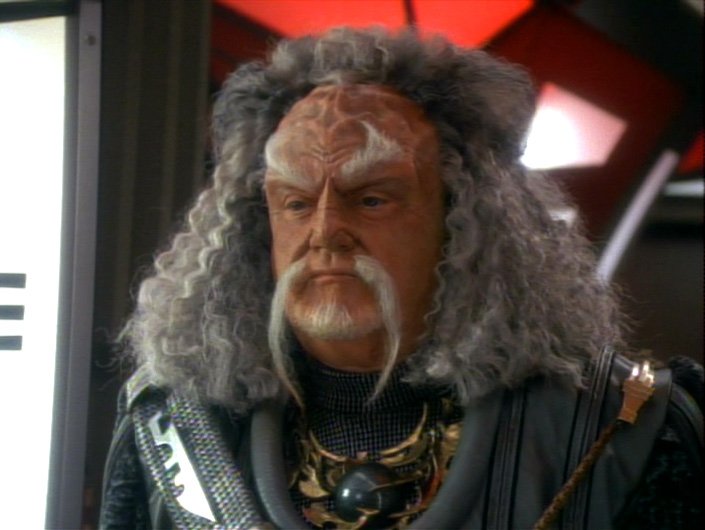 This is the noble House of the Klingon Empire. Koloth has an air around him of nobility and culture. After being embarrassed by Captain Kirk twice with tribbles, he is no fan of the Federation. Whilst followers of Gorkon line to make peace with their former adversaries, Koloth offers calm advice of caution. Advice that Kruge and Chang had both given, and both are now dead. The death message from Chang showed his intentions to be honourable, despite using dishonourable methods. Koloth is at pains to show this, and to put the brakes on the reforms of Azetbur. Praxis is a Klingon problem, that requires Klingon ways out of it; not the aid of outsiders who will domesticate and tame the Klingon people (which is what ironically happens by 2364...). This is NOT the Koloth from DS9, this is a bitter character who's just lost his firstborn in 2289 at the hands of the Albino. He hates Starfleet after being humiliated by them twice. He's certainly NOT in the mood for reconciliation. This is the noble House of the Klingon Empire. Koloth has an air around him of nobility and culture. After being embarrassed by Captain Kirk twice with tribbles, he is no fan of the Federation. Whilst followers of Gorkon line to make peace with their former adversaries, Koloth offers calm advice of caution. Advice that Kruge and Chang had both given, and both are now dead. The death message from Chang showed his intentions to be honourable, despite using dishonourable methods. Koloth is at pains to show this, and to put the brakes on the reforms of Azetbur. Praxis is a Klingon problem, that requires Klingon ways out of it; not the aid of outsiders who will domesticate and tame the Klingon people (which is what ironically happens by 2364...). This is NOT the Koloth from DS9, this is a bitter character who's just lost his firstborn in 2289 at the hands of the Albino. He hates Starfleet after being humiliated by them twice. He's certainly NOT in the mood for reconciliation.
|
| 15 | Konjah | |
| 16 | Kor | 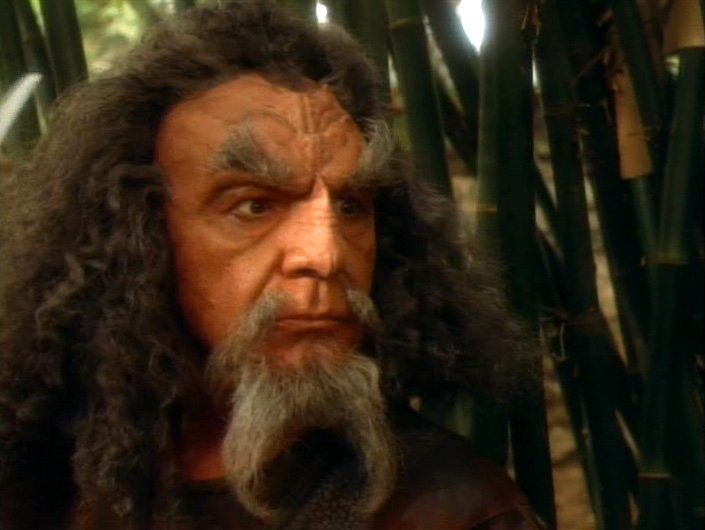 Another character fleshing out the Klingon architypes. Kor has changed following the murder of his firstborn son. He has sunk into the bottle and become a bitter, cruel drunk. Like the Russians, Klingons have a high incidence of alcoholism. Kor is rarely sober, the drink being his means of dealing with the pain. As when first seen in DS9, Kor is a daily drinker who is on the path of self-destruction and doesn't care. A sad end for a Dahar Master. Another character fleshing out the Klingon architypes. Kor has changed following the murder of his firstborn son. He has sunk into the bottle and become a bitter, cruel drunk. Like the Russians, Klingons have a high incidence of alcoholism. Kor is rarely sober, the drink being his means of dealing with the pain. As when first seen in DS9, Kor is a daily drinker who is on the path of self-destruction and doesn't care. A sad end for a Dahar Master. The explosion of Praxis cost Kor everything he had left. It scorched and obliterated his lands, his home, his wife, his remaining children and all the monuments and memories of his House. Kor was away at the time, hunting the murderer of his firstborn. When he returned to Qo'noS, EVERYTHING was gone. This was too much for the Dahar Master. He quickly sank into the bottom of a barrel of bloodwine and has never stopped drinking. Kor lost both his brother Kol and father, Kol-Sha, in the late 2250s. With the death of his wife and children, Kor is the last immediate member of his bloodline. Unless he remarries and has children, this is the end of his bloodline and upon his death the House of Kor will fall to the next blood relations. Where Kang and Koloth lost their firstborn too, Kor has now lost everything. He can replace buildings and trophies, he cannot replace his family. |
| 17 | Koryak | The mining House of the Empire. These are nocturnal Klingons, adapted from a world with little sunlight and underground dwellings. These Klingons have pale skin from lack of sunlight, poorly developed eyes and see in the infra-red part of the spectrum. Their sense of smell and hearing is greatly enhanced. Their equipment displays are tactile, rather than touchscreen. The average height of Klingons of House Koryak are shorter than average Klingons. Disgraced following the explosion of Praxis from overmining, this House is primarily tasked with finding new sources of energy for the Empire. These are the tunnelling moles of the Empire, more squat and capable of seeing in the dark better than other Klingons, they make good night warriors. This House are actually the scapegoats for the destruction of Praxis. The House of Noggra truly knows the answers. |
| 18 | Kozak | Later, in DS9 to become the House of Quark.
|
| 19 | K'toh-maag | These are the Shinobi/ninjas of the Klingon Empire. They wear shrouded wraps and sculpted leather. These are the assassins of the Empire. Officially seen with contempt as dishonourable for killing without showing their face, this House is unofficially used by every other great House as their assassins. They have a unique double scimitar / TajtIq that can come together to form a unique bat'leth. They have a unique fighting style and are very acrobatic, non-speaking and use hand gestures for silent operations. As they are considered damned to Fek'lhr, they adorn their weapons and armour with the Barge of the Dead. Members of this great House are smaller than average and very gymnastic in their build.
|
| 20 | Kuri | This is a House of Klin Zha masters. The House of the seniormost military leader, besides the Chancellor. Strategic thinkers and planners. There for the long game. Larger cranium than average Klingons. Cerebral in nature, rather than impulsive. More a general like Thrawn from Star Wars. Like other members of his House, Kuri tattoos himself for each battle fought and every victory attained. These are over all exposed flesh, to show successes. As with all victories, they fade with time. Fresh victories can be seen as bright, new ink on exposed flesh. Admiral Kuri has a whole body artwork that shows his whole military career: from birth to his victories as an admiral. Like others in his House, his fighting style is thoughtful and deliberate. Minimal movements, minimal energy wasted; kill strikes with every targeted movement. Every choice and move, deliberate. Kuri has had a career on a D-7 K't'inga class battlecruiser, later Warrior's Anger class command cruiser in campaigns against the Romulans and Kinshaya. Like other aspects of his life, Kuri's attendance at the Great Hall is carefully timed and chosen for a reason.
| 21 | Mo'Kai |
| 22 | Mogh | 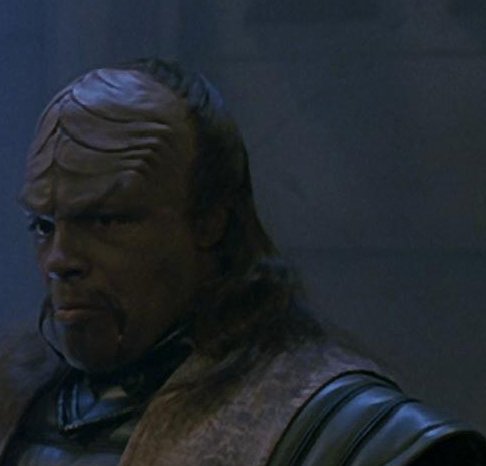 Made famous in TNG for Worf, and subsequently this Worf, Colonel who defended Kirk and McCoy in ST:VI, are cast as a House of farmers. This is due to agriculture being a major plotpoint in the Excelsior series. The character would have a lot of action and dialogue so it made sense to use a character we already knew. I wanted to do a 'Wicked' and turn thenotion of Worf's House on it's head. Where people expected a mighty warrior House, instead we have farmers who tend crops of gagh - a vital role in the Empire. Colonel Worf was forced to defend Kirk and would have shared his fate if he'd been executed (as was planned). The signature weapon of this House is an axe based on a Klingon farming plough. Based on the planet Khitomer, this House is closely affiliated to the House of Duras in this time - as would later come back to bite them in 2344 when they're framed for betraying the Empire. Made famous in TNG for Worf, and subsequently this Worf, Colonel who defended Kirk and McCoy in ST:VI, are cast as a House of farmers. This is due to agriculture being a major plotpoint in the Excelsior series. The character would have a lot of action and dialogue so it made sense to use a character we already knew. I wanted to do a 'Wicked' and turn thenotion of Worf's House on it's head. Where people expected a mighty warrior House, instead we have farmers who tend crops of gagh - a vital role in the Empire. Colonel Worf was forced to defend Kirk and would have shared his fate if he'd been executed (as was planned). The signature weapon of this House is an axe based on a Klingon farming plough. Based on the planet Khitomer, this House is closely affiliated to the House of Duras in this time - as would later come back to bite them in 2344 when they're framed for betraying the Empire.
|
| 23 | Noggra | These are the retro-engineering specialists, as designed by Glenn Hetrick. Klingon's didn't design their technology, most of it was 'acquired' when they overthrew the Hur'Q overlords, taking over their equipment and empire. House Noggra are adept at reverse-engineering technology, developing cloaking technology from the Romulans, photon torpedo and shield technology were from the Hur'Q. These Klingons have wearable technology to enhance their fighting skills the Tony Starks and Iron Man of the Klingon Empire. Would love to get their hands on Borg technology. If they knew about it. The House of Noggra have been reverse-engineering Metar technological remnants, ever since the Tabule Rasa Campaign was resolved. The House of Noggra hold a dark secret. They tried to use Metar energy creation technology to 'supercharge' Praxis and give the homeworld unlimited power. This backfired, the moon exploded and left the Empire where it is now. As the Empire doesn;t want to admit to their captured technology and experiments, the cause of the explosion was put down to 'insufficent safety measures' and the House of Koryak took the fall instead, to protect the Empire. One of the smaller of the noble Houses of the Empire. |
| 24 | Pagh | 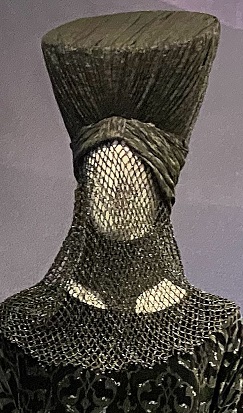 Literally, the House of Nothing. These are the Warrior Monks of Boreth. Like the Night Watch in Games of Thrones, these warriors have rejected all of their previous House names and titles. They follow the way of Kahless. They serve in the High Council much like the religious leaders do in the British House of Lords. They are the voice of Kahless and they can cite all of the stories of Kahless, Molor, Morath and Lukara all from memory. These are the ecclesiastical Knights Templar of the Klingon Empire. They'll fight for the soul of the Klingon people. They wear robes over a light armour plating. They have a square, boxy headdress like the Bene Gesserit in the Dune movies. Literally, the House of Nothing. These are the Warrior Monks of Boreth. Like the Night Watch in Games of Thrones, these warriors have rejected all of their previous House names and titles. They follow the way of Kahless. They serve in the High Council much like the religious leaders do in the British House of Lords. They are the voice of Kahless and they can cite all of the stories of Kahless, Molor, Morath and Lukara all from memory. These are the ecclesiastical Knights Templar of the Klingon Empire. They'll fight for the soul of the Klingon people. They wear robes over a light armour plating. They have a square, boxy headdress like the Bene Gesserit in the Dune movies.
|
